 Office
Office
2020 K Street
A downtown Washington office property with strong sustainability credentials
In a recent conversation,1 Dominic Silman and Brian Klinksiek revisited LaSalle’s ISA Outlook themes amid 2025’s rapidly developing and unpredictable geopolitical and macroeconomic climate.
Brian Klinksiek (BK):
The theme of our ISA Outlook 2025 was the ‘Dawn of a New Real Estate Cycle’. Looking back six months later, we’ve been through a rollercoaster of policy change with meaningful shifts in the economic narrative. We covered this in two recent Briefing notes. In the first, we recommended that investors “work backwards” from strategic actions that make sense regardless of macropolitical outcomes; in the second, we pointed to signals from key relativities among asset classes, geographies, and sectors. All those recommendations still stand, but we provide a further update on recent developments in our latest LaSalle Macro Quarterly deck (LMQ), which we released today. Thankfully, many of the most extreme US policies – such as the full “Liberation Day” tariffs – have been paused, at least for now. But as we have pointed out, uncertainty itself has a cost.
Beyond the trade war, in the past two weeks a real kinetic war unfolded between Israel and Iran, with the US stepping in as well. This is driving energy price volatility and, in the unlikely case of a severe escalation, could lead to the destruction of energy infrastructure in the region, or to the closure of the Strait of Hormuz, a major chokepoint on the global energy map.2 Both could potentially bring stagflation to the global economy.3 In the background, the global political calendar has also been very busy – we’ve seen election results in Canada, Australia, South Korea and Poland, as well as the new German coalition’s shift toward higher spending and investment. Given all this change, where do we stand today? Do we still think it’s the dawn of a new real estate cycle?
“It’s helpful to take a step back and ask: What is actually changing and what is likely to stay the same?”
Dominic Silman (DS):
As you say, it’s been quite a six months! It’s helpful to take a step back and ask: What is actually changing and what is likely to stay the same? For example, despite the movement and uncertainty, it bears mentioning how little has so far changed on the ground in property markets, which we will talk about later.
Among the many changes, we should also ask which are likely temporary and which are permanent. April’s extreme volatility has so far proven temporary; markets are a lot calmer today.4 It reminds me of that British Second World War poster: ‘Keep Calm and Carry On’. Are we carrying on? Certainly. Are markets actually keeping too calm recently, especially given still elevated uncertainty? I think there’s a risk of too much calmness, and too much of an instinct to assume that everything always works out absolutely fine and reverts to “normal”.
Want to read the rest of the conversation? Download the PDF
Footnotes
1 LaSalle has utilised JLL GPT to transform a transcript of a recorded verbal conversation that is documented in this publication. JLL GPT is a secure, in-house generative artificial intelligence (AI) interface that draws on the underlying models from OpenAI’s ChatGPT and other AI firms.
2 Source: Signum Global Advisors, Piper Sandler
3 Source: Oxford Economics
4 As indicated by a significant moderation in indicators of market volatility, such as the VIX for US equities and the MOVE index for US government bonds. Source: LaSalle analysis of Refinitiv data.
Important notice and disclaimer
This publication does not constitute an offer to sell, or the solicitation of an offer to buy, any securities or any interests in any investment products advised by, or the advisory services of, LaSalle Investment Management (together with its global investment advisory affiliates, “LaSalle”). This publication has been prepared without regard to the specific investment objectives, financial situation or particular needs of recipients and under no circumstances is this publication on its own intended to be, or serve as, investment advice. The discussions set forth in this publication are intended for informational purposes only, do not constitute investment advice and are subject to correction, completion and amendment without notice. Further, nothing herein constitutes legal or tax advice. LaSalle takes reasonable steps to ensure the quality of AI-generated content, however LaSalle cannot guarantee the accuracy of AI-generated content. LaSalle does not accept liability for any errors or omissions in the content produced by AI technology and advise that recipients exercise caution when relying on such content. LaSalle is not responsible for consequences which may arise from recipients’ reliance on AI-generated content. Recipients should exercise discretion and seek expert advice when making decisions based on automated information. Additionally, LaSalle reserves the right to modify or remove AI-generated content at any time without prior notice. Prior to making any investment, an investor should consult with its own investment, accounting, legal and tax advisers to independently evaluate the risks, consequences and suitability of that investment. LaSalle has taken reasonable care to ensure that the information contained in this publication is accurate and has been obtained from reliable sources. Any opinions, forecasts, projections or other statements that are made in this publication are forward-looking statements. Although LaSalle believes that the expectations reflected in such forward-looking statements are reasonable, they do involve a number of assumptions, risks and uncertainties. Accordingly, LaSalle does not make any express or implied representation or warranty and no responsibility is accepted with respect to the adequacy, accuracy, completeness or reasonableness of the facts, opinions, estimates, forecasts, or other information set out in this publication or any further information, written or oral notice, or other document at any time supplied in connection with this publication. LaSalle does not undertake and is under no obligation to update or keep current the information or content contained in this publication for future events. LaSalle does not accept any liability in negligence or otherwise for any loss or damage suffered by any party resulting from reliance on this publication and nothing contained herein shall be relied upon as a promise or guarantee regarding any future events or performance. By accepting receipt of this publication, the recipient agrees not to distribute, offer or sell this publication or copies of it and agrees not to make use of the publication other than for its own general information purposes.
Copyright © LaSalle Investment Management 2025. All rights reserved. No part of this document may be reproduced by any means, whether graphically, electronically, mechanically or otherwise howsoever, including without limitation photocopying and recording on magnetic tape, or included in any information store and/or retrieval system without prior written permission of LaSalle Investment Management.
Want to read more?
Industrial outdoor storage (IOS) real estate is not new, but it has only recently been given a name and a place in institutional investment portfolios. Some in the market define IOS inexactly, or even as they “know it when they see it”. A more precise definition is that it encompasses open-air facilities used by industrial, manufacturing or logistics businesses to store or process equipment, vehicles, materials or products that do not require the protection of warehouse buildings.
IOS is an amalgam of facilities that serve auxiliary but essential functions to the logistics ecosystem. The prominent features of IOS are low site coverage (with FAR1 of less than 20-25% but often zero), zoning designations that allow for heavy industrial uses, and most importantly, value that is driven by underlying land rather than physical structures2. Attributes that are commonly considered in the evaluation of IOS sites include the quality of surfacing (full concrete surfacing to softer gravel surfacing), good vehicle access (light and heavy), and availability of utility and services (water, electricity, fencing/security).
IOS started gaining traction among institutional investors following the industrial sector’s boom in the post-pandemic era. As industrial pricing became more aggressive through the peak of the cycle, the IOS sector’s robust demand growth outlook provided an attractive alternative for investors seeking yield. Interest in IOS remained strong even when the broader capital market entered correction. This has continued in the context of the industrial sector broadly softening as it digests a (now resolving) wave of deliveries, while IOS has proven resilient given that its new supply tends to be much less elastic.
Despite its adjacency to the traditional industrial sector and its proven relevance to users, IOS as a property type has flown under the radar of institutional investors as it is usually transacted in small deals that are local or regional in nature, often involving owner occupiers. There are a few dedicated IOS players whose inceptions date back as early as 2013, but it is only in recent years that the sector came to be viewed as a critical component of the wider supply chain and distribution network.
The body of knowledge on the sector – operational, fundamentals, performance – is limited, but curiosity has been rising from new entrants in the past couple of years that include institutional capital. The IOS sector’s lack of transparency, common in emerging specialty sectors, demands rigorous scrutiny in underwriting. As IOS continues to mature, detailed research and underwriting as well as deep engagement with the local market can help navigate these challenges, enabling investors better assess and mitigate risks.
‘Next-core’3 in the US, emerging in the UK and continental Europe
In the US, the aggregate market value of IOS property is commonly estimated to be $200 billion in GAV, but the source of that stat as well as the inclusions and exclusions behind it are unclear.4 While institutional investment in IOS has accelerated in recent years, the sector’s overall ownership remains fragmented with a still-limited institutional footprint.
Meanwhile, IOS is even more nascent among institutional investors in the UK and Europe, but interest is growing. An increasing number of institutional investors are now setting their sights on IOS opportunities across the region. This includes funds dedicated exclusively to IOS, as well as vehicles that incorporate the sector as part of a wider industrial strategy. We estimate that more than £1 billion has either been allocated for investment or has already been deployed into the UK’s IOS sector in recent years. Owing to structural factors, we see much more limited, but not zero, potential for IOS to emerge in the Asia-Pacific region (see below).
Types of/use cases for IOS
Service-oriented
• Equipment rental & maintenance
• Construction materials & staging
• Waste management & recycling

Transport-oriented
• Port logistics & intermodal transport
• Vehicle storage & parking
• Freight distribution & cross-docking

Storage-oriented
• Construction equipment & bulk material storage
• Vehicle or equipment fleets

Source: LaSalle analysis; images created with the assistance of AI
Truck terminals are the only type of IOS that is now explicitly defined in the NCREIF Property Index (NPI, previously “Expanded NPI”), with $5.3 billion in gross market value, or 1.8% of the US industrial index as of 1Q 2025.5 Tracking of other types of IOS is still a work in progress, although the NCREIF Research committee acknowledges the challenge, and has started the process of putting together guidance on how IOS should be classified and tracked to improve transparency. Investors’ desire to gauge the competitor landscape as well as returns supports this effort to define and track IOS as a distinct category in the NPI.
In Europe, there is still a lack of data availability for IOS, but some agents are extending coverage to the sector and starting to publish market data. For example, new data from late 2024 reported that 48% of enquiries for IOS space in the UK was driven by the need for fleet parking, approximately 60% of which was driven by Heavy Goods Vehicle (HGV) parking.6 This need can also be seen in data from a national survey of lorry parking, which reported a 5% increase in the number of on-site parking facilities between 2017 and 2022, even as the national average night on-site utilization at those facilities grew by nine percentage points over the same period to 83%, indicating strong growth in demand and a high occupancy rate for parking spaces.7
Is IOS “a thing” in Asia Pacific?
The Asia-Pacific IOS sector is evolving and yet to be institutionalized. High land values in many Asian markets make low- or no-coverage land sites uneconomic, at least beyond a temporary use. That said, the factors that drive IOS demand in the US are clearly present in the region, especially the need operational flexibility in handling trailers, containers and delivery vehicles, as well as flexibility to store overflow inventory. The confluence of Japan’s acute truck driver shortage and the implementation of stricter truck driver working hour regulations in 2024 is driving demand for specialized IOS-related assets in the long-term, particularly truck terminals. However, in most markets we view these factors as informing improvements to the design of existing multi-story logistics facilities, rather than driving the emergence of a new, investable specialty property type, at least in the near term.
Using a non-traditional data source to identify IOS inventory in the UK
Geographical distribution of UK open storage land vs. warehouse space
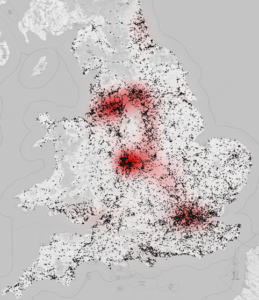
Sites classified by VOA as land used for storage and lorry parking are indicated in black, with traditional industrial and warehouse space displayed as a heatmap in red
Data on IOS fundamentals are very limited in the UK and Europe. At least there is a way to estimate the size and shape of the IOS footprint in England and Wales, where the Valuation Office Agency undertakes detailed categorizations of use cases across property types to set business rates, including categories for open storage and lorry parking.i Proprietary analysis of these data by LaSalle identified some 29,000 locations, with a total area of 16,700 acres and an average size of 0.57 acre.ii The locational pattern (black on the map) is correlated with, but generally more broadly dispersed than, the distribution of traditional logistics space (red on the map). This analysis does not capture the entire UK IOS universe, but still highlights the significant size if the opportunity available within UK IOS, and can support investment decisions requiring a view on supply in markets and submarkets.
i Source: Valuation Office Agency
ii It must be noted that this approach likely misses a sizeable proportion of IOS that is currently classified within the warehouse category by the Valuation Office Agency, especially where the site itself is dominated by an open space but have a structure making up a smaller portion of overall area.
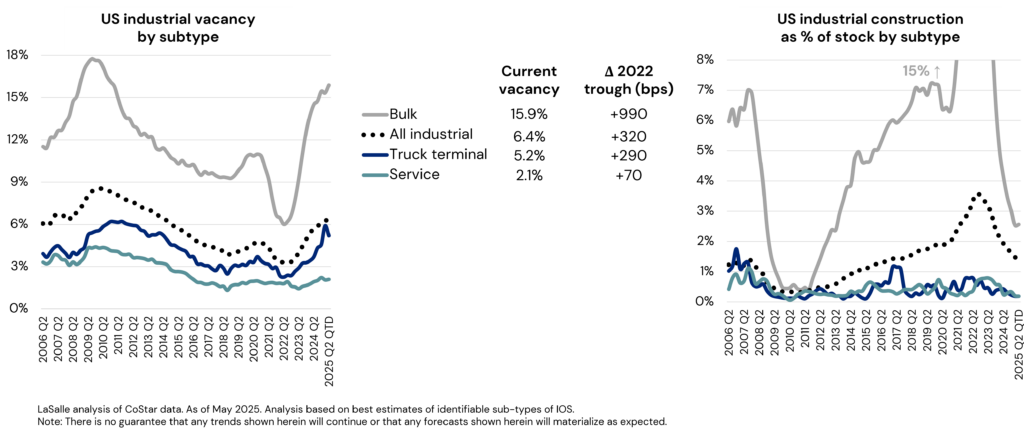
Joint ventures structured between institutional investors and specialized operators have been a common avenue for deploying capital into IOS. The challenges of limited transparency, as well as the transactional and operational inefficiencies of small deals, are factors that motivate partnerships with operators. However, the day-to-day operation of IOS is more like traditional industrial than a more operationally intense sector (such as self-storage). In addition, IOS portfolios of scale are currently rare compared to traditional industrial, but we expect greater consolidation of ownership as the sector matures. The assembly of institutional-scale portfolios, along with development of third-party leasing and management service providers, should support the sector becoming more “mainstream” over time.
IOS fundamentals are tight and resilient
Data on historical industrial fundamentals illustrates consistently lower vacancy and reduced volatility for IOS assets like truck terminals and service facilities, compared to larger industrial buildings (see adjacent charts). The sector benefits from a weaker elasticity of supply, stemming from stringent zoning regulations and community resistance to new IOS facilities. Local municipalities are hesitant to approve them due to the perceived unappealing aesthetics of open-air industrial operations, and an assumption that they have limited potential for generating jobs and taxes. Data challenges remain in holistically assessing fundamentals of IOS sector that take multiple forms; however, the available data suggest a superior track record of fundamentals as well as outlook that is better protected from future development risks.
LOOKING AHEAD >
Several key attributes of IOS suggest it is well positioned to perform strongly:
• Tailwinds of the broader industrial sector: The growth of e-commerce and an emphasis on just-in-time delivery have boosted demand for strategically located industrial service facilities. Whether as a point of transfer, servicing freight vehicles or serving as supplementary outdoor warehousing, various stages of logistics operation require IOS sites. These should be in close proximity to the industrial clusters and population that they serve, and are often infill locations.
• Favorable supply dynamics: New development is limited due to the scarcity and high cost of suitable land — i.e., large sites with the appropriate zoning in proximity to population centers. Stringent zoning regulations and community resistance to new facilities — due to concerns such as noise pollution, increased traffic, and environmental impact —further create barrier to entry. This is a differentiator as compared to traditional industrial, which is currently experiencing softer fundamentals due to a recent supply wave.
• Operational resilience: IOS facilities typically present low operational risks for investors. The simplicity of these assets, usually combined with triple-net lease structures that place maintenance responsibilities on tenants, result in minimal capital expenditures and higher cash returns. The limited availability of alternative facilities contributes to high tenant retention rates, enhancing cash flow stability. The impact of tariff-driven uncertainties on IOS is expected to vary. While port and trade-linked IOS sites are more exposed, those serving local populations should demonstrate more resilience.
• Increasingly liquid and institutional: As recognition of the attractive value proposition of IOS grows, partnerships between institutional capital and professional operators to invest in it are being launched. This is not only likely to improve the management of assets, but should also provide a track record of sector performance. We anticipate a gradual compression of the yield spread between IOS and traditional industrial properties, supported by continued institutional capital flow to the sector and falling perceived risks.
1 FAR refers to floor-area ratio, which measures the relationship between land area and internal building area.
2 Source: JLL Research 2023.
3 Under the LaSalle Going Mainstream framework for maturation of niche sectors. “Next-core” is characterized by professionalization where specialists begin to track performance, transparency is rising, and the income quality is proven.
4 GAV refers to Gross Asset Value. The origin for this widely cited number appears to be the PwC Investor Survey.
5 Source: NCREIF 4Q 2024. NCREIF refers to the National Council of Real Estate Investment Fiduciaries and publishes indices tracking the performance of real estate in the US directly held by institutional investors and by institutional funds. Launched in 1Q 2024, the Expanded NCREIF Property Index (NPI) encompasses a wider array of property sectors and subtype designations than the Classic NPI, aimed at aligning performance measurement with the broader industry’s investable universe.
6 Source: Carter Jonas 2024
7 Source: UK Department for Transport
Important Notice and Disclaimer
This publication does not constitute an offer to sell, or the solicitation of an offer to buy, any securities or any interests in any investment products advised by, or the advisory services of, LaSalle Investment Management (together with its global investment advisory affiliates, “LaSalle”). This publication has been prepared without regard to the specific investment objectives, financial situation or particular needs of recipients and under no circumstances is this publication on its own intended to be, or serve as, investment advice. The discussions set forth in this publication are intended for informational purposes only, do not constitute investment advice and are subject to correction, completion and amendment without notice. Further, nothing herein constitutes legal or tax advice. Prior to making any investment, an investor should consult with its own investment, accounting, legal and tax advisers to independently evaluate the risks, consequences and suitability of that investment. With reference to the graphs included in this publication, note that no assurances are given that trends shown therein will continue or materialize as expected. Nothing herein constitutes a guarantee or prediction of future events or results and accordingly the information is subject to a high degree of uncertainty. LaSalle has taken reasonable care to ensure that the information contained in this publication is accurate and has been obtained from reliable sources. Any opinions, forecasts, projections or other statements that are made in this publication are forward-looking statements. Although LaSalle believes that the expectations reflected in such forward-looking statements are reasonable, they do involve a number of assumptions, risks and uncertainties. Accordingly, LaSalle does not make any express or implied representation or warranty and no responsibility is accepted with respect to the adequacy, accuracy, completeness or reasonableness of the facts, opinions, estimates, forecasts, or other information set out in this publication or any further information, written or oral notice, or other document at any time supplied in connection with this publication. LaSalle does not undertake and is under no obligation to update or keep current the information or content contained in this publication for future events. LaSalle does not accept any liability in negligence or otherwise for any loss or damage suffered by any party resulting from reliance on this publication and nothing contained herein shall be relied upon as a promise or guarantee regarding any future events or performance. By accepting receipt of this publication, the recipient agrees not to distribute, offer or sell this publication or copies of it and agrees not to make use of the publication other than for its own general information purposes
Copyright © LaSalle Investment Management 2025. All rights reserved. No part of this document may be reproduced by any means, whether graphically, electronically, mechanically or otherwise howsoever, including without limitation photocopying and recording on magnetic tape, or included in any information store and/or retrieval system without prior written permission of LaSalle Investment Management.
Want to read more?
Two 90-day pauses, one on retaliatory tariffs with China and the other on the so-called “liberation day” tariffs, have not liberated markets from uncertainty. However, these course corrections have at least shown that the US administration has limits to its willingness to tolerate extreme market movements, particularly increases in Treasury yields, or severe outcomes for consumers such as product shortages1. They have also contributed to a more benign recent market environment than at the beginning of April.
That said, the future “steady state” of trade policy remains unknowable because it rests on a host of complex political, legal and diplomatic factors2. Even if it became clear where tariffs will settle, economic and real estate forecasting would still be challenging because the US administration has proposed a large and rapid change in the global trading system with little historical precedent3. Moreover, there is the additional variable of time — the longer uncertainty hangs over the economy, the greater the likely cost to investment and growth.4
What is a real estate investor to do? In our last ISA Briefing note, “Working backwards: Dealing with unprecedented policy uncertainty,” we cautioned against spending too much time or effort guessing exactly what comes next. Instead, we argued for pursuing strategies that are broadly prudent, aligned with long-term themes and likely to enhance the resilience of a portfolio, regardless of the state of the world. Our specific recommendations include seeking diversification and building a permanent allocation to real estate debt.
In this note, we take our analysis a step further to highlight three key relativities that we suspect are likely to hold, even as the absolute path of policy and the economy is unknown. These comparative assessments are rooted in our analysis of private real estate markets, confirmed by signals from public markets, and framed in the context of our Fair Value Analysis (FVA) approach. Even with all the uncertainty around absolutes, seeking conviction in key relativities can be helpful when making investment decisions.
1. Real estate relative to other asset classes
Real estate as an asset class does not exist in isolation. Although all assets face uncertainties due to trade turbulence, we believe real estate is relatively well positioned in today’s environment for three reasons. First, real estate has several attractive structural characteristics that should help it weather today’s stormy environment. Real estate values are underpinned by defensive, durable cash flows, backed in numerous sectors by long leases5, and supported in many cases by secular demographic drivers. In addition, the link between market rents and the cost of construction materials provides an indirect and imperfect, but meaningful, connection between inflation and property values6. Tariffs are likely to drive up the cost of construction in any country that raises tariffs on key construction inputs, and that pushes up the rents required to justify new development.
Second, these structural factors are reinforced by mostly healthy current real estate market conditions, as property markets today are not characterized by major imbalances. In our ISA Outlook 2025, we noted falling supply levels, a repricing process mostly in the rear-view mirror, and conservative overall leverage levels in most segments of the market. These factors continue to apply, despite new uncertainties around trade.
Third, real estate valuations appear less stretched than those of several other major asset classes, especially large-cap equities. As nominal rates rose and credit spreads fell over the past few years, real estate underperformed general equities, cumulatively underperforming by ~30% since the end of 2021 (see adjacent chart). As the environment has shifted, it is possible that real estate’s underperformance could reverse. From a relative valuation perspective, global REITs would need to outperform equities by around 15-20% as of April 30th to simply bring the historical earnings yield relationship back in line with its long-term average.7

2. Relative sector outlook
The trade war has the potential to impact virtually every assumption that goes into a Fair Value Analysis (see sidebar for more background on FVA). When the components of FVA are especially uncertain and volatile, as they are today, it helps to focus on the elements for which greater conviction is possible. Moreover, we recommend emphasizing relative assessments, which can be easier to build conviction around than absolute forecasts.
The channels by which tariffs impact real estate sectors can be classified as either direct and specific, or indirect and macro-related. In terms of trade-specific channels, we highlight that some sectors have unique dynamics that are directly shaped by barriers to the flow of goods. The poster child for this is industrial/logistics real estate. Given this property type literally houses the economy’s supply chains, it is clearly exposed to forces that are likely to disrupt and potentially reshape supply chains.
In the near term, decision-making by logistics occupiers is likely to slow.8 Markets and sub-markets exposed to trade, such as around major ports, may see reduced demand. It is worth noting that trade-related logistics demand generally tends to be greater nearer the points of import and consumption, rather than the points of manufacture and export. Thankfully, the long-term context of logistics real estate is one of positive structural growth, which means this impact takes the form of a downgrading, not a devastation, of the sector’s prospects. Moreover, in the long run, global economic fragmentation could lead to greater supply chain redundancy and therefore increased aggregate space demand.
What is Fair Value Analysis (FVA)?
Fair Value Analysis, or FVA, is central to LaSalle’s investment strategy process. We conduct FVA across a range of “slices” of the property market—that is, various combinations of sectors, sub-sectors, cities, sub-markets, quality grades and the like. The FVA methodology compares our assessment of expected and required returns:
• Expected Returns (ERs) represent the return expected for a given real estate slice, which is build-up of current real estate entry pricing, plus short and long-term income growth, minus an estimate of the capital expenditure needed to keep the property competitive.
• Required Returns (RRs) represent an appropriate risk-adjusted cost of capital for a given slice, starting with bond yields and applying sector- and market-appropriate risk premia.
It is possible to extract both absolute and relative pricing indications from FVA. By comparing ERs and RRs, we can assess which slices appear attractively priced (ER>RR), fairly priced (ER≈RR) or overpriced (ER<RR). But implicit in this absolute analysis is a presumption that current bond yields are “correct;” its conclusions tend to be volatile in periods when bond markets are volatile. That is why is also helpful to simply rank order the ratio of ERs to RRs, which produces a relative sorting of attractiveness by slice. Relative assessments help steer investment toward the real estate most likely to outperform the broader property market.
Other examples of real estate sectors facing impacts directly tied to tariffs include US power centers exposed to discretionary expenditure on (largely) imported goods. There are also potential direct impacts on real estate from other Trump policies beyond tariffs, for example around reputational issues that seem to be suppressing inbound and outbound tourism, as well as changes to scientific research funding.9
To understand the broader macro channels of impact, it is useful to assesses real estate sectors and markets by their relative sensitivities to economic growth and to interest rates.10 Sectors with a high degree of economic sensitivity, such as hotels, are likely to see an outsized negative hit to their cash flows in the event of an economic downturn. Meanwhile, economic impacts should be muted on sectors with low fundamental sensitivity to GDP growth, such as medical office.
Relative impacts are potentially the reverse for sectors with a high degree of interest rate sensitivity. An economic downturn usually leads to lower interest rates – although recent market movements suggest that is not necessarily a given.11 The impact of lower rates on the more interest-rate sensitive parts of the real estate market could enable them to absorb some or even all the effect of softer demand. These property types are generally those with longer leases, such as the mainstream commercial sectors.
Relative listed real estate performance following “liberation day”, confirms these intuitive sector relativities. Despite an initial drawdown of nearly 10%, the overall listed REIT market was down only marginally for the rest of April, though the dispersion of property sector performance has been wide (see adjacent chart). Initial investor reactions have been most focused in property types which are most directly exposed to a potential trade war (e.g., industrial/ logistics) or those which are more economically sensitive in nature (lodging).
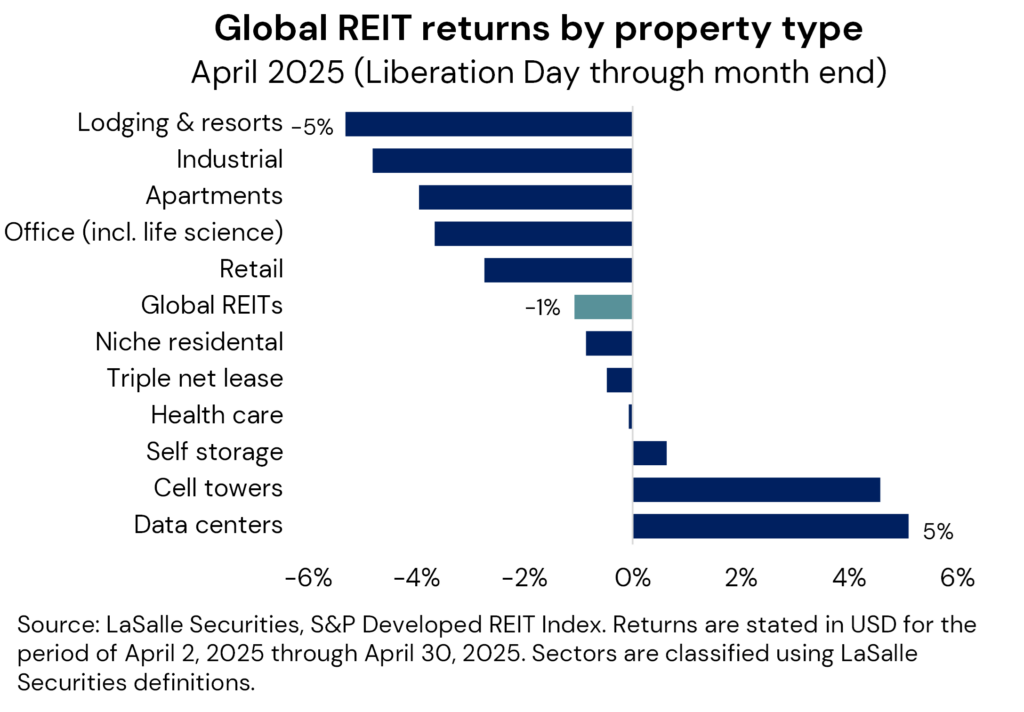
3. Relative global impacts
The same relative-value thinking can be applied to the relative prospects of countries and regions, which have been dynamic this year, to say the least. The economic narrative has quickly shifted from the post-election consensus of dominance by the US economy, to post-inauguration worries about fallout from US trade policy alongside a growth-positive break in European fiscal policy.12
Indeed, it seems likely that tariff-related worries may hit US real estate more than in many other countries, for two reasons. First, the strongest headwinds in many exporting nations will be largely contained to specific industries, compared to potentially generalized challenges in the US.13 A second is that the US Fed will have to balance risks of higher unemployment against those of higher prices, while in other countries, the short-term impact of tariffs could drive local goods prices lower. This may give ex-US central banks wiggle room to offset a weaker economy with policy easing.
To separate relatively harder-hit from less-hit ex-US markets, we track the level of applied tariffs and a country’s exports to the US as a share of the exporting country’s GDP. On this basis, the map shows that China, Southeast Asia, Canada and Mexico may be more impacted, while Australia and Europe potentially could be less so. The nature of the exports themselves also matters. It may be difficult to find viable substitute suppliers for many complex, high-value goods (e.g., cutting-edge semiconductors), or for raw materials (rare earths). Countries whose exports have fewer substitutes may be more insulated from the trade war.
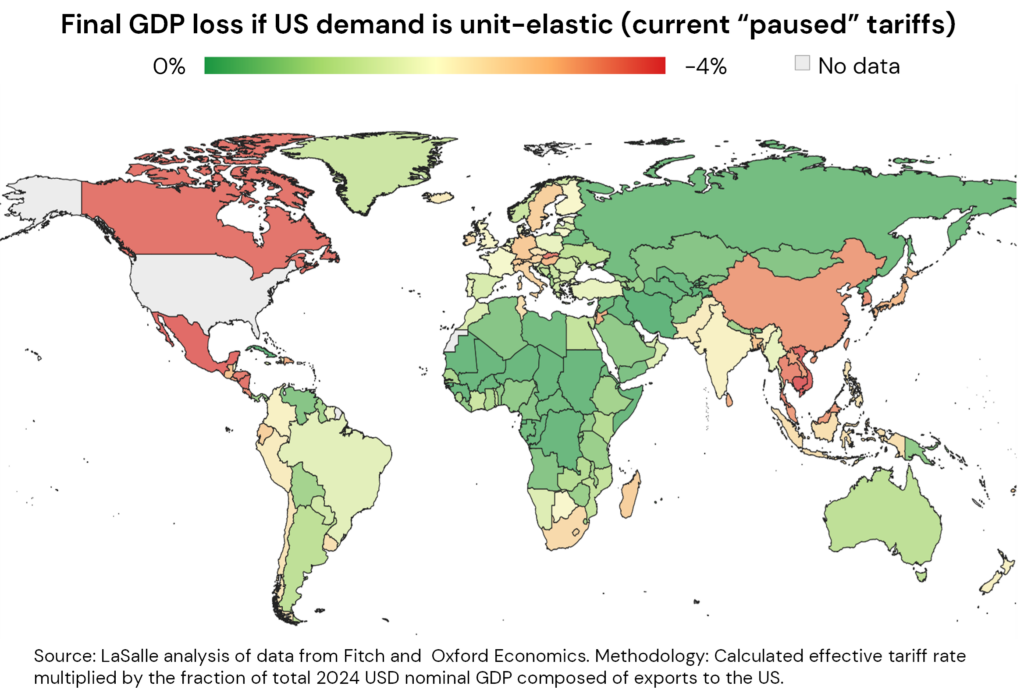
A final factor to consider is that the economic sensitivity of property varies by sector and country, but real estate’s return beta is especially low in some market segments, such as the European living sectors.14 The degree to which a sector’s drivers are inward- or outward-facing can also matter. For example, we observe that real estate in Japan, with its large domestic market, tends to see robust investor and tenant demand that may be less susceptible to external forces.15
These relativities have been evident in the performance of US and ex-US listed real estate markets. The shift in US trade policy has led to the largest REIT share price declines being registered in the US (see adjacent chart). European REIT markets, including the UK, have been relative winners given the potential pro-growth developments in fiscal policy and a more limited direct impact from US trade policy. Asia Pacific REIT market performance has been more mixed in this period, with Japan and Australia notable outperformers.
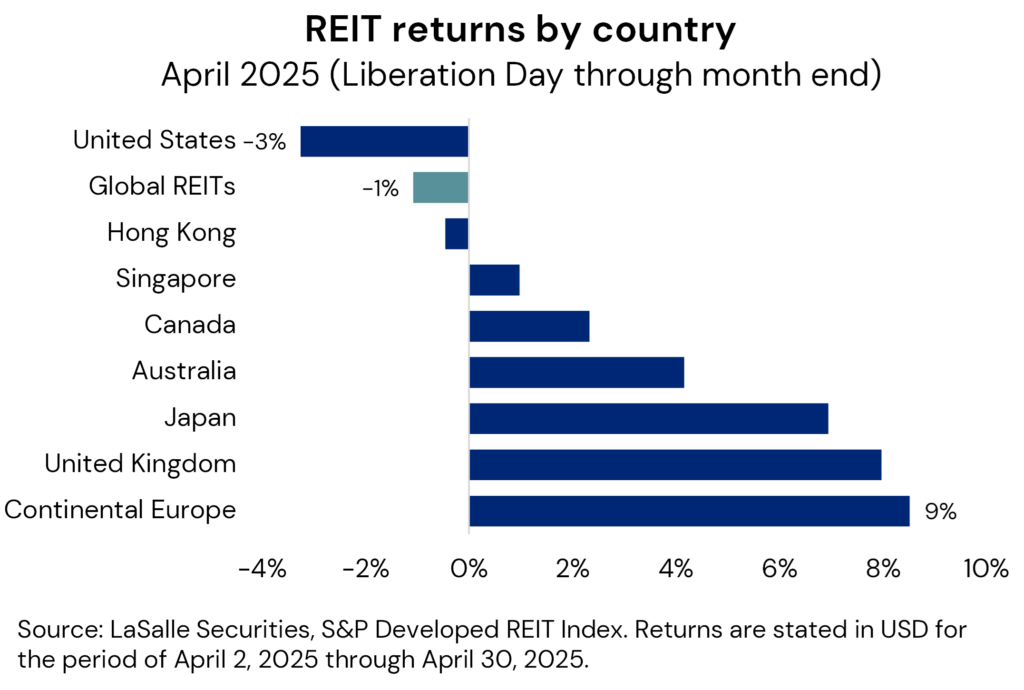
LOOKING AHEAD >
1 The April 9th reciprocal tariffs pause may have been in response to a meaningful increase in Treasury yields, to which the administration seems more reactive than equity markets. The April 12th China pause appears timed to preempt the expiration of “on water” exemptions for goods already en route. Sources: Piper Sandler and Signum Global Advisors.
2 Contributors to uncertainty include: legal challenges to presidential trade authority; negotiations between the US and other nations; potential Congressional action, especially after the mid-term elections; and of course, unilateral adjustments by the administration. Sources: Piper Sandler and Signum Global Advisors.
3 According to Goldman Sachs, the US average tariff rate has increased from ~3% to ~20% in the past few months, even before the paused tariffs. For comparison, the 1930 Smoot-Hawley tariffs represented a rate increase of only a few percentage points, off of already high levels. Moreover, trade is today roughly three times as large a share of the US economy as it was then. As such, there is no clear precedent for a tariff increase of this magnitude.
4 According to analysis by Piper Sandler and Baker, Bloom and Davis, 2016.
5 Leases are, in some sense, only as defensive as the revenues of the tenant. But crucially, they are mediated by the option to relet a building to another tenant. In essence, real estate is a layer of abstraction removed from the tenants’ businesses, just as the tenant is in turn a layer of abstraction higher than any specific product (because they may have multiple products). Just as products have widely varying success/failure profiles, companies are a kernel on products, so their success/failure rate is in turn smoothed, and real estate is a further kernel on businesses.
6 The cash flow characteristics of real estate, including its inflation pass-through potential, are discussed in greater depth in our ISA Portfolio View report.
7 LaSalle has tracked and compared the relationship of REIT AFFO yields to Equity earnings yields for the period of April 2006 through April 2025. Using this data series, we estimate that the relative performance of REITs that would be needed as of the latest data point to revert the relationship to the historical average, assuming all else equal.
8 The commentary in this paragraph is based on LaSalle analysis and that of Green Street Advisors and CBRE-EA.
9 We are monitoring hotel markets with a high share of international visitors; US student housing assets that are heavily exposed to international students (with European student housing potentially benefiting); and life sciences real estate.
10 LaSalle’s Portfolio Balance framework describes real estate market segments according to their sensitivities to economic growth and interest rates. It classifies markets and sectors into four categories: growth-led, rate-led, stable, and reactive. For a fuller discussion, see the ISA Outlook 2025.
11 Bond yields typically fall as economies go into recession because the market prices in central bank easing (rate cuts) and lower inflation. However, this is not always the case. Recent upward volatility in US 10-Year Treasury yields has been attributed to movement in the risk premium required for investing in dollar assets, given concerns that recent rapid changes in economic policy herald longer-term US policymaking instability. Sources: Piper Sandler and Oxford Economics.
12 For more discussion of this narrative shift, and the German debt Zeitenwende, see the ISA Briefing “Working backwards: Dealing with unprecedented policy uncertainty” and the accompanying LaSalle Macro Quarterly.
13 For example, LaSalle estimates the impact of US tariffs on the German automotive industry to represent just 0.04% of European GDP, using data from Oxford Economics. We derive this by dividing the $25.5bn German auto exports to the US by the eurozone’s $15.9tn GDP, multiplied by 25% tariffs (assuming unit elasticity and no export redirection).
14 European residential markets have seen strong rental growth in recent years, even as GDP growth was weak, owing to long-term structural supply shortages. Source: LaSalle analysis of data from PMA and Green Street.
15 According to analysis by LaSalle of data from JLL REIS and MSCI Real Capital Analytics.
Important Notice and Disclaimer
This publication does not constitute an offer to sell, or the solicitation of an offer to buy, any securities or any interests in any investment products advised by, or the advisory services of, LaSalle Investment Management (together with its global investment advisory affiliates, “LaSalle”). This publication has been prepared without regard to the specific investment objectives, financial situation or particular needs of recipients and under no circumstances is this publication on its own intended to be, or serve as, investment advice. The discussions set forth in this publication are intended for informational purposes only, do not constitute investment advice and are subject to correction, completion and amendment without notice. Further, nothing herein constitutes legal or tax advice. Prior to making any investment, an investor should consult with its own investment, accounting, legal and tax advisers to independently evaluate the risks, consequences and suitability of that investment. With reference to the graphs included in this publication, note that no assurances are given that trends shown therein will continue or materialize as expected. Nothing herein constitutes a guarantee or prediction of future events or results and accordingly the information is subject to a high degree of uncertainty. LaSalle has taken reasonable care to ensure that the information contained in this publication is accurate and has been obtained from reliable sources. Any opinions, forecasts, projections or other statements that are made in this publication are forward-looking statements. Although LaSalle believes that the expectations reflected in such forward-looking statements are reasonable, they do involve a number of assumptions, risks and uncertainties. Accordingly, LaSalle does not make any express or implied representation or warranty and no responsibility is accepted with respect to the adequacy, accuracy, completeness or reasonableness of the facts, opinions, estimates, forecasts, or other information set out in this publication or any further information, written or oral notice, or other document at any time supplied in connection with this publication. LaSalle does not undertake and is under no obligation to update or keep current the information or content contained in this publication for future events. LaSalle does not accept any liability in negligence or otherwise for any loss or damage suffered by any party resulting from reliance on this publication and nothing contained herein shall be relied upon as a promise or guarantee regarding any future events or performance. By accepting receipt of this publication, the recipient agrees not to distribute, offer or sell this publication or copies of it and agrees not to make use of the publication other than for its own general information purposes.
Copyright © LaSalle Investment Management 2025. All rights reserved. No part of this document may be reproduced by any means, whether graphically, electronically, mechanically or otherwise howsoever, including without limitation photocopying and recording on magnetic tape, or included in any information store and/or retrieval system without prior written permission of LaSalle Investment Management.
Malera Gifu is a purpose-built shopping center, located in Motosu City, Gifu Prefecture, a suburban area in the Chūbu region of Honshu, Japan that was previously owned by LaSalle on behalf of a custom account client from 2014 – 2024. It is a popular, family friendly destination, roughly one hour north of Nagoya City. Open daily, it covers an area of about 200,000 square meters, making it one of the largest shopping centers in the country, with over 240 retail outlets, including a supermarket, specialty stores, restaurants and a 10 screen cinema. As a regional shopping mall, Malera Gifu draws from a large 30-minute driving catchment.
It is anchored by Toho Cinemas, Round1 (bowling, video games, etc.), and major retailers Zara, Uniqlo, an official Apple distributor, G.U., Muji, H&M and many more, with over twenty new and renewed brands opening in 2024.
While Motosu City is considered less populated than major cities like Tokyo, Osaka and Nagoya, it is easily accessible by car and serviced by the local Tarumi Railway, which stops in front of the center, at the Malera Gifu station. Malera Gifu has been managed by LaSalle since 2014 and has since grown to become one of the region’s major malls. The launch in 2022 of a new supermarket resulted in a 300% increase in sales (compared with sales from the previous supermarket), positively influencing overall foot traffic and consolidating the center’s position as a shopping destination.* New concepts, including sustainability initiatives and community-based services, are expected to further increase customer attraction and add value to the asset, which continues to offer the potential for reliable, long-term income streams. A solar installation of 970 kW power was installed in late 2023.
Malera Gifu runs hundreds of events a year, including earthquake evacuation drills, the summer Bon Odori festival, and has hosted a circus on-site as well as J-pop group Da Pump and the annual 24-Hour TV charity event. Malera Gifu has also run competitions for the local community, including a contest to design uniforms and a contest to re-design bathroom interiors.
In early 2024, LaSalle managed and completed the upgrade of Malera Gifu’s Building Energy Management System (BEMS), which monitors, controls and optimized the energy usage of the shopping centre’s systems and equipment. Additionally, installation of a 970 kwh solar photovoltaic (PV) system, which optimizes energy usage by switching between grid and solar panel power based on demand fluctuations was completed and became operational around the same time. Currently, the solar panels generate between 4 to 6% of the site energy and the system should pay for itself within five years.
Our Asset Management team uncovered opportunities to improve energy consumption and drive savings whilst striving to protect the value of the asset by installing the solar panels and upgrading the BEMS, which is expected to payback in less than two years. Following these initiatives, the energy consumption of the centre fell by about 5% in 2025.**
In June 2024, Malera Gifu shopping center was sold on behalf of a custom account client. At the time of sale, the initially estimated added value from the improvements was exceeded by over 220%, highlighting how sustainability improvements can add substantial value to assets.
* Observed in the six months following the opening of the new supermarket in May 2022.
** Figures related to the BEMS and photovoltaic system are as of the time of sale in June 2024.
At the time of writing (April 2025), Neither LaSalle nor our custom account client retain any interest in or connection to the asset.













 Office
Office
2020 K Street
A downtown Washington office property with strong sustainability credentials
 Office
Office
222 Exhibition Street, Melbourne
An award-winning, showpiece office tower in Australia’s second-largest city
 Industrial
Industrial
Atlanta logistics portfolio
Four newly constructed, Class A logistics warehouses located across suburban Atlanta, Georgia
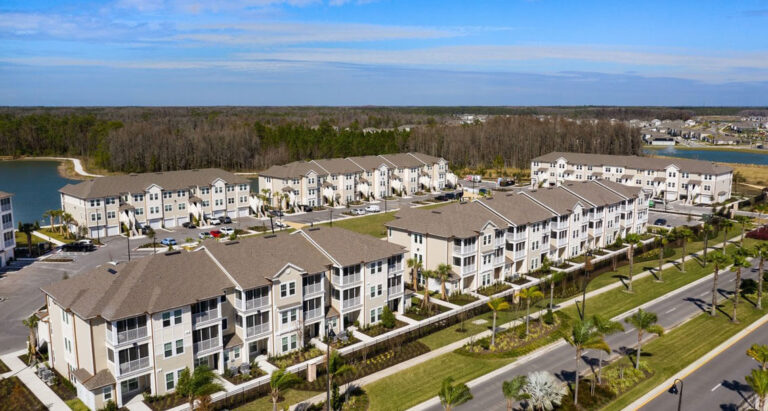 Residential
Residential
Pier 8 at The Preserve
A luxury apartment community in suburban Tampa
 Office
Office
Sixty London Wall
Grade A office accommodation with excellent sustainability credentials
Important information
The assets presented are meant for illustrative purposes only, are subject to change without notice and are not meant as a projection or estimate of the nature of any future investments to be made by the Fund or returns on any such investments. This information has been prepared by LaSalle in order to illustrate the type of assets held and/or transactions completed by the Fund; transactions for properties exhibiting the same or similar characteristics may not be available or profitable in the future.
Important information about sustainability
A decision to invest should consider all characteristics or objectives disclosed in the offering document. Please refer to the offering document before making any final investment decision.
Except where specified either in this webpage or any other documents, any sustainability or impact goals, targets, commitments, incentives, initiatives or outcomes referenced in any information, reporting or disclosures published by LaSalle are not being marketed to investors or promoted and do not bind any investment decisions made in respect of, or the management or stewardship of, any funds managed by LaSalle for the purposes of Regulation (EU) 2019/2088 on sustainability-related disclosures in the financial services sector. Any measures in respect of such sustainability or impact goals, targets, commitments, incentives, initiatives or outcomes may be overridden, may not be implemented or may not be immediately applicable to the investments of any funds managed by LaSalle (in each case, at LaSalle’s sole discretion).
A reader waking up from a quarter-long slumber on April 1, 2025 would be forgiven for confusing the headlines for an April Fools’ Day prank. They would scan the news and see stories about:
• large tariffs alternately announced, rescinded, delayed and reintroduced at a breakneck pace (see LaSalle Macro Quarterly, or LMQ, p. 4);
• US equities in correction territory as ex-US markets, including even China’s, outperform (LMQ p. 25);
• increasing calls that the risk of a US recession is rising (LMQ p. 20); and
• substantial upward revisions in forecasts of long-term European GDP growth (LMQ p. 21).
Each of these is at least partly (and in some cases completely) contrary to expectations from the beginning of this year. But the quick reversal in the economic narrative is no April 1st joke. The post-election consensus of a supercharged US economy pulling ahead of the rest of the world has clearly been challenged, if not upended.
In this period of elevated policy uncertainty, real estate investors should focus on what they can and should do amidst all the noise. At the risk of stating the obvious, we think it helps to take a step back and break down the analysis into three basic steps of incorporating news flow into investment strategy — the what, the so what, and action steps. But as we will discuss, the first two are characterized by so much uncertainty that it is also helpful to start from the end and work backwards, asking: What can investors do to improve their chances of successfully navigating this environment regardless of what happens?
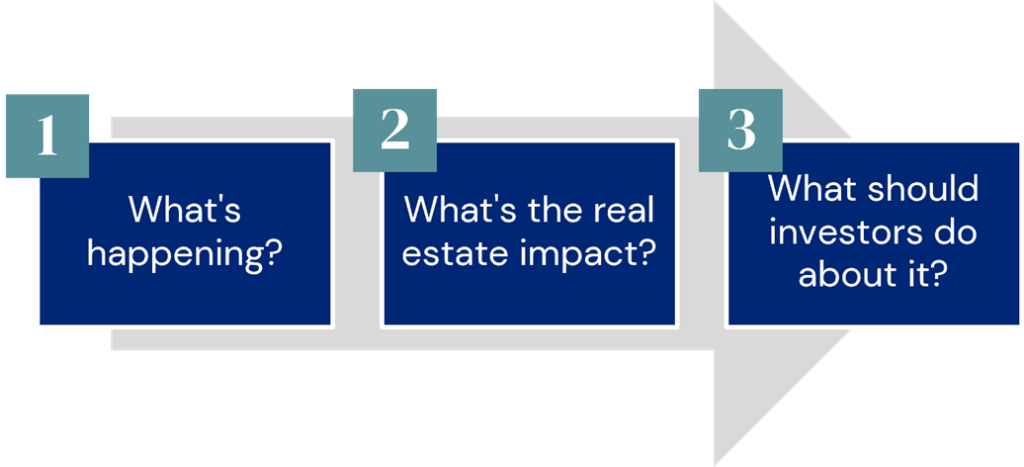
Normally, the “what” of political developments and other events is the easy part. But since the US presidential inauguration, the Trump administration has made policy announcements — especially regarding trade and federal employment — at a rapid pace. Some of these seem to have taken even insiders by surprise. Widespread post-election expectations that actual policy would be more measured than campaign-trail rhetoric have proven incorrect.1 Reversals and postponements have also been a regular occurrence.
Adding to the news flow are announcements by other countries. These include the tit-for-tat of retaliatory tariff measures. But there have also been substantial structural shifts, most notably the German coalition agreement to spend more on infrastructure and defense. This news is arguably linked to a realization by European leaders that, given less collaboration with the US, Europe will have to forge its own path to generate economic growth and provide for its security.2 Aside from the break that this represents from the post-World War II order, this change is significant because it is a key driver of higher economic growth expectations for Europe.
The result of all this is a “layering” of announcements that is difficult to digest at once (see our attempt at a timeline at LMQ p. 4). It is even more of a challenge to roll-forward the news into reasonable predictions for subsequent weeks, let alone months. As a result, measures of economic policy uncertainty have risen to levels close to historic highs (LMQ p. 5). Indeed, the implications of the many recent developments on the growth and inflation outlook include first-order effects such as the direct impacts of lower government spending on GDP and higher prices on tariffed goods (LMQ p. 7), but also the second-order effects of broadly elevated uncertainty.
Uncertainty is the enemy of investment decision-making. This applies both to financial investment as well as spending by businesses in plant, property, equipment and digital tools. Empirical research has shown a clear negative relationship between uncertainty and investment.3 If businesses are unsure (as they are today) about the rules of the road — for example, around the basic terms of trade governing imports and exports — they may be hesitant to commit capital to long-horizon projects. At the same time, expectations of lower taxes and less regulation may push them back toward optimism.
Our analysis of recent events comes with a dose of humility. While LaSalle dedicates significant resources to tracking and analyzing the constant flow of indicators and news — as highlighted by the LaSalle Macro Quarterly (LMQ) — we do not purport to have a unique competitive advantage doing so. We would expect that our readers follow a range of news outlets, forecasters and other observers in staying abreast of the news flow and making sense of it.
We do feel, by contrast, that our experience managing property and data from our portfolio puts us in a strong position to assess the likely impacts of policy developments on real estate. Even in the context of elevated overall uncertainty, we can make several observations with relative confidence.
First, we suspect that a key real estate impact of recent policy trends could be higher replacement costs. Tariffs on construction materials, such as steel, are likely to drive up their price. In addition, a lower level of migration into the US may reduce the supply of construction labor there. Increased European spending on infrastructure and defense could also contribute to higher global and regional materials costs. Higher replacement costs would mean that rents would have to rise more to justify new development, ultimately leading to higher net operating income (NOI) growth. This could counterbalance the impact of macro factors such as a potentially slower economy, as well as property type-specific impacts such as softer demand for housing in the context of muted household formation by immigrants. A simpler way to state this is that real estate can act as an inflation hedge.4
Second, we see value in undertaking granular research to identify potential winners and losers from the current policy environment. This approach can help investors identify real estate that is likely less exposed (or may even benefit from) current trends, while flagging potentially more-impacted market segments. Although the exact mix of government policies remains uncertain, the direction of travel is clear enough in some areas to make a few relative calls. For example, a move away from global free trade could weaken real estate demand related to import-export activities, for example in proximity to ports, while bolstering it in emerging near-shoring hubs.
These sorts of analyses can operate both at the national level, for example by identifying more and less trade-exposed countries (e.g., LMQ p. 9), and at the metro-area level, by examining city-level economic exposures (LMQ p. 10 and 11). One specific economic concentration worth mentioning is that of government employment in Washington, DC. Clearly, job cuts by the newly formed Department of Government Efficiency (DOGE)5 are a risk, but there are mitigating factors such as mandated in-person work; we predict a net negative effect for DC real estate demand, but we have not yet seen much impact on the ground or in the data.
Finally, we note that economic softness comes with mixed effects for real estate. As a long-duration, interest rate-sensitive asset class, it is quite possible that a mild or moderate economic slowdown that leads to lower long interest rates could, in fact, be a positive for real estate values in the aggregate. That said, there are likely to be winners and losers, depending on the relative sensitivity of an asset’s performance to interest rates versus sensitivity to economic growth.6
A bigger risk than a slowdown alone is that of stagflation: weak growth at the same time that sticky inflation keeps rates high. However, most economic research suggests that tariffs represent a one-time upward adjustment to the price level, rather than a driver of a sustained, self-reinforcing cycle of higher inflation;7 as such, central bankers may be more willing to ”look through” the impact of tariffs. So far, a recent softening in 10-year Treasury yields suggests that bond markets agree with that assessment (LMQ p. 26).
All this points to avoiding excessive pessimism on the direction of values, while remaining cautious and selective. But being discriminating is not the only thing investors can do. We also advocate for turning the process of incorporating news flow into strategy on its head. Because we know so little about where the dust will settle on many of the policy shifts, let alone the impacts of those shifts, it is also prudent to ”work backwards” from the implementation step. Some of the most prudent actions an investor can take do not depend on the specific geopolitical or policy debate of the week.

A key recommendation in this regard is to build a globally diversified portfolio. That the market narrative has shifted quickly from one of US dominance of global growth, to a more balanced view with Europe gathering pace, reinforces that countries’ trajectories may exhibit lower correlations in a more fractured global economy. Rapid reversals of market narratives can generate significant market volatility, particularly when they are “priced to perfection” as the post-election optimism now appears to have been. Diversification should help to absorb that volatility, while avoiding being “left out” of unexpected positive shifts. A microcosm of this occurred recently in the public REIT market, where post-election euphoria led to what appeared to us a significant underpricing of European listed real estate.
Investors are also likely to benefit from diversification across the capital stack, which is why we recommend a permanent allocation to real estate debt. As we discussed in our ISA Focus report, “Investing in real estate debt,” debt investment provides low-correlation returns that are by definition not sensitive to volatility contained entirely within the first-loss equity position. While the risk of a recession in the next year is debatable but possibly rising, the risk of an eventual recession is always 100% in the long run. A debt allocation can help add stability and predictability to a portfolio’s return regardless of the exact path the economy takes.
• Investors should not get lost in the noise. Our view, expressed in the ISA Outlook 2025, is that we are at the ”dawn of a new real estate cycle.” This call is not dependent on a highly certain or favorable macro context, but rests on observations specific to real estate. These include pricing that has caught up with bond yields, valuations that have caught up with pricing, solid property fundamentals and substantially approved debt availability, among other factors. Neither a booming economy nor falling rates are necessary conditions for a revival in investment activity or the existence of attractive investment opportunities.
• There will likely be both winners and losers among specific real estate strategies. Granular analysis of risks and mitigants should inform revised assessments of relative value. To get these shifts right, investors must continue to ask: What is priced in? Overreactions are possible, which can create opportunities for investors to take advantage of volatility.
• Near-term uncertainty can distract from a longer-term picture that is arguably clearer. Over a horizon of years and decades, trends toward higher trade barriers and a more fragmented world seem likely to continue. Moving from a global economy where countries with a comparative advantage in producing a particular good do so and sell it to other countries, to one in which trade barriers create more siloed supply chains, would likely have complex effects. Classic economic theory suggests that transition could hinder productivity. But it could also spur real estate demand as productive capacity and inventories are un-pooled and duplicated. Correlations between real estate markets could also decrease. Investors should be ready to build portfolios with these dynamics in mind.
Footnotes
1 We made this mistake as well, saying that “legislative obstacles exist to enacting full campaign-trail rhetoric” in our November 11, 2024 ISA Briefing, “The ‘Red Sweep’ and real estate: has the outlook changed?”.
2 Source: Signum Global Advisors, Piper Sandler, Oxford Economics
3 According to analysis by Piper Sandler, there is an inverse correlation of -42% between a sustained upward shift in policy uncertainty (as measured by the US Economic Policy Uncertainty Index) and GDP growth; a doubling of uncertainty over a quarter is consistent with -1.5% real GDP growth over the following year. For academic work on this relationship, see Baker, Bloom and Davis, 2016
4 For more discussion of real estate’s role as an inflation hedge, see LaSalle’s ISA Portfolio View.
5 DOGE is seeking to quickly remodel the US government to be more effective at a lower cost. If successful, the project could contribute to the US economy’s productive capacity by reducing the crowding-out effect of government spending on private sector activity. Inconveniently, the prospects for reducing government spending face many constraints, not least the fact that a very large proportion of US government spending is committed to entitlement programs like Social Security, Medicare and Medicaid, which most politicians have pledged not to touch. Moreover, in the short term, reduced government employment and lower outlays would directly reduce GDP. Sources: Piper Sandler, Signum Global Advisors
6 In LaSalle’s ISA Outlook 2025, we highlighted our Portfolio Balance framework, which describes real estate market segments according to their historical sensitivities to economic growth and interest rates. The framework segments markets and sectors into four categories: growth-led, rate-led, stable, and reactive. We found that while short-leased, economically sensitive sectors like hotels may see values soften in a recession, other sectors may actually see values benefit if interest rates soften enough.
7 Source: Economic Policy Institute, Federal Reserve Bank of Boston, Piper Sandler
Important notice and disclaimer
This publication does not constitute an offer to sell, or the solicitation of an offer to buy, any securities or any interests in any investment products advised by, or the advisory services of, LaSalle Investment Management (together with its global investment advisory affiliates, “LaSalle”). This publication has been prepared without regard to the specific investment objectives, financial situation or particular needs of recipients and under no circumstances is this publication on its own intended to be, or serve as, investment advice. The discussions set forth in this publication are intended for informational purposes only, do not constitute investment advice and are subject to correction, completion and amendment without notice. Further, nothing herein constitutes legal or tax advice. Prior to making any investment, an investor should consult with its own investment, accounting, legal and tax advisers to independently evaluate the risks, consequences and suitability of that investment. LaSalle has taken reasonable care to ensure that the information contained in this publication is accurate and has been obtained from reliable sources. Any opinions, forecasts, projections or other statements that are made in this publication are forward-looking statements. Although LaSalle believes that the expectations reflected in such forward-looking statements are reasonable, they do involve a number of assumptions, risks and uncertainties. Accordingly, LaSalle does not make any express or implied representation or warranty and no responsibility is accepted with respect to the adequacy, accuracy, completeness or reasonableness of the facts, opinions, estimates, forecasts, or other information set out in this publication or any further information, written or oral notice, or other document at any time supplied in connection with this publication. LaSalle does not undertake and is under no obligation to update or keep current the information or content contained in this publication for future events. LaSalle does not accept any liability in negligence or otherwise for any loss or damage suffered by any party resulting from reliance on this publication and nothing contained herein shall be relied upon as a promise or guarantee regarding any future events or performance. By accepting receipt of this publication, the recipient agrees not to distribute, offer or sell this publication or copies of it and agrees not to make use of the publication other than for its own general information purposes.
Copyright © LaSalle Investment Management 2025. All rights reserved. No part of this document may be reproduced by any means, whether graphically, electronically, mechanically or otherwise howsoever, including without limitation photocopying and recording on magnetic tape, or included in any information store and/or retrieval system without prior written permission of LaSalle Investment Management.
Singapore (February 11, 2025) — LaSalle Investment Management (“LaSalle”), one of the world’s leading real estate investment managers, today announced key leadership appointments in Asia Pacific.
Steve Hyung Kim has been appointed Asia Pacific Co-Chief Investment Officer (Co-CIO) effective February 1, 2025, partnering with Kunihiko (Nick) Okumura who will continue in his role as Asia Pacific Co-CIO. Additionally, effective July 1, 2025, Nick and Steve will succeed Keith Fujii as Co-Heads of Asia Pacific and join LaSalle’s Global Management Committee (GMC). Nick and Steve will also continue to serve as CEO of Japan and Head of Korea respectively.

As Asia Pacific Co-Heads and Co-CIOs, Nick and Steve are responsible for charting the vision and strategy for LaSalle’s business in the region and for stewarding investment performance for LaSalle’s clients.
As part of this leadership transition, Keith Fujii will assume the role of Chairman of Asia Pacific, also effective July 1, 2025, and retain his position as Chairperson of the Asia Pacific Investment Committee. Since joining LaSalle as CEO of Japan in 2018 and through his appointment as Head of Asia Pacific in 2021, Keith has been a key figure and a respected leader in the firm. In his capacity as Chairman, Keith will oversee the growth and stability of LaSalle’s Asia Pacific platform, collaborating closely with the leadership team to realize the firm’s ambitions in the region.
Claire Tang will depart LaSalle at the end of February 2025 and step down from her roles as Asia Pacific Co-CIO and Head of Greater China to pursue other opportunities. Since joining LaSalle in 2007, Claire has been instrumental in the growth of LaSalle’s Asia Pacific platform and was central to the teams that developed and executed new investment strategies as well as successfully raised capital for the region. She did so while always leading with positivity and an entrepreneurial spirit.
Mark Gabbay, Global CEO commented: “The appointment of Nick and Steve as Co-Heads of Asia Pacific represents a significant milestone in their successful careers. The next chapter for our Asia Pacific platform will require a growth mindset and an innovative approach to investing, qualities which both Nick and Steve have amply demonstrated and will bring to their new roles. At the same time, I am pleased that Keith has accepted his appointment as Asia Pacific Chairman, providing continued leadership and guidance as we continue to execute our investment strategies in the region. We are grateful to Claire for her dedication and service and wish her all the best in the future.
Mark Gabbay continued: “The new appointments are a reflection of the strong bench of talented leaders as well as the robust succession plans that are in place at LaSalle. LaSalle remains committed to Asia Pacific, a region in which the firm is well-established, with a successful track record it is focused on extending.”
– END –
About LaSalle Investment Management | Investing Today. For Tomorrow.
LaSalle Investment Management is one of the world’s leading real estate investment managers. On a global basis, LaSalle manages US$88.8 billion of assets in private and public real estate equity and debt investments as of Q3 2024. LaSalle’s diverse client base includes public and private pension funds, insurance companies, governments, corporations, endowments and private individuals from across the globe. LaSalle sponsors a complete range of investment vehicles, including separate accounts, open- and closed-end funds, public securities and entity-level investments.
For more information, please visit www.lasalle.com, and LinkedIn.
NOTE: This information discussed above is based on the market analysis and expectations of LaSalle and should not be relied upon by the reader as research or investment advice regarding LaSalle funds or any issuer or security in particular. The information presented herein is for illustrative and educational purposes and is not a recommendation, offer or solicitation to buy or sell any securities or to adopt any investment strategy in any jurisdiction where prohibited by law or where contrary to local law or regulation. Any such offer to invest, if made, will only be made to certain qualified investors by means of a private placement memorandum or applicable offering document and in accordance with applicable laws and regulations. Past performance is not indicative of future results, nor should any statements herein be construed as a prediction or guarantee of future results.


This article first appeared in a Real Estate Debt special report in the February 2025 issue of Private Debt Investor (subscription required to read the full issue).
LaSalle’s David White and Craig Oram provide insights on navigating the evolving real estate debt markets in the US and Europe. They discuss the risk-adjusted returns that debt investments offer compared to equity, emphasizing steady returns and favorable lending conditions driven by recent market changes. They also share LaSalle’s strategic focus on scalable opportunities and underutilized assets, with a significant emphasis on the for-rent residential sector in the US.
Singapore (December 12, 2024) – Asia Pacific macroeconomies and real estate markets are showing signs of potential structural changes and unique cyclical patterns, setting the region apart from global trends.
This is the thrust of the Asia Pacific chapter of ISA Outlook 2025 report just released by LaSalle Investment Management (“LaSalle”). Published every year since 1993, LaSalle’s ISA Outlook is designed to help the real estate industry navigate the year ahead.
This year’s key findings include:
Where favorable macroeconomic conditions present themselves and as global investment appetite returns, the diversity of Asia Pacific markets and sectors within the region will offer discerning investors a variety of opportunities with a wide range of risk-return profiles.
Five strategic themes are highlighted in the Asia Pacific ISA Outlook 2025:
The multi-family sector in Asia Pacific is undergoing structural changes, driven primarily by demographic shifts and government policies, with significant potential for institutionalization. This sector offers a range of investment opportunities in a basket of markets except China, although it would take time to fully unlock value in this nascent sector outside of Japan due to unproven liquidity.
Office market performance across Asia Pacific varies significantly. It is increasingly important to consider the timing of entry and exit as well as risk mitigation plans. South Korean, Japanese and Singaporean offices offer strategically selected investment opportunities for investors with different risk and return appetites.
The logistics sector shows dispersion in performance across markets, submarkets and sub-sectors. With relatively balanced supply-demand dynamics, Australia, Singapore and select Japanese markets offer investment opportunities, despite reducing return expectations.
We expect that well-managed retail assets that have adapted their tenant mixes and market positioning in response to changing consumption habits will outperform, adding to operational intensity. A granular, asset-level approach to investment is crucial, given the performance variations across markets and sub-sectors.
The Japanese hotel market is set to continue its growth trajectory, driven primarily by domestic demand and, to a lesser extent, inbound tourists. However, the performance is expected to vary across markets and segments, influenced by the operational capability to navigate challenges such as labor shortages and rising labor costs.
Looking ahead, investors in Asia Pacific real estate must navigate a complex environment marked by structural changes and atypical market cycles.
Elysia Tse, Asia Pacific Head of Research and Strategy at LaSalle, commented: “There are many unknowns in the current complex economic climate, compounded by impending changes in Trump 2.0, which will likely lead to periodic episodes of capital market volatility. Investment strategies that favor domestic tenant demand and domestic capital, as well as those that focus on operational intensity, such as deal execution and in-house leasing, are important for value creation and preservation. In the event of significant dislocation or capital market volatility, investors could seek attractive entry points or creative, structured solutions to address capital stack issues for some troubled property owners or developers.”
Brian Klinksiek, Global Head of Research and Strategy at LaSalle, added: “As we enter 2025, we’re seeing the dawn of a new real estate cycle. While challenges remain, particularly in resolving legacy capital stack issues, we’re observing improving capital market conditions and emerging opportunities across a wide range of sectors and geographies. Investors who recognize these shifts early and act with flexibility are likely to benefit from attractive risk-adjusted returns. However, it’s crucial to remain vigilant about risks on the horizon and avoid the expectation of a rapid return to ultra-low interest rates.”
Ends
About LaSalle Investment Management | Investing Today. For Tomorrow.
LaSalle Investment Management is one of the world’s leading real estate investment managers. On a global basis, LaSalle manages US$88.8 billion of assets in private and public real estate equity and debt investments as of Q3 2024. LaSalle’s diverse client base includes public and private pension funds, insurance companies, governments, corporations, endowments and private individuals from across the globe. LaSalle sponsors a complete range of investment vehicles, including separate accounts, open- and closed-end funds, public securities and entity-level investments.
For more information, please visit www.lasalle.com, and LinkedIn.
NOTE: This information discussed above is based on the market analysis and expectations of LaSalle and should not be relied upon by the reader as research or investment advice regarding LaSalle funds or any issuer or security in particular. The information presented herein is for illustrative and educational purposes and is not a recommendation, offer or solicitation to buy or sell any securities or to adopt any investment strategy in any jurisdiction where prohibited by law or where contrary to local law or regulation. Any such offer to invest, if made, will only be made to certain qualified investors by means of a private placement memorandum or applicable offering document and in accordance with applicable laws and regulations. Past performance is not indicative of future results, nor should any statements herein be construed as a prediction or guarantee of future results.


This article first appeared in the December 2024/January 2025 edition of PERE.
LaSalle’s Ryu Konishi and Julie Manning spoke to PERE about the growing importance of sustainability as part of investment decision-making and LaSalle’s approach to creating a global real estate net zero carbon pathway strategy.
A 360-degree approach to decarbonization
The importance of sustainability as part of investment decision-making in the real estate space has been on the rise for quite some time. In fact, the various physical risks associated with climate change, and the regulatory imperative of transitioning to net zero, are now so significant that these factors are gradually filtering through in the form of real-world valuation impacts.
For real estate investors, this raises both risks and opportunities. LaSalle Investment Management is one firm that was early to recognize this, having set up a global sustainability committee back in 2008. More recently, it has worked with the Urban Land Institute to develop a decision-making framework for assessing physical climate risk in relation to its real estate investments.
According to Julie Manning, global head of climate and carbon, and Ryu Konishi, fund manager of Lp3F (LaSalle’s global real estate net-zero strategy), this kind of approach to risk analysis – both broad and deep – is essential. So, where should investors start? And what might a determined decarbonization program in real estate look like?
Almost three years after interest rates began to spike leading into the Great Tightening Cycle, the first light of a new real estate cycle is clearly visible on the horizon. As with the start of every new day, however, opportunities and challenges lie ahead. LaSalle’s Research and Strategy team will examine both throughout the course of November and December, as we publish four separate chapters, one covering our global outlook, and three deep-dives covering the outlook for Europe, North America and Asia Pacific. Each chapter can be found alongside an accompanying video conversations with lead authors on the links below.
In the Global chapter of ISA Outlook 2025, we look at how to make the most of this new dawn and the opportunities it may present, but with a watchful eye on ways the new day could go off track. We examine these through four broad themes in this year’s report: the morning sky, the capital stack hangover, the breakfast menu, and the early bird.
We examine each of these concepts in turn, and ask what each means for real estate and they intersect with one another and other key trends.

Global Head of Research and Strategy

Managing Director, Global Research and Strategy
While dawn is universal, across Europe it can appear different from each location and every angle. European real estate is transiting inflection points following a deep capital market correction. The INREV ODCE index shifted in the latest quarter from declines to positive after seven down quarters.
Against this backdrop, we share our Impressions of a Rising Cycle in Europe, with a focus on what makes the region different from others across the globe. We also share our five key strategy themes for investors in European real estate for the year ahead.

Europe Head of Research and Strategy

Europe Head of Core and Core-plus Research and Strategy

Chief Economist
The summer and autumn of 2024 saw growing optimism among real estate investors. The belief that the dawn of 2025 would open with sunny skies for the real estate market was driven by falls in interest rates from peak levels, fading economic growth concerns and real estate valuations now more aligned with market transactions.
But with more uncertainty creeping into the picture in late 2024, especially around longer-term interest rates, what we see could be described as a “partly cloudy sunrise.”

Americas Head of Research and Strategy

Canada Head of Research and Strategy
The current real estate cycle in Asia Pacific is not a simple repetition of a typical cycle. While Asia Pacific economies have not been immune to supply chain disruptions and elevated inflation, interest rates and construction costs, real estate capital market liquidity in the region (with the exception of China and Hong Kong) has fared much better than in other parts of the world.
In our view, the varying and sometimes contrasting cyclical patterns among major real estate sectors within each country set the region apart from global trends.

Vice President, Strategist

China Head of Research and Strategy
Published every year since 1993, LaSalle’s annual ISA Outlook is designed to help our clients and partners navigate the year ahead. It brings together smart perspectives and investment ideas from our teams around the world, based on what we see across our more than 1,200 assets that span geographies, property types and risk profiles.
As always, we welcome your feedback. If you have any questions, comments or would like to learn more,
please get in touch by using our Contact Us page.
On November 19, 2024, LaSalle hosted a client webinar to discuss the outlook for listed real estate. LaSalle Global Solutions Chief Investment Officer Matt Sgrizzi offered a recap of our recent ISA Briefing: A new “golden era” for REITs and real estate? and took questions from clients in attendance.
This publication does not constitute an offer to sell, or the solicitation of an offer to buy, any securities or any interests in any investment products advised by, or the advisory services of, LaSalle Investment Management (together with its global investment advisory affiliates, “LaSalle”). This publication has been prepared without regard to the specific investment objectives, financial situation or particular needs of recipients and under no circumstances is this publication on its own intended to be, or serve as, investment advice. The discussions set forth in this publication are intended for informational purposes only, do not constitute investment advice and are subject to correction, completion and amendment without notice. Further, nothing herein constitutes legal or tax advice. Prior to making any investment, an investor should consult with its own investment, accounting, legal and tax advisers to independently evaluate the risks, consequences and suitability of that investment.
LaSalle has taken reasonable care to ensure that the information contained in this publication is accurate and has been obtained from reliable sources. Any opinions, forecasts, projections or other statements that are made in this publication are forward-looking statements. Although LaSalle believes that the expectations reflected in such forward-looking statements are reasonable, they do involve a number of assumptions, risks and uncertainties. Accordingly, LaSalle does not make any express or implied representation or warranty, and no responsibility is accepted with respect to the adequacy, accuracy, completeness or reasonableness of the facts, opinions, estimates, forecasts, or other information set out in this publication or any further information, written or oral notice, or other document at any time supplied in connection with this publication. LaSalle does not undertake and is under no obligation to update or keep current the information or content contained in this publication for future events. LaSalle does not accept any liability in negligence or otherwise for any loss or damage suffered by any party resulting from reliance on this publication and nothing contained herein shall be relied upon as a promise or guarantee regarding any future events or performance.
By accepting receipt of this publication, the recipient agrees not to distribute, offer or sell this publication or copies of it and agrees not to make use of the publication other than for its own general information purposes.
Copyright © LaSalle Investment Management 2024. All rights reserved. No part of this document may be reproduced by any means, whether graphically, electronically, mechanically or otherwise howsoever, including without limitation photocopying and recording on magnetic tape, or included in any information store and/or retrieval system without prior written permission of LaSalle Investment Management.
This article first appeared in the November 2024 edition of IREI Americas (subscription required).
Senior real estate credit specialists from LaSalle discuss the rising significance of senior real estate mortgage credit in investment portfolios with Institutional Real Estate Investor. They explore its ability to provide steady income and downside protection, the growing role of alternative lenders, and the current market opportunity. The article examines how this strategy offers attractive risk-adjusted returns, portfolio diversification, and enhanced resilience in today’s dynamic economic environment.
Want to read more?
We regularly receive questions about past property market dislocations and what they might tell us about today, such as: Is office the new retail?, Will the 7+ years it took retail to rebalance be a template for office? and Should we be worried about the wave of supply in US apartments?
In our latest ISA Focus report, Rebalancing past and present, we engage in patten recognition across a range of historical episodes of occupier market challenges. We present a framework for how these imbalances tend to be resolved, and discuss the range of structural and cyclical factors that drive rebalancing. We also present a selection of historical case studies from around the world, highlighting the complex nature of the rebalancing process and how it can occur not only at different speeds, but also with “bumps in the road” for investors.
We conclude the report with a refresh of our ISA Focus: Revisiting the future of office, noting in particular that there will be specific investment opportunities that arise as the current rebalancing cycle plays out.
Important notice and disclaimer
This publication does not constitute an offer to sell, or the solicitation of an offer to buy, any securities or any interests in any investment products advised by, or the advisory services of, LaSalle Investment Management (together with its global investment advisory affiliates, “LaSalle”). This publication has been prepared without regard to the specific investment objectives, financial situation or particular needs of recipients and under no circumstances is this publication on its own intended to be, or serve as, investment advice. The discussions set forth in this publication are intended for informational purposes only, do not constitute investment advice and are subject to correction, completion and amendment without notice. Further, nothing herein constitutes legal or tax advice. Prior to making any investment, an investor should consult with its own investment, accounting, legal and tax advisers to independently evaluate the risks, consequences and suitability of that investment.
LaSalle has taken reasonable care to ensure that the information contained in this publication is accurate and has been obtained from reliable sources. Any opinions, forecasts, projections or other statements that are made in this publication are forward-looking statements. Although LaSalle believes that the expectations reflected in such forward-looking statements are reasonable, they do involve a number of assumptions, risks and uncertainties. Accordingly, LaSalle does not make any express or implied representation or warranty, and no responsibility is accepted with respect to the adequacy, accuracy, completeness or reasonableness of the facts, opinions, estimates, forecasts, or other information set out in this publication or any further information, written or oral notice, or other document at any time supplied in connection with this publication. LaSalle does not undertake and is under no obligation to update or keep current the information or content contained in this publication for future events. LaSalle does not accept any liability in negligence or otherwise for any loss or damage suffered by any party resulting from reliance on this publication and nothing contained herein shall be relied upon as a promise or guarantee regarding any future events or performance.
By accepting receipt of this publication, the recipient agrees not to distribute, offer or sell this publication or copies of it and agrees not to make use of the publication other than for its own general information purposes.
Copyright © LaSalle Investment Management 2024. All rights reserved. No part of this document may be reproduced by any means, whether graphically, electronically, mechanically or otherwise howsoever, including without limitation photocopying and recording on magnetic tape, or included in any information store and/or retrieval system without prior written permission of LaSalle Investment Management.
This article first appeared in IREI Newsline.
As traditional lenders step back, the real estate debt market is opening up new avenues for institutional investors. In a recent Q&A with IREI, LaSalle’s Jen Wichmann, Senior Strategist and SVP of Research and Strategy, discusses the evolving landscape of real estate debt investments. From long-term trends and current market opportunities to the benefits of stable cash flow and downside protection, Wichmann provides insights into the sector.
One of the most important factors we consider when deciding where to invest capital is the transparency of a real estate market. This encompasses the transparency of market fundamentals and investment performance, as well as:
During times of heightened uncertainty, transparency is more important than ever as a foundation that allows real estate occupiers, investors and lenders to operate and make decisions with confidence.
Our latest ISA Focus report, Transparency and Strategy, explores these factors and their implications for real estate investors. We release this report alongside the Global Real Estate Transparency Index (GRETI) for 2024. GRETI is a joint publication between LaSalle and our parent company, JLL, which is based on a global survey of our extensive network of real estate market experts.
Important notice and disclaimer
This publication does not constitute an offer to sell, or the solicitation of an offer to buy, any securities or any interests in any investment products advised by, or the advisory services of, LaSalle Investment Management (together with its global investment advisory affiliates, “LaSalle”). This publication has been prepared without regard to the specific investment objectives, financial situation or particular needs of recipients and under no circumstances is this publication on its own intended to be, or serve as, investment advice. The discussions set forth in this publication are intended for informational purposes only, do not constitute investment advice and are subject to correction, completion and amendment without notice. Further, nothing herein constitutes legal or tax advice. Prior to making any investment, an investor should consult with its own investment, accounting, legal and tax advisers to independently evaluate the risks, consequences and suitability of that investment.
LaSalle has taken reasonable care to ensure that the information contained in this publication is accurate and has been obtained from reliable sources. Any opinions, forecasts, projections or other statements that are made in this publication are forward-looking statements. Although LaSalle believes that the expectations reflected in such forward-looking statements are reasonable, they do involve a number of assumptions, risks and uncertainties. Accordingly, LaSalle does not make any express or implied representation or warranty, and no responsibility is accepted with respect to the adequacy, accuracy, completeness or reasonableness of the facts, opinions, estimates, forecasts, or other information set out in this publication or any further information, written or oral notice, or other document at any time supplied in connection with this publication. LaSalle does not undertake and is under no obligation to update or keep current the information or content contained in this publication for future events. LaSalle does not accept any liability in negligence or otherwise for any loss or damage suffered by any party resulting from reliance on this publication and nothing contained herein shall be relied upon as a promise or guarantee regarding any future events or performance.
By accepting receipt of this publication, the recipient agrees not to distribute, offer or sell this publication or copies of it and agrees not to make use of the publication other than for its own general information purposes.
Copyright © LaSalle Investment Management 2024. All rights reserved. No part of this document may be reproduced by any means, whether graphically, electronically, mechanically or otherwise howsoever, including without limitation photocopying and recording on magnetic tape, or included in any information store and/or retrieval system without prior written permission of LaSalle Investment Management.
This article first appeared in the Fall 2024 edition of NAREIM Dialogues.
LaSalle’s Julie Manning writes about our latest report with ULI that provides an industry-wide framework for commercial real estate to address how physical climate risk data can be used in decision-making and supporting investment performance.
Using data to evaluate physical climate risk
Measuring physical climate risk is of growing importance to institutional real estate managers and their investors, at both the individual property and portfolio levels. Of the $850 billion of commercial real estate assets tracked by NPI, LaSalle estimates $285 billion, or 34%, is situated in high and medium-high climate risk zones in the US.
Increasingly, being able to assess an asset’s risk exposure, and knowing how to price that risk into management strategies, are essential parts of operating a portfolio. While data is key to this assessment, understanding how to leverage the right data is even more important. With so much climate risk data available in the market, how can organizations manage and find data that gives them manageable, impactful and usable insights? And more importantly, what should managers do with these insights?
Listed real estate investment trusts (REITs) have faced a tough two and a half years, driven by the rapid tightening of financial conditions (see LaSalle Macro Quarterly, or LMQ, pg. 13). Sentiment towards REITs has been weighed down not only by the higher interest rate environment, but also by constrained bank lending, a barrage of negative headlines about commercial real estate and REIT underperformance relative to the broader equity market. But, as the saying goes, it’s often darkest before the dawn.
The modern REIT period has seen three “golden eras” of REIT investing (see chart below).1 These have been characterized by either a dramatic growth in the REIT market or outsized investment returns versus other asset classes, or both. The Savings and Loan (S&L) crisis spurred what is often considered the birth of the modern REIT era in the mid-1990s. During this period, the number of REITs increased by nearly 50%, while the market cap of that group grew nearly seven-fold. Following the Dot-com bubble, a period where REITs had been significantly out of favor, the REIT market endured a multi-year run of strong absolute performance in which it cumulatively outperformed broader equity markets by more than 300%. The period following the Global Financial Crisis (GFC) saw the rise of dynamic new property sectors in the public market, and another period of outperformance in which REITs led broader equities by 50%.
While each golden era was unique, our analysis finds that each period was preceded by challenging circumstances with four common elements (see LMQ pg. 14). These are:
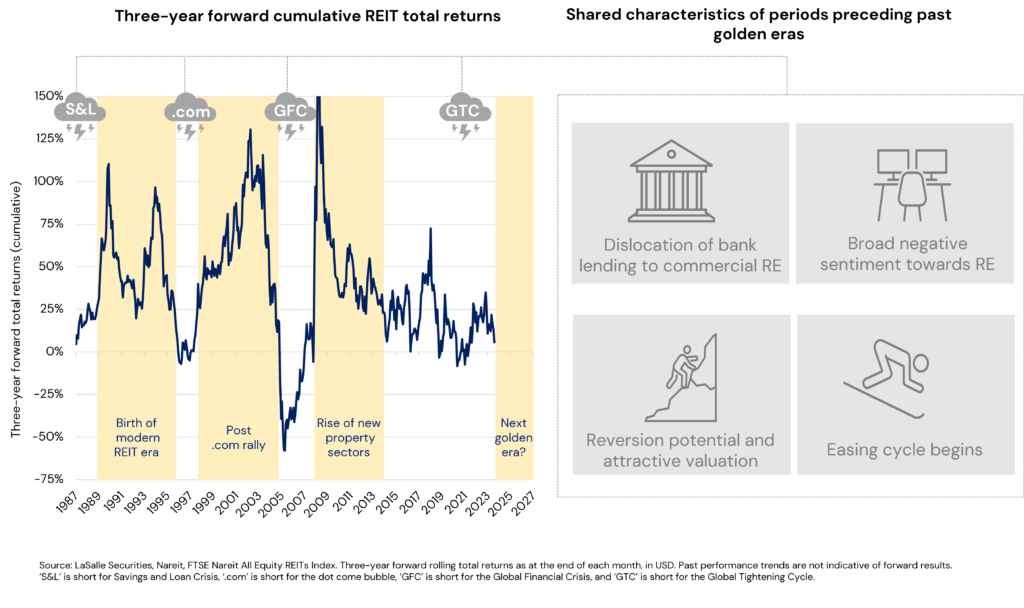
Recent history, marked by a post-pandemic recovery followed swiftly by the Great Tightening Cycle (GTC), presents important similarities to these historical periods of severe market challenges. For instance, real estate bank lending is dislocated. An AI-driven tech frenzy and fears of a generalized “commercial” real estate malaise mean REITs have underperformed compared to equities (see LMQ pg. 22). Meanwhile, signs of an easing or stabilization in financial conditions and a potential global monetary easing cycle are becoming more apparent (see LMQ pgs. 9, 10 and 30).
While history does not repeat itself, it does often rhyme. The presence of those elements in today’s market environment, and the potential for those concerns to flip to opportunities, may foretell the next REIT golden era. We discuss each of these factors in turn.

Challenged real estate lending represents an opportunity for REITs. The past two to three years have been characterized by a significant retrenchment in bank lending to real estate. According to the US Senior Loan Officer Survey (see LMQ pg. 16), the net balance between demand for loans and banks’ willingness to lend points to the widest undersupply of credit in the past ten years, except for during the depths of COVID-19. The shortage is evident in all styles of borrowing, from riskier construction loans to mortgages backed by traditional, defensive apartment assets.
This circumstance presents an opportunity for REITs given their strong financial positions and access to the capital markets. Having learned a painful lesson from the GFC, global REITs went into the GTC with their lowest leverage levels on record (see LMQ pg. 16), and nearly 90% of their debt on fixed rates and an average remaining term of seven years.2 Looking specifically at the US market, the overwhelming majority of REIT borrowing – nearly 80% – is from the unsecured market, at rates that are today almost 100 bps lower than a traditional mortgage. This relative advantage in both access and cost of capital positions REITs to potentially play the role of aggregator and to take market share.

“Commercial” real estate negativity is office-focused, but all real estate is not office. Headlines proclaiming the demise of commercial real estate usually involve a misleading generalization. Professionally managed, income-producing real estate generally should not be conflated with office specifically. It is well known that hybrid work and other factors have harmed office values. Office fundamentals are expected to remain relatively weak,3 with the sector’s growth outlook trailing nearly all other REITs globally. Office landlords will likely need to invest capital aggressively to maintain competitiveness.
These challenging office sector dynamics have unfairly cast a shadow over the broader real estate and REIT universe. In reality, office has over time become a smaller portion of the real estate landscape, especially in the public market; as of the date of this paper, only about 6% of global REITs by market capitalization are office focused (see LMQ pg. 20).4 The public market now offers a diverse sector menu comprising a wide range of dynamic sectors. These include industrial and logistics; forms of rental residential including multi- and single-family rental, manufactured housing and student housing; various formats of healthcare property; and exposure to tech-related real estate in the form of data centers and cell towers. Sectors other than office comprise the overwhelming majority of the public REIT market,5 and many of those sectors have growth outlooks that are forecast to produce earnings growth that is in line with or better than broader equities.6 That growth outlook is underpinned by a combination of secular demand drivers and declining supply levels, the other side of the higher interest rate coin.7
Media coverage naturally tends to focus on the national and trans-national arenas, but local political developments can be especially impactful for real estate investments. Such issues can fly under the radar, especially given many of the most relevant ones are only of interest to a specialist audience. For example, changes in policy around topics like the planning process, property taxes and transfer taxes (a.k.a. stamp duty) can have direct, measurable and immediate impacts on property cash flows and thus values. The distraction of the bright shiny lights of global geopolitics should not be allowed to excessively overshadow the critical local issues that impact real estate.

Underperformance may set the stage for a return to outperformance. The negativity around lending or financing concerns and the “death of office” have weighed on both the absolute and relative performance of REITs. The chart below shows the rolling one-year relative performance differential between REITs and equities; it indicates that REIT underperformance has reached its typical peak historical level before starting to reverse. Periods of underperformance have historically tended to reverse, and this instance is likely no different; indeed, the performance gap is already narrowing.
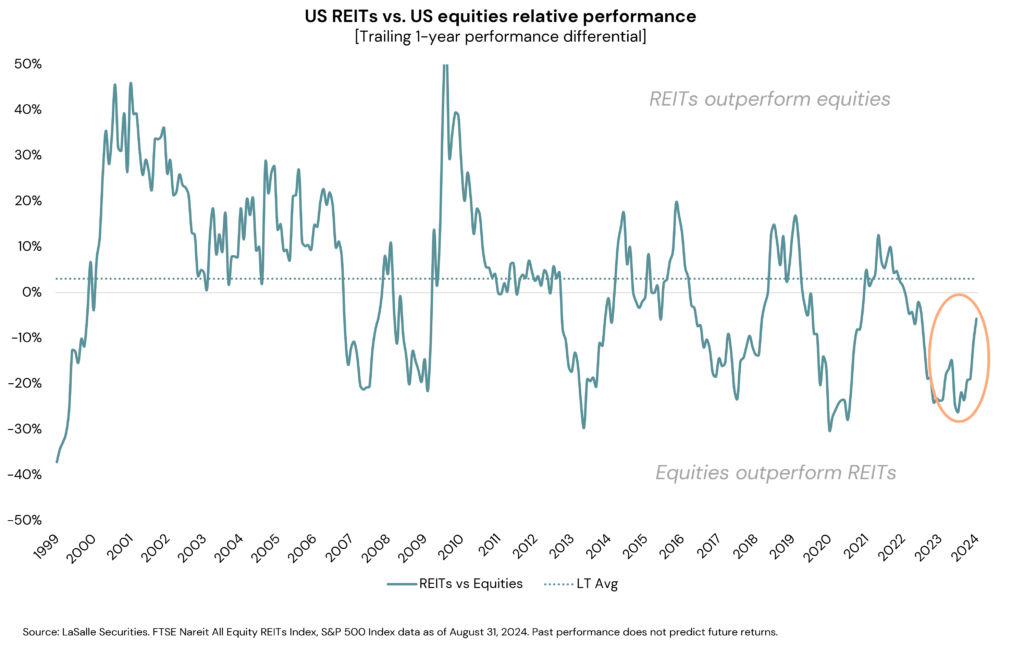

The start of a global monetary easing cycle. Real estate is a capital-intensive business that exhibits significant sensitivity to changes in financial conditions, an observation that holds for both directions of interest rate change. The downside of this dynamic was evident for much of 2022 and 2023, but the upside is likely coming into play. A global monetary easing cycle is now decidedly underway, heralded by the Fed’s 50 bps rate cut on September 18 (see LMQ pg. 31). REITs have generally performed well in periods leading up to and following a central bank easing cycle, as the chart below shows.
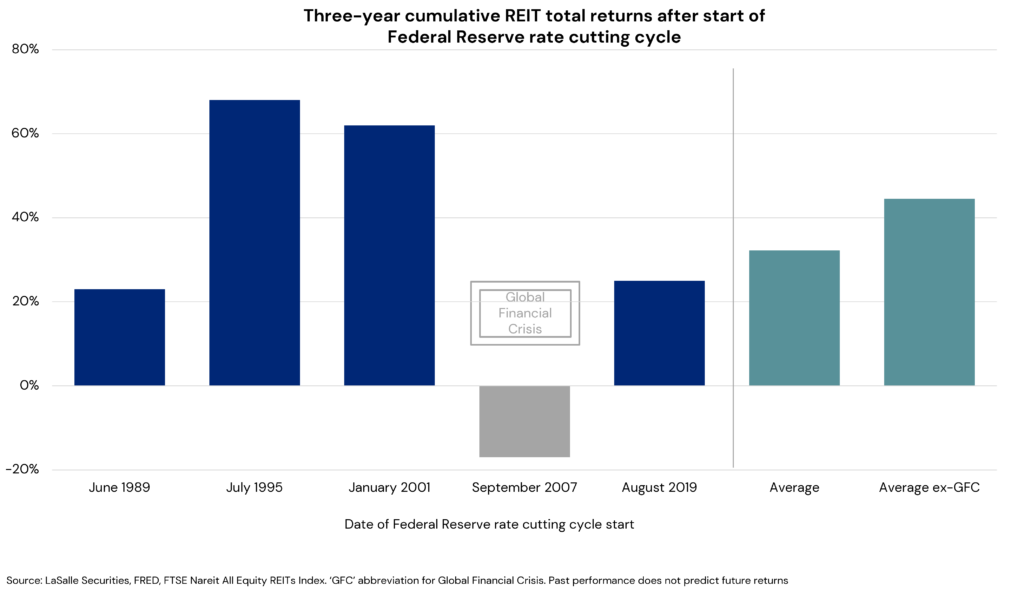
Over the past 25 years, REITs have produced total returns of 8% per annum, with 4-5 percentage points of that return coming from income. LaSalle’s base case underwriting for the next three years is for the REIT market to produce total returns of 9%, slightly above historical averages, with roughly four percentage points of that coming from income. That base case forecast incorporates today’s fundamental outlook and interest rate levels. Should any further easing in financial conditions occur, even only in the amount of 50 bps or 100 bps, those return expectations increase to 13% and 18% per annum, respectively, in line with previous “golden eras.”
Footnotes
1 This analysis based on LaSalle Securities analysis of historical macroeconomic, capital market and listed market trends. Source for the REIT performance data cited below are the FTSE Nareit indices.
2 Source for debt pricing comments in this paragraph: S&P Global Market Intelligence, Green Street Advisors, company financial releases, company research and market analysis conducted by LaSalle Securities.
3 There is considerable global variation in office performance, and there are certainly exceptions to this generalization, especially in select Asia-Pacific markets and the higher end of the European office quality spectrum. For more discussion of global office trends, see our ISA Outlook 2024 Mid-Year Update.
4 Source: LaSalle Securities. Percent of companies classified as office focused within the global listed universe defined as the constituents of the S&P Developed REIT, FTSE EPRA Nareit Developed and Nareit All Equity Indices. Sector classifications determined by LaSalle Securities.
5 As measured by market capitalization. Source: LaSalle Securities. Global listed universe defined by the constituents of the S&P Developed REIT, FTSE EPRA Nareit Developed and Nareit All Equity Indices. Sector classifications determined by LaSalle Securities.
6 As based on LaSalle Securities proprietary modelling and consensus earnings forecasts for the Bloomberg World Index, a proxy for broader equity markets.
7 Higher interest rates mean development proformas use higher exit yield assumptions and more expensive development finance. When interest rates are high, all else being equal, the rents required to justify development are higher.
8 Based on proprietary internal LaSalle Investment Management modeling of securities returns. There is no guarantee that such forecasted returns, or any other returns referred afterwards, will materialize.
This publication does not constitute an offer to sell, or the solicitation of an offer to buy, any securities or any interests in any investment products advised by, or the advisory services of, LaSalle Investment Management (together with its global investment advisory affiliates, “LaSalle”). This publication has been prepared without regard to the specific investment objectives, financial situation or particular needs of recipients and under no circumstances is this publication on its own intended to be, or serve as, investment advice. The discussions set forth in this publication are intended for informational purposes only, do not constitute investment advice and are subject to correction, completion and amendment without notice. Further, nothing herein constitutes legal or tax advice. Prior to making any investment, an investor should consult with its own investment, accounting, legal and tax advisers to independently evaluate the risks, consequences and suitability of that investment.
LaSalle has taken reasonable care to ensure that the information contained in this publication is accurate and has been obtained from reliable sources. Any opinions, forecasts, projections or other statements that are made in this publication are forward-looking statements. Although LaSalle believes that the expectations reflected in such forward-looking statements are reasonable, they do involve a number of assumptions, risks and uncertainties. Accordingly, LaSalle does not make any express or implied representation or warranty, and no responsibility is accepted with respect to the adequacy, accuracy, completeness or reasonableness of the facts, opinions, estimates, forecasts, or other information set out in this publication or any further information, written or oral notice, or other document at any time supplied in connection with this publication. LaSalle does not undertake and is under no obligation to update or keep current the information or content contained in this publication for future events. LaSalle does not accept any liability in negligence or otherwise for any loss or damage suffered by any party resulting from reliance on this publication and nothing contained herein shall be relied upon as a promise or guarantee regarding any future events or performance.
By accepting receipt of this publication, the recipient agrees not to distribute, offer or sell this publication or copies of it and agrees not to make use of the publication other than for its own general information purposes.
Copyright © LaSalle Investment Management 2024. All rights reserved. No part of this document may be reproduced by any means, whether graphically, electronically, mechanically or otherwise howsoever, including without limitation photocopying and recording on magnetic tape, or included in any information store and/or retrieval system without prior written permission of LaSalle Investment Management.
A prudent person sees trouble coming and ducks.
A simpleton walks in blindly and is clobbered.
— Proverbs 22:3
King Solomon’s words of wisdom have been passed down to us for 3,000 years. They still resonate, especially in this modern translation,1 even though the “trouble” is no longer invading Assyrians or Babylonians but the type of danger we bring on ourselves through an all-too-human combination of ingenuity, hubris and ignorance.
Watch any movie from the 1930s to the 1960s and you will see actors inhaling tobacco smoke with abandon. We know better now. Like the generational awareness of the harm caused by tobacco products, real estate owners have gradually become aware of the dangers lurking in certain building materials and contaminated soil. Starting in the 1960s, societies have spent fortunes cleaning up “miracle products.” Asbestos, PCBs, dry cleaning solvents, herbicides and lead pipes were all considered state-of-the-art technologies at various points in human history. None of these inventions were designed with the intention of killing people. They all started with a noble purpose – whether suppressing catastrophic fires, insulating transformers, cleaning wool suits or producing a pleasing nicotine buzz that also curbed the appetite. The “externalities” associated with societal damage from the use of these products took decades to discover and billions to eradicate.
Greenhouse gas emissions share a common ancestry with these miracle products. Heating buildings with diesel fuels, running gas lines through city streets, producing electricity with coal-fired plants—these were all logical, economical, and sensible solutions to the problem of bringing energy to homes, businesses and buildings of all types. The industrial revolution accelerated the growth of cities and raised the quality of life for millions of people by dragging them out of rural poverty. As we now know, society’s dependence on fossil fuels creates new problems which must be dealt with.
The recognition that miracle products can carry hidden (or not so hidden) dangers follows a predictable pattern. Here is what the step-by-step process often looks like:

Evidence and awareness. An environmental problem often requires decades of scientific study and mountains of evidence to convince people that a change is necessary. Even as this evidence accumulates, vested interests organize counterattacks to convince society that the problem is non-existent or over-stated. Eventually the harm to human life becomes so obvious that denial becomes a “fringe position.”

Market demand. In many cases, the process of partial “market adjustment” can begin ahead of government action. Voluntary data collection and industry-led reforms start the slow process of change. In the case of greenhouse gases, the marginal contribution of each emitter is so small, and so embedded in society, that government interventions sometimes lag market-led shifts (e.g., the adoption of LED lighting or heat pumps).

Regulatory response. Yet, government interventions are almost always needed to accelerate and complete behavioral change to truly eliminate harm to the environment and to human life created by “externalities.” These regulations and policy responses often get pushback as competing outcomes are debated in the political arena. Economists agree that putting a price on carbon would be the most efficient and effective solution, but a market mechanism for carbon pricing requires government intervention — in the form of a carbon “tax” or to set up an emissions trading scheme.

Benchmarks and best practices. Eventually, the rise of data benchmarks and peer group comparisons begins to shed light on who, where and how successful “treatments” are applied to any environmental problem. Engineering and laboratory science helps inform this stage of the process, as does public health or industry group data. Integration with market investment processes and decisions leads to a focus on reversing years of damage to the environment and compliance with new regulations and guidelines. At this stage, market-driven and regulatory-driven changes start to converge.

Price integration. Feedback loops are established where type 1 errors (false positives) and type 2 errors (false negative—or overlooked problems) are exposed.2 In loosely regulated situations like climate change, the efficient market hypothesis (EMH) takes hold as the change process gets partially or fully priced by consumers and producers. Economists and policy analysts favor the practice of placing a “price” on an externality to compensate society for the harm. In practice, though, compensatory payments to offset environmental damage are often decided through the courts and litigation.

Continued market and regulatory evolution. The enforcement of tighter regulations also follows its own trajectory depending on the governance structure of a particular country or urban jurisdiction and the toxicity of the problem. The discipline of epidemiology, using population data and public health analysis, is especially helpful at this stage of refining the policy solutions.
The Transition from “Data” to “Wisdom”
For the de-carbonization of buildings, various markets and countries are well into Step 3 (Regulatory Response) and Step 4 (Benchmarks and Best Practices). In Europe the “theory of change” is focused more on EU-wide or national policies to promote energy disclosures through top-down regulatory solutions. In the United States, the emphasis is based more on voluntary pledges, market solutions and regulations that are based on specific local jurisdictions. In most developed countries, steps 5 (Price Integration) and 6 (Market and Regulatory Evolution) are underway, but both have a long way to go.
The rise of real estate sustainability benchmarks (like GRESB) has accelerated in recent years. In many cases, they have expanded to include social factors and tenant well-being alongside environmental metrics. The next hurdle, though, is to establish materiality tests that infuse meaning, and determine financial impacts based on the volumes of reporting that the industry has started to produce and disclose.
Reading through sustainability reports often reveals the triumph of reporting and public relations over salience or relevance. The conjoint challenges of reducing building emissions alongside improving the well-being of building users and the surrounding communities can be obscured by data denominated in less familiar metrics like tons of CO2 or Kilowatt hours. In time, and with experience, the emphasis will shift to what truly moves the needle on all elements of the “sustainable investing” paradigm—and which metrics give off misleading or meaningless “virtue” signals.
Financial metrics align most closely with the “fiduciary duty” of an investor. Moreover, stakeholders have decades of experience analyzing and interpreting financial data. It will take additional time and effort to convert environmental data into financial terms or to simply raise the consciousness of how to interpret energy and emission data in its own right. (LaSalle’s work on the “Value of Green” synthesizes studies of the evidence linking sustainability metrics and financial outcomes. An update on this work is below.)

In writing Proverbs, King Solomon gathered centuries of wisdom based on experience. In the modern world, we often believe that the steps to wisdom are built on a foundation of knowledge, information, and data. The famous “DIKW” hierarchy has been a mainstay of information sciences since the 1930s. Sustainability wisdom is still in the process of being formulated and likely requires more time to make progress. Fortunately, the foundations of this wisdom are already being put in place—first through data (the modern way to refer to many, many experiences), then information (organized and analyzed data), eventually leading to knowledge (patterns are identified and the “what” and “why” questions are answered) and finally reaching the status of accumulated wisdom (how to respond). This is a path that humans have traveled before. More lives are at stake this time around and the wisdom may not be easily agreed upon by all industries, countries and stakeholders. Nevertheless, the search for sustainability wisdom must continue and time is of the essence.
Revisiting LaSalle’s “Value of Green”
In September 2023, LaSalle published our ISA Focus report What is the value of green? Looking at the evidence linking sustainability and real estate outcomes. The report presents a framework on how sustainable attributes of properties can be viewed as both as drivers and protectors of value, along with showcasing findings from the broader literature. We continue to maintain a Value of Green tracker, monitoring research on this subject as it is produced. Some of the findings that have surfaced since the release of our initial report are worth highlighting:
Beyond the direct links between sustainability and historical investment performance in terms of return, rent and value premiums, more signals are emerging as available data on the topic grows, and becomes increasingly forward looking:
Beyond results based on backward-looking data, detailed case studies of investments into sustainable initiatives are being published. The JLL report “Future-Proof Your Investments“ showcased opportunities for sustainable New York offices; another example is CBRE’s report “The impact of on-site rooftop solar on logistics property values.”

Tobias Lindqvist
Strategist, Climate and Carbon Lead, London
Sources:
CBRE (March 2024) UK Sustainability Index Results to Q4 2023. CBRE
P. Torres, G. Bolino, P. Stepan (2024) The Green Tipping Point. JLL
T.Leahy (2022) London and Paris Offices: Green Premium Emerges. MSCI
P. Torres, J. del Alamo (July 2024) Future-proof your investments. JLL
D. Marina, J. Tromp, T. Vezyridis, O. Bruusgaard (July 2023) The impact of on-site rooftop solar PV on logistics property values. CBRE
O. Muir, Y. Chen, T. Metcalf et.al (Dec 2023) Green premium: Study of New York and London Real Estate finds strong evidence for a ‘green premium’. UBS
What can we learn from simulations?
The de-carbonization of buildings is taking place in a complex and ever-changing environment. It is a multi-dimensional problem replete with uncertain outcomes, regulatory change, shifting societal norms and markets, and the politicization of sensitive issues.
At the June 2024 MIT World Real Estate Forum, Professor Roberto Rigobon unveiled a “sustainability simulation” game patterned on his pathbreaking work on social preferences for the European Commission. The technique shows how the traditional economic conceit that we make “resource trade-offs” does not accurately capture how humans make decisions when faced with multi-dimensional choices.
In the simulation, the audience was given nine choices for different retrofit projects for a commercial building. Each choice resulted in simultaneous movement across three metrics that the audience had already established that they cared about — changes in NOI (profitability), CO2 emissions, and tenant satisfaction/well-being. The cost of the projects was amortized into the NOI calculations and the other metrics were also calibrated based on actual data from the US.
The simulation showed that a knowledgeable real estate audience rarely solves just for “pure profits” at the expense of tenant well-being or CO2 emissions. The simulation also mimicked reality—where sometimes profitability moves in synch with reduced CO2 emissions and other times it moves it moves in the opposite direction. The simulation was designed to show how the co-movement depends on the local market and the type of de-carbonization project. Tenant well-being and CO2 emissions could be implicitly linked to revenue when and if participants believe that occupancy, rents and capital raising are all interconnected.
Through their choices, the audience tried to optimize across all three priorities at once — leading to an interesting result that revealed their average willingness to “pay” to reduce a ton of CO2 emissions of about $200 ton. Yet, if asked directly how much they would pay to reduce a ton of greenhouse gas coming from a building, it seems unlikely that many would have volunteered to pay that much. This finding also shows how the language of profitability and returns is much more advanced than the metrics and concepts associated with either decarbonization or tenant satisfaction. And that all these metrics are linked, but not fully integrated in the minds of real estate professionals.
Only a few participants in the game focused only on reducing CO2 (at the expense of decent profits). And just a few focused exclusively on profitability at the expense of tenant satisfaction or CO2 emissions. This seems like a reasonable facsimile of what enlightened investors will do — especially when they know that their actions are being disclosed. As we learn more from these simulations, it is possible that policy makers will be able to refine the mix of incentives and regulations that govern the real estate industry.
Jacques Gordon
Cambridge, Massachusetts
LOOKING AHEAD >
Footnotes
1 The Message, translated from the Hebrew scriptures by Eugene Peterson (1993-2002).
2 These are all part of the learning that occurs with any “treatment hypothesis.” The science of public health provides solid evidence to weigh whether the “treatment” is helping, hurting or having no impact on the eradication of the underlying disease. In real estate, a good example of this is the gradual discovery that with certain types of asbestos, it is more dangerous to remove it than to “encapsulate” it in an existing structure. The science of “decarbonization” is still being established to determine whether, for example, the mass production of lithium batteries does as much harm as the burning of fossil fuels. For real estate and climate change, the “treatment” will likely focus on energy efficiency/ decarbonization interventions that are a combination of government penalties/incentives and voluntary actions. The effectiveness of these treatments will depend on compliance, market response, and how well interventions find acceptance through the political process.
Important Notice and Disclaimer
This publication does not constitute an offer to sell, or the solicitation of an offer to buy, any securities or any interests in any investment products advised by, or the advisory services of, LaSalle Investment Management (together with its global investment advisory affiliates, “LaSalle”). This publication has been prepared without regard to the specific investment objectives, financial situation or particular needs of recipients and under no circumstances is this publication on its own intended to be, or serve as, investment advice. The discussions set forth in this publication are intended for informational purposes only, do not constitute investment advice and are subject to correction, completion and amendment without notice. Further, nothing herein constitutes legal or tax advice. Prior to making any investment, an investor should consult with its own investment, accounting, legal and tax advisers to independently evaluate the risks, consequences and suitability of that investment.
LaSalle has taken reasonable care to ensure that the information contained in this publication is accurate and has been obtained from reliable sources. Any opinions, forecasts, projections or other statements that are made in this publication are forward-looking statements. Although LaSalle believes that the expectations reflected in such forward-looking statements are reasonable, they do involve a number of assumptions, risks and uncertainties. Accordingly, LaSalle does not make any express or implied representation or warranty, and no responsibility is accepted with respect to the adequacy, accuracy, completeness or reasonableness of the facts, opinions, estimates, forecasts, or other information set out in this publication or any further information, written or oral notice, or other document at any time supplied in connection with this publication. LaSalle does not undertake and is under no obligation to update or keep current the information or content contained in this publication for future events. LaSalle does not accept any liability in negligence or otherwise for any loss or damage suffered by any party resulting from reliance on this publication and nothing contained herein shall be relied upon as a promise or guarantee regarding any future events or performance.
By accepting receipt of this publication, the recipient agrees not to distribute, offer or sell this publication or copies of it and agrees not to make use of the publication other than for its own general information purposes.
Copyright © LaSalle Investment Management 2024. All rights reserved. No part of this document may be reproduced by any means, whether graphically, electronically, mechanically or otherwise howsoever, including without limitation photocopying and recording on magnetic tape, or included in any information store and/or retrieval system without prior written permission of LaSalle Investment Management.
Seoul (August 19, 2024) — LaSalle Investment Management Co., Ltd. (“LaSalle Korea”), on behalf of its Korea logistics investment joint venture with a Middle Eastern sovereign wealth fund (“the Joint Venture”) as well as LaSalle Asia Opportunity Fund VI (“the Fund”), has acquired two dry-only logistics facilities in Anseong within Greater Seoul with a combined gross floor area (GFA) of 385,946 square meters, at a purchase price of approximately US$450 million (or KRW5.3 million per pyung).
The two facilities are located next to each other and are built with modern warehouse specifications including spacious yards for its tenants and direct ramp access to each floor with leasable area efficiency of approximately 99%. The latter is a distinct feature for the facilities, compared to other similar sized warehouses designed with circular ramps which significantly reduces net leasable area.
This transaction follows the acquisition of two logistics facilities in Icheon made by LaSalle Korea last year, also on behalf of the Joint Venture and the Fund. LaSalle Korea also divested a separate cold storage warehouse project this year for KRW10.4 million per pyung after completing ground-up development and stabilizing leasing on the asset.
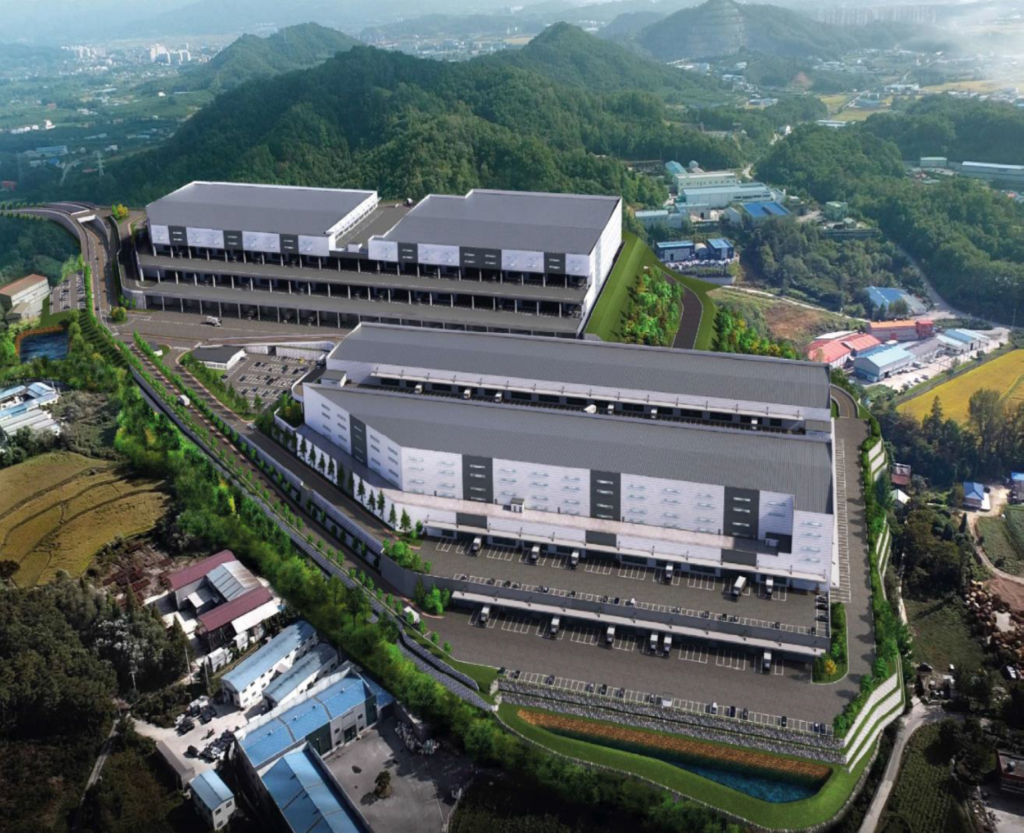
Steve Hyung Kim, Senior Managing Director and Head of Korea, commented: “The logistics sector continues to be one of the most dislocated property types requiring a high level of deal selectivity. LaSalle Korea’s recent acquisitions represent unique opportunities to invest in newly-built modern warehouses with full occupancy by institutional tenants, purchased at well below replacement costs. LaSalle Korea also plans to upgrade and implement new sustainability initiatives across these two investments which total over 4.15 million square feet in GFA.”
End
About LaSalle Investment Management | Investing Today. For Tomorrow.
LaSalle Investment Management is one of the world’s leading real estate investment managers. On a global basis, LaSalle manages over US $87 billion of assets in private and public real estate equity and debt investments as of Q1 2024. LaSalle’s diverse client base includes public and private pension funds, insurance companies, governments, corporations, endowments and private individuals from across the globe. LaSalle sponsors a complete range of investment vehicles including separate accounts, open- and closed-end funds, public securities and entity-level investments. For more information please visit www.lasalle.com and LinkedIn.
NOTE: This information discussed above is based on the market analysis and expectations of LaSalle and should not be relied upon by the reader as research or investment advice regarding LaSalle funds or any issuer or security in particular. The information presented herein is for illustrative and educational purposes and is not a recommendation, offer or solicitation to buy or sell any securities or to adopt any investment strategy in any jurisdiction where prohibited by law or where contrary to local law or regulation. Any such offer to invest, if made, will only be made to certain qualified investors by means of a private placement memorandum or applicable offering document and in accordance with applicable laws and regulations. Past performance is not indicative of future results, nor should any statements herein be construed as a prediction or guarantee of future results.


Seoul (July 30, 2024) — LaSalle Investment Management Co., Ltd. (“LaSalle Korea”), on behalf of LaSalle Asia Opportunity Fund VI (“the Fund”) and a local co-investor, was awarded an office site in Seoul after submitting the winning bid in the 5th round of a non-performing loan (NPL) collateral auction. The winning bid price of approximately US$115 million represented a 33% discount to its appraised value. The land site is walking distance from Gangnam Station within the Gangnam Business District, with existing zoning to allow development of a new office with planned GFA of over 29,000 square meters. The project cost upon completion is estimated to be approximately US$245 million.

This acquisition marks the Fund’s second foray into the office market in Korea following a high-yield loan deal last year to bridge finance a 10-storey office project in Seoul’s Seongsu district. This collateralized loan was priced during a period of credit spread dislocation and was successfully repaid on its maturity date in December 2023, allowing the Fund to exit its first opportunistic debt investment in Asia Pacific.
Amongst key gateway city office markets globally, Seoul’s Gangnam office district continues to display post-pandemic resilience supported by both occupier demand and capital markets liquidity. According to JLL REIS and JLL Korea Research, as of Q1 2024, the office vacancy rate in Gangnam was 0.3%, the lowest compared to the two other business districts in Seoul with net effective rents also registering the highest year on year increase compared to the other business districts.
Steve Hyung Kim, Senior Managing Director and Head of Korea, commented: “Opportunistic investing in a higher cost of capital environment has forced us to be patient and also creative in how we source attractive entry points to our acquisitions. On behalf of our investors, we recently closed on recapitalizations, private off-market sales, and collateral acquisitions from NPL auctions like this recent transaction which capitalizes on both Gangnam’s strong office fundamentals, as well as a lowered project cost basis due to a legacy borrower and junior lender getting foreclosed. Larger sized office sites in Gangnam have retained scarcity value and this latest project from LaSalle Korea will introduce modern designs and sustainability initiatives to which we are very excited about.”
End
About LaSalle Investment Management | Investing Today. For Tomorrow.
LaSalle Investment Management is one of the world’s leading real estate investment managers. On a global basis, LaSalle manages over US $87 billion of assets in private and public real estate equity and debt investments as of Q1 2024. LaSalle’s diverse client base includes public and private pension funds, insurance companies, governments, corporations, endowments and private individuals from across the globe. LaSalle sponsors a complete range of investment vehicles including separate accounts, open- and closed-end funds, public securities and entity-level investments. For more information please visit www.lasalle.com and LinkedIn.
NOTE: This information discussed above is based on the market analysis and expectations of LaSalle and should not be relied upon by the reader as research or investment advice regarding LaSalle funds or any issuer or security in particular. The information presented herein is for illustrative and educational purposes and is not a recommendation, offer or solicitation to buy or sell any securities or to adopt any investment strategy in any jurisdiction where prohibited by law or where contrary to local law or regulation. Any such offer to invest, if made, will only be made to certain qualified investors by means of a private placement memorandum or applicable offering document and in accordance with applicable laws and regulations. Past performance is not indicative of future results, nor should any statements herein be construed as a prediction or guarantee of future results.


Joelle Chen joined LaSalle in 2024 and is responsible for defining LaSalle’s Asia Pacific sustainability strategy, leveraging technical capabilities and organizational best practices to drive sustainability performance.
She was formerly the Head of Sustainability Asia for Lendlease, delivering net zero investment roadmaps for its portfolio, and instrumental in reducing the embodied carbon of new developments through active supplier engagement to reduce cost impacts to projects. She was the first Asia Pacific Head for World Green Building Council and previously headed the Smart Sustainable Cities team at the Singapore Economic Development Board, driving public-private partnerships through innovation platforms.
Joelle graduated from the National University of Singapore with a Master of Architecture and a Master of Business Administration from the Singapore Management University.
TE Capital Partners (“TE Capital”) and LaSalle Investment Management (“LaSalle”) jointly announced the sales launch of Visioncrest Orchard, a freehold Grade A commercial strata development located in the heart of Singapore’s prime Orchard Road precinct, with a combined office and retail area of 154,711 sqft (14,373 sqm). TE Capital is the operator for Visioncrest Orchard and the partners are accompanied in the joint venture by Metro Holdings as a capital partner of the TE Capital-managed vehicle.

As part of the launch, a 14,725 sqft office space on Level 6 and a 14,844 sqft office space on Level 9 have been released for sale at S$3,980 psf and S$4,130 psf respectively. Following VIP previews in June, a 14,725 sqft office space and several retail units spanning 1,388 sqft are currently under due diligence.
TE Capital and LaSalle attribute the strong demand for the LEED Gold certified, 11-storey freehold office to the allure of the Orchard submarket as well as the asset’s outstanding core qualities which have been boosted by substantial enhancements.
Located along Penang Road, Visioncrest Orchard offers easy walking access to Dhoby Ghaut and Somerset Mass Rapid Transit (MRT) stations, with direct access to three train lines (North-South, North-East and Circle lines). The Central Expressway (CTE) and Pan Island Expressway (PIE) expressways can be reached within a few minutes’ drive.
Situated just over 400 meters (437 yards) from Plaza Singapura and 550 meters (601 yards) from 313@Somerset, Visioncrest Orchard occupies a strategic position close to Orchard’s vibrant retail scene while being just a stone’s throw away from Singapore’s central business district. It is also nestled within the exclusive Oxley enclave and Istana, the official residence and office of the president of Singapore, providing a coveted address which combines prestige with cultural and historical significance.
Offices at Visioncrest Orchard boast greenery views through expansive full-glass, solar-protected windows with floor to floor heights reaching 4.3 meters. Large floorplates of approximately 14,500 sqft offer numerous possibilities for customization, while a generous provision of 135 onsite parking lots offer convenience for occupiers. Smart fittings that offer user-friendly building access via self-registration e-kiosks, as well as enhanced security through biometric features such as facial recognition are among the upgrades that occupiers can expect, while amenities such as a swimming pool, a well-equipped gym, a tennis court and other recreational facilities promote the integration of wellness with work.
In the years to come, Visioncrest Orchard is expected to benefit from commitments by the Singapore government to revitalize the Orchard district. Initiatives such as the Strategic Development Incentive (SDI) scheme will see the introduction of broadened urban planning parameters such as increased building heights, expanded gross floor area and more flexible land use permissions on older assets. Plans to pedestrianize parts of Orchard and redesign traffic flows will also contribute to the transformation of the area. As the availability of high-quality, high-specification freehold offices in the Orchard district will continue to be limited, the partners expect interest in Visioncrest Orchard to remain robust.
CBRE, ERA, JLL, Knight Frank, PropNex and Savills have been appointed as agents for Visioncrest Orchard.
About TE Capital Partners
TE Capital Partners is a uniquely positioned real estate investment and fund management firm, equipped with development management capabilities that focuses on APAC real estate markets. Established in 2019, TE Capital Partners is backed by the family office of Mr Teo Tong Lim, Group Managing Director of Tong Eng Group, a real estate company with a history of more than 80 years, having owned and developed close to 200 acres of land, comprising mixed-use, office, retail, landed housing and apartments.
As of Q4 2023, TE Capital Partners and its subsidiaries, has an AUM of more than S$3 billion across Singapore, Australia, Japan and the United States, and the Principals have developed more than S$3 billion of commercial office, residential and mixed development projects in Singapore in recent years, such as Solitaire on Cecil. Some commercial projects under management include 350 Queen Steet and 312 St Kilda Road in Melbourne, Australia. For more information, please visit www.tecapitalasia.com and LinkedIn.
NOTE: This press release may contain forward-looking statements by TE Capital Partners and should not be relied upon by readers and/or investors for any purposes. This is not a recommendation, offer or solicitation to buy or sell any securities or to adopt any investment strategy in any jurisdiction where prohibited by law or where contrary to local law or regulation. No representation or warranty express or implied is made as to, and no reliance should be placed on, the fairness, accuracy, completeness or correctness of the information or opinions contained in this press release. Actual performance, outcomes and results may differ from those expressed in forward-looking statements as a result of a number of risks, uncertainties and assumptions.
About LaSalle Investment Management | Investing Today. For Tomorrow.
LaSalle Investment Management is one of the world’s leading real estate investment managers. On a global basis, we manage approximately US$87 billion of assets in private equity, debt and public real estate investments as of Q1 2024. The firm sponsors a complete range of investment vehicles including open- and closed-end funds, separate accounts and indirect investments. Our diverse client base includes public and private pension funds, insurance companies, governments, corporations, endowments and private individuals from across the globe. For more information please visit www.lasalle.com and LinkedIn.
For more information, please visit www.lasalle.com, and LinkedIn.
NOTE: This information discussed above is based on the market analysis and expectations of LaSalle and should not be relied upon by the reader as research or investment advice regarding LaSalle funds or any issuer or security in particular. The information presented herein is for illustrative and educational purposes and is not a recommendation, offer or solicitation to buy or sell any securities or to adopt any investment strategy in any jurisdiction where prohibited by law or where contrary to local law or regulation. Any such offer to invest, if made, will only be made to certain qualified investors by means of a private placement memorandum or applicable offering document and in accordance with applicable laws and regulations. Past performance is not indicative of future results, nor should any statements herein be construed as a prediction or guarantee of future results.


What first drew me to LaSalle was its global reputation as a successful real estate investor. I knew the Australian team was a tight knit group with a strong track record, and they were known as a practical, on the ground investor focused on real estate fundamentals.
Prior to joining LaSalle, I worked with the Real Assets team at a global bank. In this role, I provided coverage for various private equity groups in infrastructure and real estate, covering renewables, oil and gas, public private infrastructure, mining, and transport sectors. LaSalle was a client of the bank and well known to me. My first direct interaction with the Australian and Asia Pacific team at LaSalle occurred in 2021 when they were in the process of acquiring an industrial asset in Sydney.
My role primarily involves securing external debt for acquisition and refinancing purposes, as well as assisting with direct real estate acquisitions in Australia on behalf of clients and LaSalle funds. Over the past year, I have also been involved in the development of new products in the Australian market.
Since joining, I have progressed from Associate to Manager last year, and more recently this year to Vice President. I’ve seen a large shift in the macro environment, notably higher interest rates, declining valuations, and a challenging capital markets outlook. This has placed pressure on capital stacks and one of my main responsibilities has been to manage these positions within the existing portfolio, working closely alongside Australian and APAC teams.
On the acquisitions front, although more subdued, the team has been actively reviewing and pursing predominantly opportunistic transactions across all sectors, but with a particular focus on industrial and living strategies.
What first drew me to LaSalle was its global reputation as a successful real estate investor. I knew the Australian team was a tight knit group with a strong track record, and they were known as a practical, on the ground investor focused on real estate fundamentals.
My favorite aspect of the job is that at its heart, LaSalle is an entrepreneurial business, and it needs to be. We need think creatively and be smart, but be prudent in finding ways to generate performance. We also need to have ‘an ear to the ground’ and in a position to act quickly and with conviction. LaSalle is structured in a way that fosters this environment. You get access to senior decision makers, and you are encouraged to present and progress ideas. I like that real estate is a people business, driven by relationships, track records and experience. I feel lucky to be part of a company that values these qualities.
I’ve also had the opportunity to represent LaSalle on the Property Council of Australia’s National Real Estate Capital Markets Committee, which has been a great experience.
I am grateful for the experience, responsibilities and exposure my role has given me so far. Regarding what’s next, it’s anyone’s guess, but I know LaSalle offers several exciting potential career paths. I see big opportunities for the business going forward and believe there is potential to make a real impact here.
I like all things outdoors. I’m a big sailor – it’s a fantastic tactical and competitive team sport that I enjoy on evenings and weekends when time permits! We are lucky in Australia, with natural beauty and Sydney Harbour on the doorstep.
“You take the blue pill—the story ends, you wake up in your bed and believe whatever you want to believe. You take the red pill… all I’m offering is the truth.”
– Morpheus to Neo, The Matrix (1999)
We published the global chapter of the ISA Outlook 2024 on November 14, 2023, just before euphoria about a potential ‘V’-shaped property market turnaround emerged. Interest rates fell quickly as financial markets priced in several US Federal Reserve (Fed) rate cuts in 2024. For a time, it looked as though our prediction that it would take a little longer for markets to digest a renewed spike in rates would not age well.
In this Mid-Year Update, however, we look back to find an outlook with an uncanny resemblance to that of six months ago. This is not because nothing has changed, but because the mood has gone full circle. The landscape remains characterized by interest rate volatility, soft fundamentals in some markets, and gaping quality divides, but also by pockets of considerable strength. Another factor that has not changed is that financial conditions (i.e., interest rates) remain the dominant driver of the market, and that political and geopolitical uncertainties are in focus in many countries (see LaSalle Macro Quarterly, or LMQ, pages 4-6).1
In this report, we discuss five themes we see driving real estate markets for the rest of 2024 and beyond. At our European Investor Summit in May, our colleague Dan Mahoney argued that—like Neo in the Matrix—we should take the red pill and endeavor to see the market as it is, not as we’d like it to be. Taking the red pill requires a realistic view on property values. It reveals as unlikely a return to an environment of ultra-low interest rates or uniformly benign fundamentals in the “winning” sectors.
But it does not mean that there will not be attractive investment opportunities. Unlike the bleak dystopia of The Matrix, there are many reasons for optimism, as well as signs that the coming months will come to be seen as a favorable investment vintage. That said, investing successfully will require a balance of big-picture perspective and granular discernment, and a mix of patience and willingness to take risk.
Over the past year, we likened the interest rate path in most markets to a strenuous mountain trek: the relentless climb (2022), the range-bound altitude of an alpine ridge line (H1 2023), the unexpected upward turn in the trail (Q3 2023), and the mountain meadow of cooling inflation and expected rate cuts (Q1 2024). More recently, there have been upward turns in the interest rates trail whenever there have been signs of sticky inflation in the US and other key countries.

One thing is for sure: No map exists for this trail. While interest rates have big consequences for real estate capital markets, they are extremely difficult to predict. We continue to caution investors against overconfidence in their ability to forecast the path of long-term interest rates.
Mercifully, falling rates are not a necessary condition for a robust recovery in real estate transaction activity. Despite interest rates remaining elevated, property markets are already showing signs of finding their footing, such as renewed US CMBS issuance and resilient deal volumes in many markets and sectors.2 A key reason for this is that wherever interest rates have spiked over the past two and half years, especially Europe and North America,3 real estate prices have by now adjusted downward significantly. The relativities between expected returns for real estate and those for other asset classes now look more appropriate than they have in many months; in other words, more of the market is at or near fair value.4
That said, while lower rates are not necessary for real estate capital market normalization, greater stability in rates than we have been seeing would no doubt help. Interest rate volatility is the enemy of a smoothly functioning private real estate transaction market. Excessive movement in borrowing costs during due diligence periods can lead to dropped deals and re-trades. Moreover, when rates are volatile, the conclusions of fair value models are also volatile, impacting both buyers’ and sellers’ assessments of appropriate pricing. Looking at recent trends in the MOVE index,5,6 interest rate volatility appears to be gradually easing but is still elevated relative to recent history (see LMQ page 13).
Increasing stability in rates is welcome, but for now it is reasonable to expect continued strains in real estate capital markets that create both challenges and opportunities. Such conditions can represent favorable entry points for debt investors (lenders), distressed equity players and core investors seeking entry points below replacement
Over the past half-year, interest rates have been increasingly influenced by widening divergences between near-term growth, inflation and monetary and fiscal policy outlooks. Most notably, the bond yield gap between the US and other markets, especially the eurozone, has widened. US growth and inflation have surprised on the upside, in the face of softening or stability elsewhere. Markets currently expect only one Fed rate cut in 2024, down from up to four earlier in the year.7 Meanwhile, in early June the Bank of Canada became the first G7 central bank to cut rates since the great tightening cycle began, with the European Central Bank (ECB) following shortly after (see LMQ page 7).
Regional groupings can obscure divergences within them. The key driver of eurozone softness is Germany (see LMQ page 23), owing to its reliance on manufacturing exports and past dependance on Russian energy. Meanwhile, the Spanish economy remains strong due to healthy consumption and tourism. Within North America, Canada’s economy is underperforming the US because the structure of its residential mortgage market makes it more exposed to higher rates.8 These intra-regional variations may have a range of impacts on property markets, for example by shifting the relative short-term prospects for demand and value.
Japan and China represent long-standing divergences that persist.9 In China, a loosening bias remains in effect as inflation hovers at around 0%.10 In Japan, monetary policy is gradually normalizing, but so far without triggering a big increase in interest rates (at least compared to elsewhere). In March, the Bank of Japan (BOJ) abandoned negative interest rates and ended most unorthodox monetary policies, though it has since held policy interest rates at around zero. Japan’s economy becoming more “normal” is generally a positive, but interest rate differentials have pushed the yen to a 34-year low against the US dollar (see LMQ page 14), creating upside risks to inflation.11 But notably, Japan remains the one major global market in which real estate leverage remains broadly accretive to going-in yields.
Aside from reinforcing the potential benefits of diversification, what do these divergences mean for investors? Mechanically, any unexpected relative softening of interest rates should, all else equal, be beneficial for relative value assessments of real estate in that market. But firmer rates in the US have predictably come alongside a stronger US dollar. This points to practical limits to global monetary policy divergences; central bankers are keenly aware that weaker currencies come with inflationary risks. Moreover, it is worth asking how persistent macro divergences will be; current divergences are rooted in timing differences of expected rate cuts, rather than an anticipated permanent disconnect.
For several years, secular themes and structural shocks have dominated the trajectories of global property markets. But there is a clear cyclical pattern reemerging in the form of a pronounced upswing in vacancy across global logistics markets, and in US apartments. The return of cyclicality in those favored sectors is having significant impacts on their near-term prospects.
The softening trend is not new. In the ISA Outlook 2024, we identified hot sectors “coming off the boil.” Part of this was down to normalizing demand levels, but elevated new supply was also a key driver. As expected, the softening we observed has continued to deepen, leading to outright rent declines in certain markets, especially for apartments in US sunbelt metros.
Softening fundamentals are not to be ignored, but we recommend investors to have the conviction to “ride the wave” of excess supply. Wide variation in supply levels at the market and submarket level means that investors with granular market data and the discipline to incorporate it into their market targeting processes should be positioned to select the most attractive markets and submarkets.

Moreover, the forces that create cycles sow the seeds of their own reversal; we expect the current supply wave to moderate soon, as evidenced by sharply falling construction starts (see LMQ page 25). Many of the projects being completed today broke ground when credible exit cap rate assumptions were several hundred basis points lower than today. Higher interest rates upended development economics; far fewer new developments can now be justified on today’s mix of land prices, construction costs and financial conditions.
Finally, investors should be prepared to think about cash flows in both real and nominal terms. When cooling nominal rental growth comes alongside cooling inflation, as it does today, it is possible for that to be consistent with solid real rental growth, depending on the relative magnitude of each.
Beyond the reassertion of supply cycles in some markets, there is an evolving mix of secular stories that deserve attention. Some of these are so long-standing that they could almost be considered constants. These include structural shortages of housing in most of Europe, Canada and Australia, as well as the widespread changing definition of core real estate in favor of more operational niche sectors and sub-types.12 We continue to be strong advocates for investment in undersupplied living sectors, and for participating in the institutionalization and growth of niche sub-sectors such as single-family rental (SFR) and industrial outdoor storage (IOS).
More dynamic themes that deserve a closer look include the stabilization of retail real estate and divergent office investment prospects:
Other key secular themes driving investment opportunities today include the implications of artificial intelligence (AI) adoption for data center demand, student mobility for student accommodation in Europe and Australia and aging for senior housing.
Past experience of real estate cycles suggests that the best investment opportunities tend to arise in periods marked by significant uncertainty, volatility and pessimism, but also when early signs of improvement and stabilization are present—in other words, moments similar to today’s environment. Experience also reinforces that it is nearly impossible to time the market, so it is best to be selectively active throughout the cycle. By the time the “all clear” signal is sounded after a market crisis, it is too late to achieve the best risk-adjusted returns.
That said, “red pill” thinking means we must recognize that the coming capital market rebound is unlikely to be as sharp as it was after the Global Financial Crisis (GFC), given that central banks are unlikely to usher in ultra-loose policy. Seeing the market as it is requires accepting the likelihood that interest rates could remain sticky, and a realistic view of near-term fundamentals as a wave of supply impacts some sectors.
Footnotes
1 Also see our ISA Briefing, “Elections everywhere, all at once: Geopolitics and risk”, April 2024. In that note, we highlighted the various sources of political uncertainty this year and outlined how we recommend investors consider these risks. At the time of writing, political developments are particularly salient for short-term movements markets in France and the UK, given elections that have been called in those countries.
2 Source: MSCI Real Capital Analytics and Trepp
3 Japan and China are key exceptions that we cover in greater depth under the “deciphering divergence” header.
4 Of course, there is considerable variation embedded in this and any assessment of fair value. As always, the devil is in the detail on the assumptions that go into expected and required returns; at LaSalle, specific fair value inputs and conclusions remain a proprietary output.
5 The Merrill Lynch Option Volatility Estimate (MOVE) is a market-implied measure of volatility in the market for US Treasuries. It calculates options prices to reflect the expectations of market participants on future volatility. Observation made as of June 24, 2024.
6 Source: Bloomberg as of June 26, 2024.
7 For more discussion of the Canada-US divergence and the consequences of mortgage rate resets, see our ISA Briefing, ”The impact of residential mortgage resets”.
8 For more detailed discussion of the unique factors in the Japanese and Chinese macro environment, see our ISA Briefing, “Key economic questions for China and Japan”.
9 Source: Oxford Economics; Gavekal Dragonomics as of June 26, 2024.
10 Economic theory suggest that weak currency may contribute to inflationary forces because it pushes up the cost of imported goods.
11 See our PREA Quarterly article on “The Changing Definition of Core Real Estate” for a discussion of how the characteristics considered desirable in core properties is moving from traditional metrics like lease length, to observed qualities like the stability of cash flows. This shift elevates the appeal of niche sectors sub-sectors versus traditional sectors such as conventional office.
12 See our ISA Focus report “Revisiting the future of office”, published March 2023.
Important notice and disclaimer
This publication does not constitute an offer to sell, or the solicitation of an offer to buy, any securities or any interests in any investment products advised by, or the advisory services of, LaSalle Investment Management (together with its global investment advisory affiliates, “LaSalle”). This publication has been prepared without regard to the specific investment objectives, financial situation or particular needs of recipients and under no circumstances is this publication on its own intended to be, or serve as, investment advice. The discussions set forth in this publication are intended for informational purposes only, do not constitute investment advice and are subject to correction, completion and amendment without notice. Further, nothing herein constitutes legal or tax advice. Prior to making any investment, an investor should consult with its own investment, accounting, legal and tax advisers to independently evaluate the risks, consequences and suitability of that investment.
LaSalle has taken reasonable care to ensure that the information contained in this publication is accurate and has been obtained from reliable sources. Any opinions, forecasts, projections or other statements that are made in this publication are forward-looking statements. Although LaSalle believes that the expectations reflected in such forward-looking statements are reasonable, they do involve a number of assumptions, risks and uncertainties. Accordingly, LaSalle does not make any express or implied representation or warranty, and no responsibility is accepted with respect to the adequacy, accuracy, completeness or reasonableness of the facts, opinions, estimates, forecasts, or other information set out in this publication or any further information, written or oral notice, or other document at any time supplied in connection with this publication. LaSalle does not undertake and is under no obligation to update or keep current the information or content contained in this publication for future events. LaSalle does not accept any liability in negligence or otherwise for any loss or damage suffered by any party resulting from reliance on this publication and nothing contained herein shall be relied upon as a promise or guarantee regarding any future events or performance.
By accepting receipt of this publication, the recipient agrees not to distribute, offer or sell this publication or copies of it and agrees not to make use of the publication other than for its own general information purposes.
Copyright © LaSalle Investment Management 2024. All rights reserved. No part of this document may be reproduced by any means, whether graphically, electronically, mechanically or otherwise howsoever, including without limitation photocopying and recording on magnetic tape, or included in any information store and/or retrieval system without prior written permission of LaSalle Investment Management.
Over the last several years, we have seen an increase in the number of institutional investors around the world interested in adding real estate debt to their portfolios.1 In some instances, this is to replace an allocation to traditional fixed income, while in others it is both an enhancement and a way to further diversify their current level of real estate holdings.
Real estate debt versus traditional fixed income
Real estate debt differs from traditional fixed income investments in a variety of ways, primarily through collateralization, income generation, differing risk factors, the potential for securitization and its direct relationship to underlying real estate assets. In the same way that investors looking for reliable income streams and relative stability across a number of fixed income products such as government bonds or corporate credit, they can also turn to real estate debt investments.
One key differentiator for the asset class is that it is typically secured by tangible collateral in the form of real estate. Further, real estate credit investments benefit from attractive positions within a capital structure, benefitting from a subordinated first-loss position from equity, and also from negative control structures which give lenders an ability to proactively protect capital in a downside scenario. In contrast, traditional fixed income investments such as corporate or government bonds are usually unsecured and rely solely on the creditworthiness of the issuer.
For many institutional investors, income generation is a key objective and something that real estate debt investments can generate primarily through interest payments on the loan. These interest payments are often higher than on traditional fixed income investments such as sovereign or investment-grade corporate bonds. Additionally, real estate debt may also offer the potential for additional income through loan origination and exit fees, or in some instances, profit participation. Like other investments in any asset class, real estate assets are subject to market fluctuations and economic cycles. There are, however, additional property-specific risks that investors should take into consideration. These include factors such as underlying occupancy and cash-flow drivers as well as capital markets. Investors should also consider the wider macroeconomic and credit-risk considerations that investors in listed fixed income must factor into their decision making. Lending against property embeds the possibility of active takeovers, also known as workouts, requiring hands-on asset management expertise.
In some instances, real estate debt can be securitized, meaning loans are packaged together and sold as securities in the market. This allows investors to gain exposure to real estate debt through mortgage-backed securities (MBS) or collateralized debt obligations (CDOs). Traditional fixed income investments, on the other hand, are typically traded as individual bonds or included in bond funds.
Lastly, real estate debt investments are directly tied to specific properties or real estate platforms. The performance of the underlying property and its cash flows can impact the value of the debt, along with a borrower’s ability to repay it. Traditional fixed income investments are generally linked to the creditworthiness and financial health of the issuer, without a direct connection to specific underlying assets.
So why should institutional investors consider real estate debt?
As with any other asset class, real estate debt has its own unique set of attributes which, as part of a diversified, risk-adjusted portfolio, may provide investors with compelling reasons to include it within their overall strategy.
Key benefits may include:
As always, it’s important that real estate debt, like any other asset class, is considered as a component part of an overall portfolio of investments constructed with the underlying objectives of the investor in mind. When properly integrated into a portfolio, real estate debt investments have the potential to offer institutional investors the opportunity to generate stable income, diversify their portfolios, align their investments with long-term liabilities, protect against inflation, target attractive risk-adjusted returns and, in some cases, adhere to regulatory requirements.
Understanding the capital structure
The term “capital structure” in real estate investment is used to represent layers of debt and equity within an investment structure, each with its own risk-return profile and repayment priority. Investors choose a position in the structure based on risk appetite, desired returns and level of control or ownership in the investment. LaSalle invests across all layers of the capital structure.
Common equity represents an ownership stake of the property. These investors bear the highest risk but also have the potential for the highest returns. They participate in the property’s cash flows and profit distributions only after others have been paid. They have the greatest exposure to the property’s performance and value appreciation but also face the greatest risk during market downturns or property underperformance.
Preferred equity represents a hybrid investment between debt and equity. These investors provide capital to the project but have a higher claim on profits and cash flows than common equity holders. They enjoy a priority in distribution but still hold a subordinate position to debt holders. They often receive a fixed return, similar to interest on debt, and may also have upside potential linked to a property’s appreciation in value.
Mezzanine debt sits between senior debt and equity in the capital structure. Mezzanine lenders provide loans that have secondary priority in terms of repayment but carry a higher risk profile compared to senior debt. As a result, they tend to offer higher interest rates or additional equity-like features to compensate for the increased risk.
Senior debt occupies the most senior position in the capital structure and has the highest priority for repayment in case of default or enforcement. Lenders providing senior loans hold the first lien on the property, meaning they have the first claim to cash flows and proceeds in the event of liquidation and are usually secured by asset level security. Typically, senior debt offers lower yields compared to other subordinated positions within the capital structure due to its lower risk profile.
1 INREV Investment Intentions Survey, 2017 – 2024
This publication does not constitute an offer to sell, or the solicitation of an offer to buy, any securities or any interests in any investment products advised by, or the advisory services of, LaSalle Investment Management (together with its global investment advisory affiliates, “LaSalle”). This publication has been prepared without regard to the specific investment objectives, financial situation or particular needs of recipients and under no circumstances is this publication on its own intended to be, or serve as, investment advice. The discussions set forth in this publication are intended for informational purposes only, do not constitute investment advice and are subject to correction, completion and amendment without notice. Further, nothing herein constitutes legal or tax advice. Prior to making any investment, an investor should consult with its own investment, accounting, legal and tax advisers to independently evaluate the risks, consequences and suitability of that investment. LaSalle has taken reasonable care to ensure that the information contained in this publication is accurate and has been obtained from reliable sources. Any opinions, forecasts, projections or other statements that are made in this publication are forward-looking statements. Although LaSalle believes that the expectations reflected in such forward-looking statements are reasonable, they do involve a number of assumptions, risks and uncertainties. Accordingly, LaSalle does not make any express or implied representation or warranty and no responsibility is accepted with respect to the adequacy, accuracy, completeness or reasonableness of the facts, opinions, estimates, forecasts, or other information set out in this publication or any further information, written or oral notice, or other document at any time supplied in connection with this publication. LaSalle does not undertake and is under no obligation to update or keep current the information or content contained in this publication for future events. LaSalle does not accept any liability in negligence or otherwise for any loss or damage suffered by any party resulting from reliance on this publication and nothing contained herein shall be relied upon as a promise or guarantee regarding any future events or performance. By accepting receipt of this publication, the recipient agrees not to distribute, offer or sell this publication or copies of it and agrees not to make use of the publication other than for its own general information purposes.
Copyright © LaSalle Investment Management 2024. All rights reserved. No part of this document may be reproduced by any means, whether graphically, electronically, mechanically or otherwise howsoever, including without limitation photocopying and recording on magnetic tape, or included in any information store and/or retrieval system without prior written permission of LaSalle Investment Management. GL001731MAY25
Isabelle Brennan rejoined LaSalle as a Senior Managing Director in 2024, having previously worked within the Investor Relations team between 2015 and 2017. As Product Specialist – Credit and Global Solutions, she works with clients on a global basis to drive capital raising efforts in these verticals, as well as ensuring that LaSalle’s strategies meet investor needs. She is a member of the Investor Relations Management Board.
Prior to joining LaSalle, Isabelle held similar roles across the Credit and Indirect platforms at CBRE IM and M&G Investments, with responsibility for capital raising and investor relations across these channels globally. Earlier in her career, Isabelle worked within the Indirect and Fund of Funds Investment teams at Henderson Global Investors, now Nuveen (EMEA) and Prupim, now M&G Real Estate (Global), underwriting, investing and managing multi-manager investments on behalf of global clients.
Isabelle received her Bachelor’s degree from Monash University, Melbourne, and holds an Master of Science in Real Estate from Cass Business School, London. She also holds UK qualifications in Psychology and Law. She is active across industry organizations, sitting on the INREV debt working group, and as Treasurer of the Cambridge Land Economy Advisory Board (CLEAB).
This article first appeared in the May 2024 edition of PERE
Kunihiko Okumura, LaSalle’s Japan CEO and Co-Chief Investment Officer for Asia Pacific, speaks with PERE about why Japan continues to be an attractive market.
Looking up: Investors stay positive at the end of an era
The return of steady inflation to Japan will put pressure on asset management skills, but there are opportunities across the board, says LaSalle’s Kunihiko Okumura
In an interview with PERE for its 2024 Japan report, Kunihiko Okumura, LaSalle’s Japan CEO and Co-CIO for Asia Pacific, shared his outlook on the market, including the impact of Japan’s interest rate hike and opportunities across various sectors such as office, multifamily and logistics.
Want to read more?
Recognition has grown substantially in recent years that climate risk can shape real estate investment outcomes. This owes to an increasing frequency and severity of loss events,1 surging insurance premiums,2 improving data availability and a mounting reporting burden driven by regulations.3 Investors have had to move quickly from acquiring basic climate risk literacy, to sourcing good quality climate risk data, to most recently, leveraging that data into improved investment decisions. There is a clear and rising likelihood that investors on the lagging edge of this process may underperform.
At LaSalle, we have sought to share insights from our own climate risk journey, combining that with broader analysis of our industry’s climate risk challenges and opportunities. In 2022, we partnered with the Urban Land Institute (ULI) on a report, How to choose, use, and better understand climate-risk analytics, which addressed the difficulties in selecting and evaluating climate data from an ever-changing and increasingly crowded—and sometimes contradictory—data provider landscape. In April, we released a new report with ULI, Physical Climate Risks and Underwriting Practices in Assets in Portfolios, which looks at how investors are taking these data and seeking to make better-informed buying, selling and portfolio construction decisions based on them.
While the joint ULI report takes an industry-wide view, this ISA Briefing looks at the topic through the lens of LaSalle’s own investment process. We present three case studies of our evaluation of climate risk on a regional, market and asset-level scale. These examples – one each from each of our global investment regions – illuminate how we are taking account of climate risk and lay out our views on issues investors should be thinking about.
In 2023, the US recorded 28 weather/climate disaster events for which losses exceeded $1 billion, the highest recorded number of distinct events exceeding that threshold.4 But of course, these events were not uniformly distributed across the country. To better understand the geographic predisposition of parts of the country to these hazards, LaSalle’s US Research and Strategy team developed two separate climate risk indexes, evaluating current and future climate risk. The indexes encompass a range of climate hazards, such as heatwaves, floods and wildfires, with earthquakes added as a non-climate threat. The current climate risk index harnesses machine learning to scrutinize hyper-local data from the Federal Emergency Management Agency (FEMA). Meanwhile, the future climate risk projections rely on data from the Rhodium Group data set, as analyzed by ProPublica and assuming an RCP 8.5 scenario.5
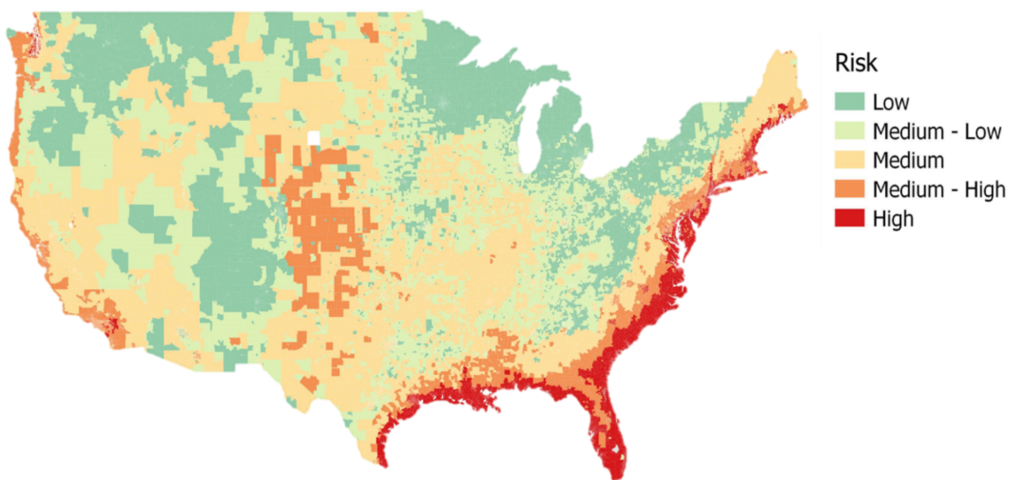
Looking at climate risk at a regional scale has been useful in several ways. First, it can accelerate analysis of new opportunities by acting as a “yellow flag,” directing resources early in the underwriting process toward deeper analysis into asset-specific climate risk issues that may turn out to be red flags. Second, regional climate risk can be integrated into market-targeting tools, weighing it alongside other factors that influence real estate performance (for example, demographic variables such as population growth and real estate variables like the prospects for rental growth). To this end, LaSalle has embedded these climate risks scores into our proprietary Target Market Analyses (TMAs). Thirdly, it can help frame inquiry into how metro-level performance factors, such as migration patterns, can interact with climate risk over time.
On that last point, the map appears to beg a question about recent migration trends that have favored the Sunbelt.6 Are people disproportionally moving to at-risk places, and if so, why? An important follow-on question that is germane for investment strategy is whether climate change may eventually cause a reversal of recently observed migration patterns. Indeed, we do observe a discernible, moderately positive correlation7 (+29%) between climate risk exposure and increased migration over the past five years. This pattern holds, and even intensifies, when considering population growth projections for the next five years (+47% correlation).8
The implication is that regions facing severe climate challenges continue to draw new residents. This suggests that environmental risks may not yet be so widely recognized as to shape behavior. That said, a mere 8% of market value within the NCREIF Property Index’s (NPI) apartment asset base is situated in markets we classify as high-risk.9 This suggests the impact in the near-term on institutional real estate investors will be limited, at least until climate change is severe enough to routinely impact markets in the next less risky band, which encompasses 16% of total NPI apartment value.10 Either way, investors looking to the long-term would be wise to consider how people will respond to growing climate hazards in high-risk markets. If a major reaction is that Sunbelt denizens relocate back to the Rustbelt, that could have significant implications for regional economic growth and real estate market prospects.
Below the regional level, it is at the scale of an individual metro area where different degrees of exposure to climate risk can be evaluated with more granularity. It is often at this level where both in-place and planned efforts to mitigate the potential impacts of climate hazards can be identified. As we discussed in our 2022 ULI report, such measures can confound traditional climate risk data if they ignore its impact.
For example, when overlaying LaSalle’s global portfolio with raw data from our climate risk providers, Amsterdam and its broader ‘Randstad’ region stand out as especially exposed to sea-level rise. Not considering any protective infrastructure, we estimate that 52% of Amsterdam and 38% of Rotterdam commercial property would have a significant exposure to severe flood.11
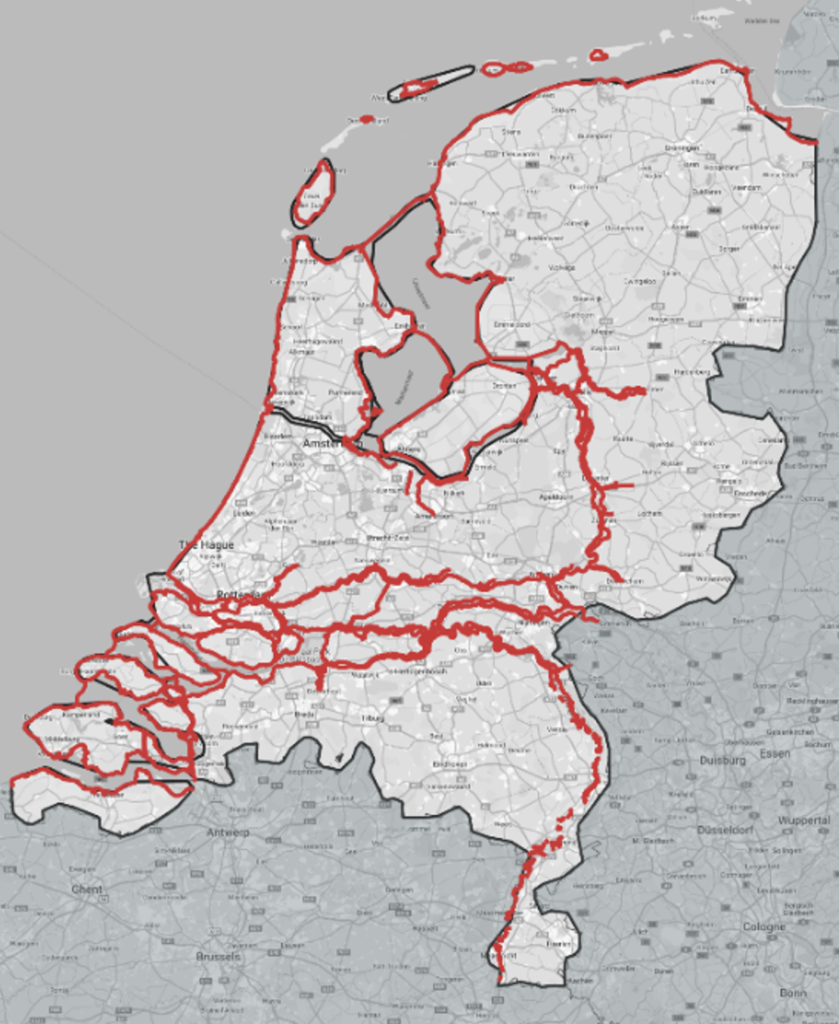
Thankfully, the Dutch have been building dams and levees to protect their low landmass from flooding for centuries.12 Modern infrastructure investment accelerated in the wake of the 1953 North Sea flood – a combination of a severe European windstorm and high spring tide that caused the sea to flood land up to 5.6 meters above mean sea level.13 The ‘Deltawerken’ (Delta Works), now complete, consists of a set of storm surge barriers, locks and dams mainly located in the south of the country. But the Dutch flood defense program extends beyond the Delta Works,14 encompassing almost 1,500 constructed barriers, including more than 20,000 kilometers of dikes, enough to encircle the country over 15 times. In fact, the Delta Works program has evolved into the Delta Programme, a continuous project that take future effects of climate change into account, with a target of 100% of the Dutch population protected by floods not exceeding a 1 in 100,000-year event by 2050.15
The presence of these flood defense programs is of imperative importance when considering the Dutch markets for investments. We find that many climate risk data providers do not adjust for the Netherlands’ formidable stock of anti-flood infrastructure investment which mitigates much of the risk. Investors who act as uncritical “takers” of unadjusted climate risk stats may thus excessively underweight the Dutch market.
Below the regional and market level, the asset level is where the outcomes of climate hazards have the most direct impact on a building’s structural integrity or the ability to access and operate a property. An asset manager’s actions can directly influence a building’s capacity to withstand climate-related hazards. This tends to be the most impactful when such interventions are made during the design phase of the development.
For example, take the case of a LaSalle logistics development in Osaka, Japan, a city that has historically been vulnerable to flooding due to its geographical location, with much of the urban area made up of flat lowlands that make natural drainage a challenge in the event of tsunamis and heavy rainfall.16 The local city planning assesses the maximum level water could rise above sea level by submarket in the event of a flood. The flood height varies by location while considering additional factors such as the city’s infrastructure (i.e., floodgates and seawalls) and the overall elevation of the submarket. In the case of one of LaSalle’s Osaka Bay logistics developments, the subject warehouse is at a site where water levels could rise to three meters above sea level in the case of a flood.17
Seawalls, ranging in height from 5.7-7.2 meters protect the asset from extreme floods coming from the sea. To further mitigate the flood risk in the case of extreme rainfall or failure of the sea walls, the warehouse is designed with an elevated floor plate that puts the ground level 1.4 meters above mean sea level, and places key building equipment on the second floor, minimizing potential damage to the asset in the event of flood. This effort resulted in a 4.4 meter clearance above sea level (i.e., sea level + 1.4 meter buffer + 3 meters = 4.4 meters), which is above the required 3.5 meters above sea level (i.e., sea level + 1.4 meter buffer + 2.05 meters = 3.45 meters) for the location. In addition, the property management team has been trained and equipped to minimize flood damage on the first floor by closing the doors and shutters and placing sandbags in any gaps. By incorporating considerations to mitigate flood risk when designing the warehouse, the asset is well positioned to support tenants’ business continuity plans in the event of a flood.
Footnotes
1 Source: National Centres for Environmental Information of the National Oceanic and Atmospheric Administration (NOAA). See Billion Dollar Weather and Climate Disasters
2 Source: The Climbing Costs to Insure US Commercial Real Estate, MSCI, November, 29 2023
3 The TCFD framework which has now been absorbed by IFRS’ ISSB, serves as the framework with which other international reporting standards setters seek to align such as the US SEC who voted in favour of The enhancement and standardization of climate-related disclosure, or the UK Government and the Sustainability Standards Board of Japan who will align its disclosure standards with ISSB.
4 According to the National Centers for Environment Information (NCEI). $1 billion threshold adjusted for inflation in historical periods. See https://www.ncei.noaa.gov/access/billions/.
5 RCP refers to Representative Concentration Pathway, a standard for modeling future climate scenarios of greenhouse gas concentration in the atmosphere. RCP 8.5 represents an extreme case scenario. See this Intergovernmental Panel on Climate Change (IPCC) glossary for more detail.
6 For more discussion on this trend, see our recent ISA Briefing, US migration trends and (U)rbanization.
7 Cross-sectional correlation between the LaSalle current climate risk index and the population change in the top 45 US metro areas between December 2018 and December 2023.
8 Cross-sectional correlation between the LaSalle future climate risk index and population change in the top 45 US metro areas between December 2023 and December 2028 based on Moody’s forecast as of February 2024.
9 Source: LaSalle analysis of data from NCREIF, FEMA.
10 Source: LaSalle analysis of data from NCREIF, FEMA.
11 Source: LaSalle analysis of MSCI data.
12 Source: The Dutch experience in flood management: A history of institutional learning
13 Source: The devastating storm of 1953, The History Press
14 Source: Dutch primary flood defenses, Nationaal Georegister
15 See Delta Programme 2024
16 See Osaka city – Flood disaster prevention map outline from the Osaka City Office of Emergency Management.
17 Estimates of maximum flood depth are based on historical records of natural disasters such as earthquakes, river floods and tsunamis that have occurred as reported by Japan’s Ministry of Land, Infrastructure and Tourism.
18 A superficial view of markets is that transactions are based on agreement on value. More accurately, buyers and sellers agree on a price, but their willingness to transact is based on disagreement on value. A seller, for example, may have a less bullish view on NOI growth prospects than a buyer. We expect the same disagreement on climate-related risk/reward trade-offs to be increasingly important.
This publication does not constitute an offer to sell, or the solicitation of an offer to buy, any securities or any interests in any investment products advised by, or the advisory services of, LaSalle Investment Management (together with its global investment advisory affiliates, “LaSalle”). This publication has been prepared without regard to the specific investment objectives, financial situation or particular needs of recipients and under no circumstances is this publication on its own intended to be, or serve as, investment advice. The discussions set forth in this publication are intended for informational purposes only, do not constitute investment advice and are subject to correction, completion and amendment without notice. Further, nothing herein constitutes legal or tax advice. Prior to making any investment, an investor should consult with its own investment, accounting, legal and tax advisers to independently evaluate the risks, consequences and suitability of that investment.
LaSalle has taken reasonable care to ensure that the information contained in this publication is accurate and has been obtained from reliable sources. Any opinions, forecasts, projections or other statements that are made in this publication are forward-looking statements. Although LaSalle believes that the expectations reflected in such forward-looking statements are reasonable, they do involve a number of assumptions, risks and uncertainties. Accordingly, LaSalle does not make any express or implied representation or warranty, and no responsibility is accepted with respect to the adequacy, accuracy, completeness or reasonableness of the facts, opinions, estimates, forecasts, or other information set out in this publication or any further information, written or oral notice, or other document at any time supplied in connection with this publication. LaSalle does not undertake and is under no obligation to update or keep current the information or content contained in this publication for future events. LaSalle does not accept any liability in negligence or otherwise for any loss or damage suffered by any party resulting from reliance on this publication and nothing contained herein shall be relied upon as a promise or guarantee regarding any future events or performance.
By accepting receipt of this publication, the recipient agrees not to distribute, offer or sell this publication or copies of it and agrees not to make use of the publication other than for its own general information purposes.
Copyright © LaSalle Investment Management 2024. All rights reserved. No part of this document may be reproduced by any means, whether graphically, electronically, mechanically or otherwise howsoever, including without limitation photocopying and recording on magnetic tape, or included in any information store and/or retrieval system without prior written permission of LaSalle Investment Management.
Report Summary: Physical climate risk data can be a powerful tool for managing asset and portfolio risk and returns. Learn what strategies leading firms are using to manage physical climate risks and navigate market challenges. The latest report from the Urban Land Institute and LaSalle Investment Management builds on their previous report, How to Choose, Use, and Better Understand Climate Risk Analytics, to describe how leading firms are leveraging physical climate-risk data in underwriting practices. With insight into asset- and portfolio-level risk becoming increasingly easy to obtain, new challenges lie in effective interpretation and integration of information into investment practices. Relying on research and interviews with industry leaders, this report provides a nuanced exploration of this emergent issue.
Physical Climate Risks and Underwriting Practices in Assets and Portfolios is structured into three sections, each addressing different aspects of the industry’s response to climate-risk data:
Section 1. Explore the current state of the industry, finding that:
• Leading firms actively coach their teams on physical risk.
• Regulatory trends affect, but do not motivate physical risk assessment.
• Different geographies approach physical with their own level of urgency.
• Investment managers tend to focus on fund risk, capital providers on portfolio risk.
• Tools to understand and price physical risk are still in a nascent stage of development.
Section 2. Examines the application of climate data in decision making. Key findings include:
• Aggregate physical risk is a screening tool; individual hazard risk is actionable information.
• Climate value at risk remains opaque; the utility of the single number offers value but needs increased transparency.
• Atypical hazard risk (e.g., flood in a desert) merits increased attention.
• External consultants can frequently fill skill gaps, especially for firms with less in-house expertise.
• While no predominant timeframe or Representative Concentration Pathway (RCP) emerged as industry standard, the 2030 and 2050 benchmarks were the most commonly referenced time horizon.
Section 3. Assess the impact of physical climate risk on acquisition, underwriting, and disposition practices; finding that:
• Leading firms start with a top-down assessment of physical risk.
• Market concentration of physical risk is analogous to other concentration risks—a nuanced analysis is required.
• Capital expenditure for resilience projections is a key forecast but rife with uncertainty.
• Local-market climate mitigation measures are important to understand but difficult to forecast.
• Exit cap rate discount for estimated physical risk is an increasingly commonly used tool, frequently 25 to 50 basis points.
• Firms infrequently disclose physical risk but the market needs increased transparency.

Important Notice and Disclaimer
This publication does not constitute an offer to sell, or the solicitation of an offer to buy, any securities or any interests in any investment products advised by, or the advisory services of, LaSalle Investment Management (together with its global investment advisory affiliates, “LaSalle”). This publication has been prepared without regard to the specific investment objectives, financial situation or particular needs of recipients and under no circumstances is this publication on its own intended to be, or serve as, investment advice. The discussions set forth in this publication are intended for informational purposes only, do not constitute investment advice and are subject to correction, completion and amendment without notice. Further, nothing herein constitutes legal or tax advice. Prior to making any investment, an investor should consult with its own investment, accounting, legal and tax advisers to independently evaluate the risks, consequences and suitability of that investment.
LaSalle has taken reasonable care to ensure that the information contained in this publication is accurate and has been obtained from reliable sources. Any opinions, forecasts, projections or other statements that are made in this publication are forward-looking statements. Although LaSalle believes that the expectations reflected in such forward-looking statements are reasonable, they do involve a number of assumptions, risks and uncertainties. Accordingly, LaSalle does not make any express or implied representation or warranty, and no responsibility is accepted with respect to the adequacy, accuracy, completeness or reasonableness of the facts, opinions, estimates, forecasts, or other information set out in this publication or any further information, written or oral notice, or other document at any time supplied in connection with this publication. LaSalle does not undertake and is under no obligation to update or keep current the information or content contained in this publication for future events. LaSalle does not accept any liability in negligence or otherwise for any loss or damage suffered by any party resulting from reliance on this publication and nothing contained herein shall be relied upon as a promise or guarantee regarding any future events or performance.
By accepting receipt of this publication, the recipient agrees not to distribute, offer or sell this publication or copies of it and agrees not to make use of the publication other than for its own general information purposes.
Copyright © LaSalle Investment Management 2024. All rights reserved. No part of this document may be reproduced by any means, whether graphically, electronically, mechanically or otherwise howsoever, including without limitation photocopying and recording on magnetic tape, or included in any information store and/or retrieval system without prior written permission of LaSalle Investment Management.
Washington / New York (April 11, 2024) – A new global report from the Urban Land Institute (ULI) and LaSalle Investment Management (LaSalle), a leading real estate investment management firm, offers a new framework to help the real estate industry act on climate risk disclosure data. Across the real estate industry, practitioners understand physical climate risk to assets and portfolios poses a financial risk, but there are still many challenges to enacting on the data being collected and disclosed.
This new framework is the latest tool for real estate investors and other practitioners to evaluate the costs of action and inaction when it comes to investing in resilience. The report, Physical Climate Risks and Underwriting Practices in Assets and Portfolios, is the second in a series by ULI and LaSalle. Building on the first report that outlined how to source and interpret reliable climate risk data, the second provides a market overview, adaptable framework, and recommendations based on emerging best practices for incorporating physical climate risk in the underwriting process.
“Physical climate risk data collection and disclosure is the first step the real estate industry can take to further invest in and build resilient infrastructure,” said Lindsay Brugger, head of Urban Resilience at ULI. “Data drives action and doing nothing incurs deeper costs — from higher insurance premiums to asset repair or replacement. Focusing on the underwriting process, the framework offers investment managers a methodology for developing risk-adjusted returns so deals can be adapted in alignment with a firm’s fund or portfolio objectives.”
“Of the $850 billion of commercial real estate tracked by NPI, LaSalle estimates $285 billion, or 34% is situated in high and medium-high climate risk zones in the US,” said Julie Manning, Global Head of Climate and Carbon at LaSalle Investment Management. “This report helps provide guidance that investment managers can follow to factor the climate risk data they have available to them and improve outcomes at the asset and portfolio level. We want to lead the conversation across the industry and collaborating with ULI is a great conduit to amplify the discussion that will ultimately benefit investors of all kinds with more resilient real estate portfolios.”
The framework is broken down into three steps for decision making based on individual asset risks, local market risks, and ongoing risk mitigation efforts:
1. Evaluate the level of exposure to physical climate risk and financial implications;
2. Identify hazard mitigation strategies and estimate associated costs; and
3. Determine risk-adjusted return and whether or not that return meets firm objectives
The redevelopment will also look to meet future tenant requirements and evolving work trends with high-quality amenities to promote in-person interaction and facilitate a hybrid working, including an auditorium, business centre, bars and restaurants, event spaces and a media broadcast studio.
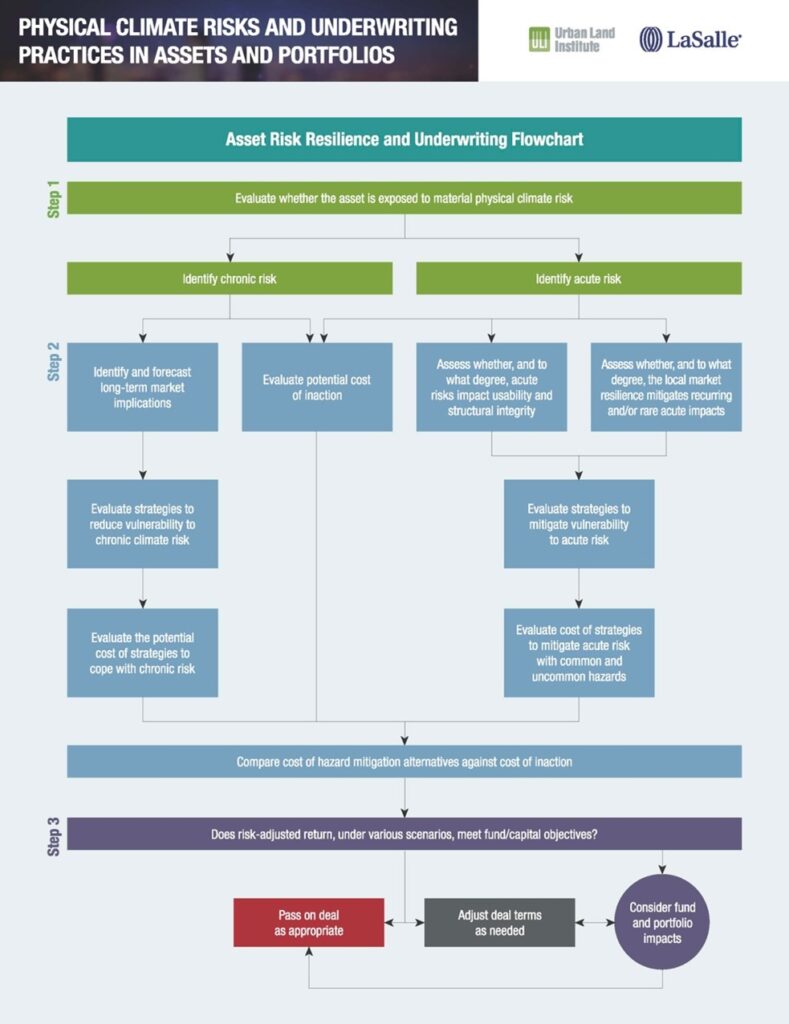
As climate impacts continue to influence real estate markets around the world, improving understanding of physical climate risk and adjusting pricing to reflect risk are growing imperatives. Firms can better navigate the complexities of physical climate risk and capitalize on emerging opportunities by leveraging this new report’s insights and guidance. Prioritizing knowledge diffusion and empowering informed decision-making processes is key to effectively managing and mitigating incoming climate risks in the evolving real estate industry, whether at a community or individual building scale.
The full report and downloadable framework can be found on ULI’s Knowledge Finder.
REPORTERS AND EDITORS: For more information, please contact:
ULI
LaSalle
Drew McNeill
About the Urban Land Institute
The Urban Land Institute is a non-profit education and research institute supported by its members. Its mission is to shape the future of the built environment for transformative impact in communities worldwide. Established in 1936, the institute has more than 48,000 members worldwide representing all aspects of land use and development disciplines. For more information on ULI, please visit uli.org, or follow us on Twitter, Facebook, LinkedIn, and Instagram.
About LaSalle Investment Management
LaSalle Investment Management is one of the world’s leading real estate investment managers. On a global basis, LaSalle manages over US $89 billion of assets in private and public real estate equity and debt investments as of Q4 2023. LaSalle’s diverse client base includes public and private pension funds, insurance companies, governments, corporations, endowments and private individuals from across the globe. LaSalle sponsors a complete range of investment vehicles including separate accounts, open- and closed-end funds, public securities and entity-level investments. For more information please visit www.lasalle.com, and LinkedIn.


Roughly 60% of the world’s population lives in countries facing major elections in 2024, markets representing 65% of the institutional investable real estate universe.1 Elections are, of course, the cornerstone of the democratic process, which in turn underpins the appeal of the most transparent, investable markets; that said, elections come with the possibility of policy changes that may impact returns. Today’s geopolitical risks, whether they be this continuing election super-cycle (see LaSalle Macro Quarterly, or LMQ, page 4), or the various ongoing conflicts and trade disruptions, prompt important questions about how to manage investment risks related to these themes.
One of the protagonists in the Oscar-winning film Everything Everywhere All at Once says that being “’right’ is a small box invented by people who are afraid.” LaSalle’s risk management philosophy emphasizes optimizing risk/return trade-offs rather than minimizing risk-taking, while recognizing the limitations of point-estimate predictions and base-case scenarios — that is, attempts at “being right.” Today’s geopolitical events are especially likely to confound any forecaster seeking to be exactly right.
How should an investor manage their assets in the context of “unknowables” about which engaging in guesswork is tempting, but being “right” is elusive? What frameworks do we have to mitigate geopolitical risks? We propose six recommendations to keep in mind for investors taking stock of the many elections, and several conflicts, that may impact markets in 2024.
There are many examples of ex ante predictions of elections’ investment implications having been overstated. For instance, leading up to the 2016 US presidential election, there were widespread predictions that the US economy would be significantly negatively impacted by Donald Trump’s anti-immigration and protectionist stance were he elected.2 In the event, equity markets rebounded strongly after a short-lived hit and the US economy proved resilient to the changes in rhetoric and policy that came with a new president.3
Looking ahead to the US elections later this year, almost certainly a rematch between Biden and Trump, coverage of the candidates’ differences should be accompanied by awareness of their similarities. Both candidates seek to prioritize domestic production, which could lead to greater levels of on- or near-shoring of supply chains.4 Moreover, election prediction odds (see LMQ page 6) suggest divided control of the two houses of Congress and the presidency is likely; divided government has typically been associated with relative stability in domestic policy, which is generally positive for markets.5 Both of these factors — at least in isolation — point to the potential for news cycle hype to overstate long-term market impacts of this particular election.
Financial theory tells us that systematic risks are undiversifiable.6 Systematic factors are those with significant, far-reaching implications that affect the price of all assets. But financial theory also entertains that different assets may have different sensitivities to the same set of factors; an asset’s “beta” signifies the responsiveness of its price to a given factor. This is a useful way to think about an investment’s sensitivity to political and geopolitical events. For example, a property in a metro area whose economy is heavily driven by government spending would likely have a high sensitivity to political changes. Another example could be that a property located in the Baltic States, ex-Soviet countries on the border with Russia, is likely to be especially sensitive to developments concerning relations between Russia and the West. Investors should be mindful of assets’ expected sensitivities to geopolitics, whether assessed empirically or, as is more often the case given a lack of data, estimated through intuition.
Systemic risks go beyond systematic factors; they involve severe shocks that have the potential to re-align entire markets in unpredictable ways. An example of such an extreme event is the remote but non-negligible potential that today’s so-called “proxy wars”7 escalate into a broader active conflict between great powers.8 The challenge of incorporating such eventualities into investment decision making is not only estimating appropriate probabilities that such events may occur, but establishing ideal strategic responses should they do so. Catastrophic shocks are exceedingly rare and have the potential to create winners and losers in asset markets that are difficult or impossible to predict.9 It may be more fruitful for investors to focus on more incremental — and more likely — eventualities that have the added benefit of being easier to model.
Media coverage naturally tends to focus on the national and trans-national arenas, but local political developments can be especially impactful for real estate investments. Such issues can fly under the radar, especially given many of the most relevant ones are only of interest to a specialist audience. For example, changes in policy around topics like the planning process, property taxes and transfer taxes (a.k.a. stamp duty) can have direct, measurable and immediate impacts on property cash flows and thus values. The distraction of the bright shiny lights of global geopolitics should not be allowed to excessively overshadow the critical local issues that impact real estate.
To a certain extent, political risks can be managed through diversification. This is especially true when they involve isolated events that impact one country or subnational division such as a specific city, province or state. But often political events are part of a broader arc with potentially far-reaching consequences. A smattering of small seeds can grow from obscurity into a thicket. Nothing illustrates this better than the rise of populism, nationalism and protectionism around the world, themes set to dominate elections this year and beyond. The very notion of “globalized nationalism” may sound like an oxymoron, but it has become a fact.10 While diversification is an essential portfolio construction concept that helps manage many types of risk, including political risk, care must be taken to recognize when what may appear to be “specific” risks are part of a broader pattern that is difficult to “diversify away.”
Geopolitical and political risks are difficult to incorporate into traditional financial analysis. We find that thinking through scenarios can be helpful in identifying investment themes that may emerge from geopolitical trends. These can point to strategies to avoid — as well as potential new ones to pursue. The “Looking Ahead” section of this note expands on some of the key themes we have been tracking.
As geopolitical events are difficult to control and plan for, one may conclude, similarly to that same protagonist in the Everything Everywhere film, that “nothing matters.” But uncertainty is no excuse for ignoring geopolitical risks. We do stop short of directly feeding geopolitical themes into our formal risk management program, where the focus is on the specific risks that can actively be managed for our clients.11 However, it remains important to observe and understand macro conditions from a holistic perspective. The work done in our regional research teams — particularly that focused on capital markets, the signals that foreshadow potential inflection points and the local political themes that impact real estate — is critical to this effort.
We have argued that political and geopolitical risks are difficult to incorporate into investment processes, but that considering “what ifs” can be useful in uncovering relevant investment themes. Below are three potential real estate implications of the current geopolitical backdrop that we are monitoring today:
Footnotes
1 LaSalle analysis of data from Time and our proprietary investable universe estimates. See LMQ page 5 for more detail.
2 Sources: “What do financial markets think of the 2016 election?” Brookings Institution paper, Wolfers and Zitzewitz, 2016. The article predicted that “a Trump victory would trigger an 8-10% sell-off”. See also “The Consequences of a Trump Shock,” a Project Syndicate article by Simon Johnson, 2016. He predicted Trump’s election would “likely cause the stock market to crash and plunge the world into recession.”
3 On the news of the 2016 election result, Standard & Poor’s 500-stock index initially fell 5% but ended the day up more than 1%, according to Refinitiv. The US avoided a recession until the emergence of the COVID-19 pandemic, according to Oxford Economics.
4 Source: “Biden vs Trump: Key policy implications of either presidency,” Economist Intelligence Unit, 2023.
5 Sources: “What to Expect From Divided Government.” PIMCO article, Cantrill, 2022. According to the article, “the equity markets historically have tended to do well in years of split government.”
6 Source: The Handbook of Risk Management: Implementing a Post-Crisis Corporate Culture. P. Carrel, 2012. “Systematic or market risk refers to the inherent danger present throughout the entire market that cannot be mitigated by diversifying your portfolio. Broad market risks include recessions, periods of economic weakness, wars, rising or stagnating interest rates, fluctuations in currencies or commodity prices, and other ‘big-picture’ issues like climate change. Systematic risk is embedded in the market’s overall performance and cannot be eliminated simply by diversifying assets.”
7 According to the Oxford Dictionary, “proxy wars are the replacement for states and non-state actors seeking to further their own strategic goals yet at the same time avoid engaging in direct, costly, warfare.” Various observers have argued that the Russia-Ukraine and Israel-Gaza conflicts are proxy wars. For example, see “IKs the ware in Ukraine a proxy conflict?” Kings College London report, Hugues (2022).
8 According to a research brief by RAND: “Great power wars — conflicts that involve two or more of the most powerful states in the international system. These have historically been among the most consequential international events.”
9 Source: “What a third world war would mean for investors,” The Economist, 2023. The article highlights the virtual impossibility of positioning an investment portfolio to outperform through prior world wars, even if the investor had correctly predicted that these conflicts would occur.
10 For further discussion of the global spread of nationalism, see “How cynical leaders are whipping up nationalism to win and abuse power”, The Economist, 2023; “Demonizing nationalist parties has not stemmed their rise in Europe,” The Economist, 2022; “The new nationalism,” The Economist, 2016.
11 We do, however, utilize tools that correlate to geopolitical risk. For example, the JLL Global Real Estate Transparency Index (GRETI) supports our monitoring of evolving investment conditions around the globe. Whilst the model does not explicitly consider political risk, the two are inexplicably linked through the inclusion of a number of governance and regulation data points.
12 Source: “A global economic policy uncertainty index from principal component analysis,” Finance Research Letters, Peng-Fei Dai, 2019.
13 Source: “What are the impacts of the Red Sea shipping crisis,” J.P. Morgan, 2024.
14 Source: “The Great Rewiring: How Global Supply Chains Are Reacting to Today’s Geopolitics,” Center for Strategic & International Studies, 2022.
15 Sources: “The business costs of supply chain disruption,” Economist Intelligence Unit, 2021 and “Why Deglobalization Makes US Inflation Worse,” Project Syndicate, Moyo, 2022.
This publication does not constitute an offer to sell, or the solicitation of an offer to buy, any securities or any interests in any investment products advised by, or the advisory services of, LaSalle Investment Management (together with its global investment advisory affiliates, “LaSalle”). This publication has been prepared without regard to the specific investment objectives, financial situation or particular needs of recipients and under no circumstances is this publication on its own intended to be, or serve as, investment advice. The discussions set forth in this publication are intended for informational purposes only, do not constitute investment advice and are subject to correction, completion and amendment without notice. Further, nothing herein constitutes legal or tax advice. Prior to making any investment, an investor should consult with its own investment, accounting, legal and tax advisers to independently evaluate the risks, consequences and suitability of that investment.
LaSalle has taken reasonable care to ensure that the information contained in this publication is accurate and has been obtained from reliable sources. Any opinions, forecasts, projections or other statements that are made in this publication are forward-looking statements. Although LaSalle believes that the expectations reflected in such forward-looking statements are reasonable, they do involve a number of assumptions, risks and uncertainties. Accordingly, LaSalle does not make any express or implied representation or warranty, and no responsibility is accepted with respect to the adequacy, accuracy, completeness or reasonableness of the facts, opinions, estimates, forecasts, or other information set out in this publication or any further information, written or oral notice, or other document at any time supplied in connection with this publication. LaSalle does not undertake and is under no obligation to update or keep current the information or content contained in this publication for future events. LaSalle does not accept any liability in negligence or otherwise for any loss or damage suffered by any party resulting from reliance on this publication and nothing contained herein shall be relied upon as a promise or guarantee regarding any future events or performance.
By accepting receipt of this publication, the recipient agrees not to distribute, offer or sell this publication or copies of it and agrees not to make use of the publication other than for its own general information purposes.
Copyright © LaSalle Investment Management 2024. All rights reserved. No part of this document may be reproduced by any means, whether graphically, electronically, mechanically or otherwise howsoever, including without limitation photocopying and recording on magnetic tape, or included in any information store and/or retrieval system without prior written permission of LaSalle Investment Management.
Kyung Bae Park joined LaSalle in January 2024 as a Senior Vice President in the Investor Relations team, based in Seoul. He is responsible for building and maintaining relationships with Korean clients.
Kyung Bae brings over 15 years of investment experience to LaSalle. Prior to joining the firm, he worked for Vestas Investment Management, Korean AMC, where he was responsible for deal sourcing, fundraising, and deal execution for its overseas investment division. Before that, Kyung Bae was involved in equity analysis, marketing, and institutional sales at Allianz Global Investors.
Kyung Bae is an alumnus of the London School of Economics and Political Science, where he pursued an Master of Science in Economics, as well as the University of Warwick, where he obtained a Bachelor of Science in Industrial Economics. He is a certified investment manager in Korea.
Michael Wang is a Relationship Manager covering LaSalle’s Southeast Asia and Australian client base. In this role, he is responsible for creating and managing relationships with investors and investment consultants, strengthening LaSalle’s market presence in these strategic markets.
Before joining LaSalle, Michael held the position of Associate Director at ESR Group, an Asian focused Real Estate services and investment company and he was responsible for capital raising activities and fund management. Prior to his time at ESR Group, Michael worked in the investment team at GLP, a global real estate logistics provider and investment manager. Michael started his real estate career as institutional sales at a US property investment firm – EII Capital Management.
Michael holds a Master of Science degree in Real Estate from National University of Singapore, as well as a Bachelor of Business degree from Nanyang Technological University. He is also a CFA charter holder.
CHICAGO, LONDON, SINGAPORE (26 February 2024) – LaSalle Investment Management (“LaSalle”), the global real estate investment manager, has strengthened its global investor and client relations capabilities with the appointment of Isabelle Brennan, Senior Managing Director, Credit and Global Solutions Product Specialist. The newly created role underscores LaSalle’s commitment to strategic growth as it continues to focus on diversifying its investment products, and strengthening its client offering and coverage, to drive long-term growth.
Isabelle will rejoin LaSalle on 1 May 2024 from CBRE Investment Management, where she served as a Senior Director in the Client Solutions team. During her tenure she held a variety of roles, including supporting clients’ access to real estate credit investments across EMEA and the US, global Indirect solutions, and managing relationships with U.K. and Irish clients and consultants for their investments across the global suite of real estate and infrastructure solutions. Prior to this, she developed her expertise across real assets credit and client solutions as a Director at M&G Investments, overseeing global investor relationships on behalf of the Real Estate Finance platform.
Before joining M&G Investments, Isabelle was at LaSalle and held responsibilities across capital raising and relationship management for clients in the UK, Ireland and the Netherlands, in addition to being a Product Specialist for EMEA credit strategies.
In her new role, Isabelle will report into Samer Honein, Global Head of Investor Relations, partnering with the Investor Relations team to promote Credit and Global Solutions to existing and prospective clients around the world. She will also join the Investor Relations Management Board and will be based in London.
Samer Honein, Global Head of Investor Relations at LaSalle Investment Management, said: “Isabelle’s return to LaSalle will provide a significant boost to the Investor Relations team. She brings a wealth of credit and client solutions experience and is well-placed to provide deep-rooted insights to facilitate client access to real estate credit and indirect investments. We look forward to leveraging Isabelle’s expertise as we continue to build our client base and strengthen our offering.”
About LaSalle Investment Management | Investing Today. For Tomorrow.
LaSalle Investment Management is one of the world’s leading real estate investment managers. On a global basis, LaSalle manages approximately $89 billion of assets in private and public real estate equity and debt investments as of Q3 2023. LaSalle’s diverse client base includes public and private pension funds, insurance companies, governments, corporations, endowments and private individuals from across the globe. LaSalle sponsors a complete range of investment vehicles, including separate accounts, open- and closed-end funds, public securities and entity-level investments.
For more information, please visit www.lasalle.com, and LinkedIn.
NOTE: This information discussed above is based on the market analysis and expectations of LaSalle and should not be relied upon by the reader as research or investment advice regarding LaSalle funds or any issuer or security in particular. The information presented herein is for illustrative and educational purposes and is not a recommendation, offer or solicitation to buy or sell any securities or to adopt any investment strategy in any jurisdiction where prohibited by law or where contrary to local law or regulation. Any such offer to invest, if made, will only be made to certain qualified investors by means of a private placement memorandum or applicable offering document and in accordance with applicable laws and regulations. Past performance is not indicative of future results, nor should any statements herein be construed as a prediction or guarantee of future results.


SEOUL (February 21, 2024) — LaSalle Korea has been named by The Korea Economic Daily (KED) as best asset manager for operational excellence in the real estate large cap category. This is the second year in a row that LaSalle Korea is receiving this accolade.

The operational excellence award recognizes a GP for outstanding risk management, communication and key person employment.
Winners are determined based on an annual survey of Korean investors, including pension funds, sovereign wealth funds, mutual funds, insurance companies and major banks, conducted by KED, a top-tier business news media.
Steve Hyung Kim, Senior Managing Director and Head of Korea for LaSalle, said: “It is our honor to receive this award for two years consecutively. We are grateful for the partnership and support of all our clients and investors who make this recognition possible.”
About LaSalle Investment Management | Investing Today. For Tomorrow.
LaSalle Investment Management is one of the world’s leading real estate investment managers. On a global basis, LaSalle manages approximately $89 billion of assets in private and public real estate equity and debt investments as of Q3 2023. LaSalle’s diverse client base includes public and private pension funds, insurance companies, governments, corporations, endowments and private individuals from across the globe. LaSalle sponsors a complete range of investment vehicles, including separate accounts, open- and closed-end funds, public securities and entity-level investments.
For more information, please visit www.lasalle.com, and LinkedIn.
NOTE: This information discussed above is based on the market analysis and expectations of LaSalle and should not be relied upon by the reader as research or investment advice regarding LaSalle funds or any issuer or security in particular. The information presented herein is for illustrative and educational purposes and is not a recommendation, offer or solicitation to buy or sell any securities or to adopt any investment strategy in any jurisdiction where prohibited by law or where contrary to local law or regulation. Any such offer to invest, if made, will only be made to certain qualified investors by means of a private placement memorandum or applicable offering document and in accordance with applicable laws and regulations. Past performance is not indicative of future results, nor should any statements herein be construed as a prediction or guarantee of future results.


SEOUL (January 30, 2024) — LaSalle Investment Management (“LaSalle”) announced that it has recently exited two investments in South Korea on behalf of LaSalle Asia Opportunity Fund V (“LAO V”) and LaSalle Asia Opportunity Fund VI (“LAO VI”).
The first deal was an exit of a real estate secured debt investment in the LAO VI portfolio which was repaid in December 2023, producing opportunistic equity returns. The loan was originated during market dislocations in early 2023 when credit spreads widened presenting this non-distressed lending opportunity. The loan was secured by a Grade A location land site entitled to develop a 10-storey office building with planned GFA of 6,480 pyung (21,421 sqm) in Seongsu District, Seoul. The borrower had a track record of developing, leasing and selling similar developments as Seoul’s office market continued to be resilient.
Steve Hyung Kim, Senior Managing Director and Head of Korea for LaSalle, commented: “We are actively responding to recapitalization situations in selective projects to invest in preferred equity or secured junior debt. These types of investments are cyclically-driven and offer a balance of both downside protection and attractive risk-adjusted returns especially in the current environment. Aligned with this strategy, we are pleased to exit this investment with opportunistic returns for our limited partners in LAO VI.”
In the second deal, also in South Korea, LAO V completed the sale of Logiport Osan at a price of KRW125.0 billion (approximately US$95.1 million) in January 2024. Strategically located directly off the Gyeongbu Expressway (Expressway #1), one of the primary national expressways in South Korea, Logiport Osan offers its logistics occupiers exceptional accessibility throughout Greater Seoul. Logiport Osan is a 4-story mixed-use modern warehouse with GFA of 12,078 pyung (39,927 sqm) and the project was pre-leased prior to completion in December 2022.
Kim commented: “Logiport Osan was executed by LaSalle Korea in-house from land acquisition, to leasing, to managing the disposition. We are pleased to exit this investment and deliver opportunistic returns for our limited partners in LAO V.”
LaSalle operates in Korea as a licensed asset management company managing over KRW1.67 trillion in AUM (as of Q3 2023) on behalf of both domestic and international clients.
About LaSalle Investment Management | Investing Today. For Tomorrow.
LaSalle Investment Management is one of the world’s leading real estate investment managers. On a global basis, LaSalle manages approximately $89 billion of assets in private and public real estate equity and debt investments as of Q3 2023. LaSalle’s diverse client base includes public and private pension funds, insurance companies, governments, corporations, endowments and private individuals from across the globe. LaSalle sponsors a complete range of investment vehicles, including separate accounts, open- and closed-end funds, public securities and entity-level investments.
For more information, please visit www.lasalle.com, and LinkedIn.
NOTE: This information discussed above is based on the market analysis and expectations of LaSalle and should not be relied upon by the reader as research or investment advice regarding LaSalle funds or any issuer or security in particular. The information presented herein is for illustrative and educational purposes and is not a recommendation, offer or solicitation to buy or sell any securities or to adopt any investment strategy in any jurisdiction where prohibited by law or where contrary to local law or regulation. Any such offer to invest, if made, will only be made to certain qualified investors by means of a private placement memorandum or applicable offering document and in accordance with applicable laws and regulations. Past performance is not indicative of future results, nor should any statements herein be construed as a prediction or guarantee of future results.


SINGAPORE (January 29, 2024) — TE Capital Partners (“TEC”) and LaSalle Investment Management (“LaSalle”) jointly announced today the completion of the acquisition of a 11-story Grade A office building at 103 Penang Road, Singapore 238467, known as VisionCrest Commercial (the “asset”), in a joint venture between TEC and a fund managed by LaSalle. This joint venture, operated by TEC, marks the second collaboration between the two parties since 2022. Singapore real estate company Metro Holdings Ltd. through its indirect wholly-owned subsidiary, Metrobilt Construction Pte. Ltd., will own a 20% stake in the asset through its partnership with an affiliate of TEC.
Following the acquisition, the joint venture plans to amplify the superior attributes of the freehold, high-specification, LEED Gold certified asset, which includes excellent transport connectivity and immediate access to retail, dining, entertainment and accommodation options, by embarking on enhancement works on the asset’s design, technology and sustainability. Internal and external facelifts will improve the asset’s aesthetic appeal while security and visitor management system upgrades will elevate the asset’s quality. The inclusion of upgraded end-of-trip facilities, EV chargers, upgraded bicycle spaces and solar panels will contribute not just to occupier experience but also to the asset’s sustainability credentials. By combining leading environmental performance with high-quality amenities, these enhancements are expected to help the asset continue to meet tenant requirements and respond to evolving workplace trends, solidifying the asset’s position as one of the most valuable and rare freehold office buildings in the Orchard Road precinct.
Singapore has consistently remained the preferred office investment destination in the Asia Pacific region, owing to its status as a global business hub and its strong track record of capital value growth and preservation. This acquisition is a reflection of the joint venture’s confidence in Singapore’s robust office market.
Emilia Teo, Managing Director, TE Capital Partners said, “On behalf of our shareholders and investors, we are pleased to add this strategic asset to our portfolio. We believe the asset, which sits in the Orchard Road precinct with a historically low supply of high-specification office buildings, will enjoy strong capital value preservation and continue to see strong tenant demand.”
Terence Teo, Managing Director, TE Capital Partners said, “We are confident that this acquisition will capitalize on the strength of the Singapore office market as well as the continued rejuvenation of the Orchard Road precinct. Through the enhancements to the property, we are committed to delivering sustainable returns to all our stakeholders.”
Claire Tang, Co-CIO Asia Pacific, LaSalle Investment Management said, “Singapore is well-placed to benefit from its status as a global business hub highly attractive to MNCs and regional businesses. Private and institutional investors continue to favor the Singapore market due to its relatively low cost of debt and stable political environment.”
George Goh, Head of Acquisitions and Asset Management, Southeast Asia, LaSalle Investment Management said, “We are optimistic about the outlook of the office sector in Singapore. As the flight to quality continues, well-designed and high-quality offices will remain a lynchpin of corporate talent strategies. Our plan for Visioncrest aims to address current and future occupier needs.”
About LaSalle Investment Management | Investing Today. For Tomorrow.
LaSalle Investment Management is one of the world’s leading real estate investment managers. On a global basis, LaSalle manages approximately $89 billion of assets in private and public real estate equity and debt investments as of Q3 2023. LaSalle’s diverse client base includes public and private pension funds, insurance companies, governments, corporations, endowments and private individuals from across the globe. LaSalle sponsors a complete range of investment vehicles, including separate accounts, open- and closed-end funds, public securities and entity-level investments.
For more information, please visit www.lasalle.com, and LinkedIn.
NOTE: This information discussed above is based on the market analysis and expectations of LaSalle and should not be relied upon by the reader as research or investment advice regarding LaSalle funds or any issuer or security in particular. The information presented herein is for illustrative and educational purposes and is not a recommendation, offer or solicitation to buy or sell any securities or to adopt any investment strategy in any jurisdiction where prohibited by law or where contrary to local law or regulation. Any such offer to invest, if made, will only be made to certain qualified investors by means of a private placement memorandum or applicable offering document and in accordance with applicable laws and regulations. Past performance is not indicative of future results, nor should any statements herein be construed as a prediction or guarantee of future results.
About TE Capital Partners
Founded in 2019, TE Capital Partners is a Singapore headquartered real estate investment manager who offers and manages a comprehensive range of investment products on behalf of public listed corporations, securities companies, and family offices across the region. As of Q4 2023, TE Capital Partners and its subsidiaries manage S$3 billion in assets under management in commercial office, and multifamily assets across Singapore, Japan, Australia, and the United States, via a range of investment vehicles, such as joint ventures, separate accounts, and closed-end funds, including its flagship Asia Opportunities series and Income Partners series. For more information, please visit www.tecapitalasia.com and LinkedIn.
NOTE: This press release may contain forward-looking statements by TE Capital Partners and should not be relied upon by readers and/or investors for any purposes. This is not a recommendation, offer or solicitation to buy or sell any securities or to adopt any investment strategy in any jurisdiction where prohibited by law or where contrary to local law or regulation. No representation or warranty express or implied is made as to, and no reliance should be placed on, the fairness, accuracy, completeness or correctness of the information or opinions contained in this press release. Actual performance, outcomes and results may differ from those expressed in forward-looking statements as a result of a number of risks, uncertainties and assumptions.


SINGAPORE (November 16, 2023) — LaSalle announced today that a fund it manages (the “fund”), in a joint venture with TE Capital Partners (“TEC”), has executed a Put and Call Option Agreement (“PCOA”) to acquire a 11-storey Grade A office building at 103 Penang Road, Singapore 238467, also known as VisionCrest Commercial (the “asset”). The joint venture is operated by a subsidiary of TEC.
Part of VisionCrest, a mixed-use development that also comprises a gazetted national monument, the House of Tan Yeok Nee, as well as four residential blocks with 265 units in total, the asset includes retail space on the ground floor.
The freehold, high-spec, LEED Gold certified asset, which has a strata area of 154,711 square feet, is centrally located in Singapore’s prime Orchard Road precinct, with excellent connectivity including a 5-minute walk to Dhoby Ghaut Mass Rapid Transit (MRT) Station, which is served by three major train lines (North-South, North-East and Circle Lines). Not only does the asset enjoy immediate access to abundant retail, dining, entertainment and accommodation options at its doorstep, it is also expected to benefit from the Urban Redevelopment Authority’s plan to rejuvenate the Orchard Road precinct to strengthen its position as one of Asia’s most sought after retail and commercial corridors.
The asset offers a strong cash flow profile, with an occupancy rate of 99% that is backed by a diverse roster of multinational tenants including Manulife Financial Advisers, Puma Sports SEA Trading and The Coffee Bean & Tea Leaf.
As the second project by the joint venture between TEC and the fund, this transaction reflects the managers’ confidence in the stability and resilience of Singapore’s office sector, as well as its potential for mid- to long-term capital value growth and preservation.
George Goh, Head of Acquisitions and Asset Management, Southeast Asia, LaSalle Investment Management said, “We are pleased to extend the strong and fruitful partnership we’ve had with TEC. This asset is a very rare freehold offering in a well-performing market, with potential for value-add and growth.”
Claire Tang, Co-CIO Asia Pacific, LaSalle Investment Management said, “This asset is a strategic addition to the fund’s portfolio as we respond to the continued interest of global institutional investors and private investors in the Singapore’s office sector, buoyed by sustained occupier demand in this market.”
About LaSalle Investment Management | Investing Today. For Tomorrow.
LaSalle Investment Management is one of the world’s leading real estate investment managers. On a global basis, LaSalle manages over $78 billion of assets in private and public real estate property and debt investments as of Q1 2023. LaSalle’s diverse client base includes public and private pension funds, insurance companies, governments, corporations, endowments and private individuals from across the globe. LaSalle sponsors a complete range of investment vehicles including separate accounts, open- and closed-end funds, public securities and entity-level investments. For more information please visit www.lasalle.com and LinkedIn.
NOTE: This information discussed above is based on the market analysis and expectations of LaSalle and should not be relied upon by the reader as research or investment advice regarding LaSalle funds or any issuer or security in particular. The information presented herein is for illustrative and educational purposes and is not a recommendation, offer or solicitation to buy or sell any securities or to adopt any investment strategy in any jurisdiction where prohibited by law or where contrary to local law or regulation. Any such offer to invest, if made, will only be made to certain qualified investors by means of a private placement memorandum or applicable offering document and in accordance with applicable laws and regulations. Past performance is not indicative of future results, nor should any statements herein be construed as a prediction or guarantee of future results.


With shifting interest rates, dynamic occupier fundamentals and deepening bifurcation within sectors, ISA Outlook 2024 asks how real estate investors should respond to rapidly changing market conditions. To answer these questions and more, we published four separate chapters covering the global and regional outlooks over the course of November and December.
Download the full document now, or individual chapters covering the Global, European, North American and Asia Pacific outlooks are available in the tabs below.
The global macroeconomic context for real estate remains unsettled, and more so than earlier in 2023. Until late summer, interest rates in most major markets exhibited high volatility, but little overall trend. They moved mainly sideways, owing to cooling inflation and expectations that central banks were reaching the end of their tightening cycles. This was helpful in setting a pricing baseline for real estate investors. But the outlook for rates and thus real estate pricing has become more unsettled of late.
What does this mean for real estate and how does it intersect with other key trends?

Global Head of Research and Strategy

Managing Director, Global Research and Strategy
European property markets have been waiting for a peak in European Central Bank and Bank of England policy rates, for an end to the war in Ukraine and for bid-ask pricing spreads to resolve. Investors ready to move out of waiting mode in 2024 can benefit from rebased prices, opportunities to solve capital stack equations, and strong fundamentals in many sectors.
In this chapter of ISA Outlook 2024, we examine the state of the European market and conclude with recommendations for specific investment strategies – underpinned by realism and targeted toward areas of forecast resilient income growth.

Europe Head of Research and Strategy

Europe Head of Core and Core-plus Research and Strategy

Chief Economist
Against a volatile macroeconomic backdrop and with growth expected to slow, we believe that in 2024 it will be the trajectory of interest rates that will have the greatest impact on real estate values in the US and Canada.
As investors continue to adapt to cooler conditions, this chapter of ISA Outlook 2024 examines the current landscape and looks ahead to the coming year, including where we see select opportunities emerging, as well as variation between the two markets. We conclude with three broad strategic themes and recommended strategies where investors may consider deploying their capital.

Americas Head of Research and Strategy

Canada Head of Research and Strategy
The sheer size and complexity of the Asia Pacific region means real estate markets and investment opportunities are as diverse as the region itself.
In the final chapter of ISA Outlook 2024, we discuss this complexity and how China’s new economies – such as high-tech manufacturing and biotechnology – are growing rapidly and, after more than two decades, Japan is hoping to bid sayōnara to deflation. In other key parts of the region – Australia, Hong Kong, Singapore and South Korea – central banks are near the end of their rate-hiking campaigns in a bid to lower inflation which, as in the rest of the world, could lead to a rebound in transaction activity.

China Head of Research and Strategy

Senior Strategist, Asia Pacific Research and Strategy
Published every year since 1993, LaSalle’s annual ISA Outlook is designed to help our clients and partners navigate the year ahead. It brings together smart perspectives and investment ideas from our teams around the world, based on what we see across our more than 1,500 assets that span geographies, property types and risk profiles.
As always, we welcome your feedback. If you have any questions, comments or would like to learn more, please get in touch by using our Contact Us page.
Kristina Meyer is a Managing Director on LaSalle’s Investor Relations team. She oversees the Investor Relations global operations team responsible for driving the fundraising efforts on all of LaSalle’s institutional products. This includes fundraise tracking and reporting, responding to prospective investor requests and working closely with portfolio managers, Research & Strategy and the Legal and Compliance teams on the launch of new commingled funds. Additionally, Kristina serves as President and General Securities Principal for LaSalle Investment Management Distributors (LIMD), responsible for supervising the North America institutional and retail sales channels.
Prior to joining LaSalle in 2015, Kristina was an Asset Manager at Mid-America Asset Management, Inc. overseeing the daily operations of retail properties owned by institutional clients and private entities in the Midwest.
Kristina graduated from the University of Wisconsin – Madison with a Bachelor of Business Administration in Real Estate and Urban Land Economics and earned a Master of Business Administration from the Kellogg School of Management at Northwestern University.
Takuya Okamura joined LaSalle in 2021 and is based in Tokyo. As Senior Vice President, Investor Relations, Takuya is responsible for raising capital for LaSalle’s private equity funds, separate account mandates and supporting distributors in relation to LaSalle’s real estate securities business in Japan. Also, he serves as a relationship manager for existing clients.
Takuya started his career at Sumitomo Mitsui Banking Corporation in 2010 where he spent 10 years. In 2012, he was dispatched to Germany as a language trainee and spent almost 6 years in Germany as a relationship manager for Japanese and Korean corporations. After his return to Japan, he was in charge of debt financing for J-REITs and real estate non-recourse finance and supported 2 IPO of REITs as the main debt arranger. After moving to SBI Securities, he led a project to launch the very first public offering for a real estate fund by means of Security Token Offering (STO).
Takuya holds a master’s degree in engineering from Kyoto University. He is a Real Estate Transaction Agent (Takken) in Japan and an Association for Real Estate Securitization (ARES) Certified Master.
Hayato Shimada is the Head of Investor Relations, Japan, a role he assumed in July 2023. He is responsible for building and maintaining capital relationships with the clients in Japan and for representing LaSalle’s public and private investment vehicles around the world.
Hayato joined LaSalle in 2011 and has more than 10 years of Investor Relations experience. Prior to his current role, he worked on fund management and acquisitions for the LaSalle Japan Property Fund, a flagship open-ended fund in Japan. Prior to joining LaSalle, Hayato worked in relationship management for the Corporate Banking division of Citibank Japan.
Hayato holds a bachelor’s degree in law from the Waseda University. He is a Real Estate Transaction Agent (Takken) in Japan and an Association for Real Estate Securitization (ARES) Certified Master.
We have been fielding questions on two big macroeconomic topics impacting the Asia-Pacific region: (1) the outlook for China’s economic recovery and (2) the path of the Bank of Japan’s monetary policy. These involve legitimate worries about China’s growth engine and the risk of interest rate hikes in Japan. Nonetheless, we find that media coverage of these topics can sometimes sensationalize their implications without going below the surface.
In this ISA Briefing, and the accompanying LaSalle Macro Quarterly (LMQ), we dissect these concerns and share our views on several frequently asked questions. Our analysis points to a nuanced picture that is more supportive of investments in these two countries than the media coverage might suggest.
China’s economic recovery has been slower than in past cycles, as we anticipated in our ISA Briefing from early March (China’s Great Reopening). While exports and for-sale residential investment have been sluggish, domestic consumption, industrial output, manufacturing and infrastructure investment continue to support the economy (see the chart below). The for-sale residential market could bottom in the next 6-12 months as demand-supply dynamics gradually improve. Unlike previous downturns, the government has not announced a blast of mega monetary or fiscal stimulus. This conservative approach could help ensure a sustainable long-term growth environment for the Chinese economy without unintentionally creating new imbalances.
We expect economic activity in China to continue to recover through 2024. Various supportive economic measures designed to boost business and consumer confidence were rolled out after the Politburo meeting on July 24; however, it takes time for stimulus measures to take effect. We continue to expect a modest recovery in China this year, likely close to the 5% GDP growth target. But oft-cited concerns over the Chinese economy such as the weak for-sale residential sector, the defaults of highly leveraged real estate developers, high youth unemployment and deflationary pressures deserve to be addressed, as we do in this FAQ.
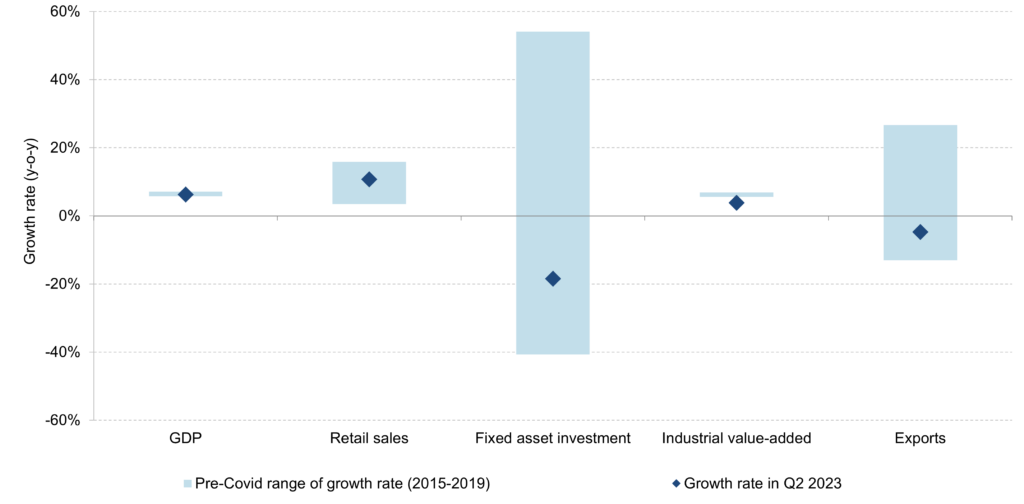
Note: The growth rate of industrial value-added is the y-o-y growth rate of the YTD data. The growth rates of other indicators are the y-o-y growth rates of quarterly data. The historical ranges of the indicators are based on historical y-o-y growth rates in the 20 quarters in 2015-2019.
Sources: The National Bureau of Statistics of China (GDP growth, retail sales volume, fixed asset investment growth, and industrial value-add growth), as of Q2 2023; General Administration of Customs (export growth), as of Q2 2023; LaSalle Investment Management (retail sales growth), as of Q2 2023.
Despite short-term volatility in sales volume and prices, China’s for-sale residential sector is experiencing a slowing decline in sales volumes and prices compared to the second half of 2022. In Tier 1 cities, however, both sales volume and prices are already improving [LMQ page 24]. In the next 6-12 months, the overall for-sale residential market could reach bottom, supported by government policies, a decline in supply and a reduction in mortgage rates and down payments. We expect the subsequent recovery to be gradual. For-sale residential prices may improve, though sales volumes are unlikely to recover to their prior peak. We expect housing markets in Tier 1 and top Tier 2 cities to lead the recovery of low-tier cities.
Despite our expectation of an eventual recovery in China’s for-sale residential sector, the outlook for over-leveraged developers with large exposures to low-tier cities, including Evergrande and Country Garden, remains gloomy. The resolution of these developers’ onshore and offshore corporate debt is expected to take time, which will continue to draw media attention. However, the impact of the default or bankruptcy of these troubled residential developers on the Chinese financial system has been limited so far, and we expect it to remain so, given the exposure of Chinese commercial banks to real estate construction loans only accounted for ~4% of their total assets as of the second quarter of 2023.1 Even for the more vulnerable trust companies, the exposure to real estate declined from ~13% of their total assets in the second quarter of 2019 to ~5% in the second quarter of 2023.2
The unemployment rate of the labor force aged 16-24 in China is rising. However, the direct impacts of this on retail sales and the broader economy are likely to be limited. Those aged 16-24 accounted for only around ten percent of the Chinese population as of 2021.3 In addition, many of those aged 16-24 are still in school, given that young people in China finish education at around age 20, on average.4 There could be some indirect impacts of high youth unemployment on household confidence, although we do not expect them to be significant given that the unemployment rate for the key labor force in China (aged 25-59) is at its lowest level since 2018 [LMQ page 25].
It is true that China’s headline inflation rates have been fluctuating around 0% in recent months, primarily driven by food and energy prices coming off peak levels post lockdowns. However, the core inflation rate (excluding food and energy) remains in positive territory [LMQ page 16]. As the Chinese economy gradually recovers and the post-lockdown effects fade, we expect inflation to gradually escalate.
The Bank of Japan (BoJ) remains an outlier among global central banks, as it continues to maintain ultra-accommodative policy in the form of yield curve control (YCC). The BoJ introduced YCC in 2016, with the intent to keep 10-year government bond yields low to stimulate consumer spending and business investment. Over the past year, speculation has mounted as to whether this policy would be sustained, with volatility being triggered around moments of policy adjustments or speculation that YCC would be abandoned.
Most recently, on September 22, the BoJ kept the YCC policy unchanged with a unanimous vote. The 3-month rates used a reference for borrowing costs have been bouncing around -0.2 to -0.1%, while the 10-year Japanese government bond (JGB) yields have increased to 0.73% since the BoJ’s surprise tweak to the YCC in December last year [LMQ page 7].5 Inflation in Japan has been running above the BoJ’s two percent target over the past 17 months,6 which in theory could be a catalyst for the BoJ to make more tweaks to its YCC policy or even exit it in the near term. But the answers to complex questions about the trajectory of rates in Japan aren’t so simple; policy actions and capital market reactions are inherently difficult to predict, but are likely to be less dramatic than feared.
The latest BoJ inflation projections and Tankan survey results7 suggest that inflation could remain above the BoJ’s 2% target at least over the next 12 months [LMQ page 19]. Wages in Japan, a key component of inflation, grew by 2.3% y-o-y in July 2023 due to a tight labor market.8 Employment conditions are expected to tighten further in the near term,9 potentially reaching levels last seen in 1990s. The 2024 Shunto (spring) wage negotiation is the next key event to monitor. Hence, it is as yet uncertain whether wage growth in Japan could remain consistently above its 2% target.
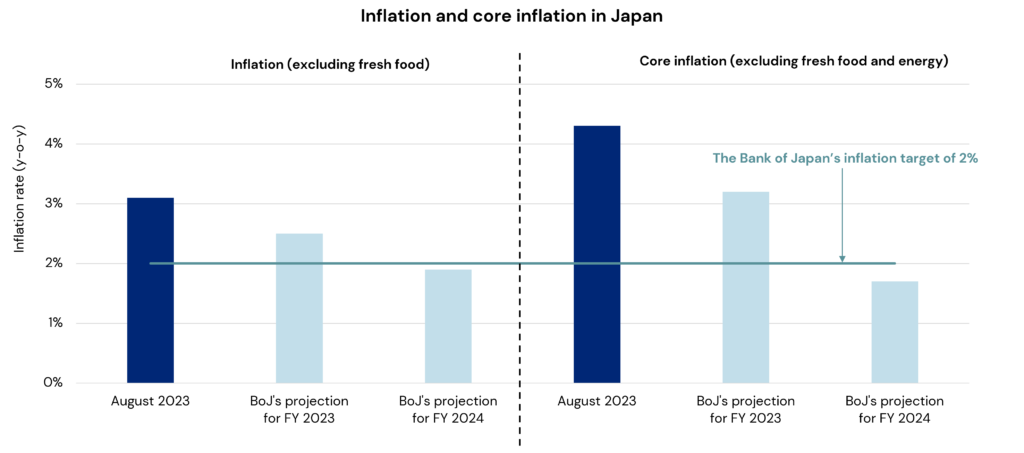
Source: The Japan Statistics Bureau (historical inflation data), as of August 2023. The Bank of Japan (inflation projection for fiscal year 2023 and 2024), as of July 2023.
Inflationary pressures do not exist in a national vacuum. Thankfully, inflation is now declining in other developed markets [LMQ page 12], potentially giving the BoJ more time to evaluate the prospects for inflation in Japan. Many central banks, following the lead of the US Federal Reserve, are seen to be at or near the end of their tightening cycles as inflationary pressure tapers. That said, global central banks are highly unlikely to cut interest rates sharply any time soon, unless economies fall into deep recession. Therefore, we expect the interest rate differential between Japan and the US to remain wide but may narrow somewhat in the near term. Moderation in the interest rate differential could help the weak yen to regain some ground, which might also alleviate some pressure on the BoJ.
Inflation in Japan has been outpacing wage growth, putting pressure on Prime Minister Fumio Kishida’s approval ratings, according to a poll conducted by the Asahi Shimbun newspaper on September 18. There is a strong political impetus for Kishida and the new cabinet to ensure wage growth consistently exceeds the inflation rate. Moreover, as more than 70% of the mortgage loans in Japan have floating rates,10 there is a strong incentive for the BoJ to keep short-term interest rates relatively low. BoJ measures that could derail Japan’s economic recovery or disrupt the capital markets could be considered politically risky and thus less likely.
Footnotes
1 Source: The People’s Bank of China (total amount of outstanding real estate construction loans), as of Q2 2023; State Administration of Financial Supervision and Administration of China (total assets of commercial banks), as of Q2 2023
2 Source: The China Trustee Association, as of Q2 2023
3 Source: The National Bureau of Statistics of China, as of 2021
4 Source: LaSalle Investment Management, as of 2021. The estimation is based on the average years of education among the young labor force in China published by the Ministry of Education of China in 2021.
5 Source: Bloomberg, as of September 25, 2023
6 Source: The Japan Statistics Bureau, as of August 2023
7 Source: The Bank of Japan’s Tankan survey on the inflation expectation and the output price expectation among corporates of all industries, as of June 2023
8 Source: The Japan Statistics Bureau, as of August 2023
9 The Bank of Japan’s Tankan survey: all-industry employment conditions, as of June 2023
10 Source: The Japan Housing Finance Agency, covering home loans between October 2022 and March 2023.
Important Notice and Disclaimer
This publication does not constitute an offer to sell, or the solicitation of an offer to buy, any securities or any interests in any investment products advised by, or the advisory services of, LaSalle Investment Management (together with its global investment advisory affiliates, “LaSalle”). This publication has been prepared without regard to the specific investment objectives, financial situation or particular needs of recipients and under no circumstances is this publication on its own intended to be, or serve as, investment advice. The discussions set forth in this publication are intended for informational purposes only, do not constitute investment advice and are subject to correction, completion and amendment without notice. Further, nothing herein constitutes legal or tax advice. Prior to making any investment, an investor should consult with its own investment, accounting, legal and tax advisers to independently evaluate the risks, consequences and suitability of that investment.
LaSalle has taken reasonable care to ensure that the information contained in this publication is accurate and has been obtained from reliable sources. Any opinions, forecasts, projections or other statements that are made in this publication are forward-looking statements. Although LaSalle believes that the expectations reflected in such forward-looking statements are reasonable, they do involve a number of assumptions, risks and uncertainties. Accordingly, LaSalle does not make any express or implied representation or warranty, and no responsibility is accepted with respect to the adequacy, accuracy, completeness or reasonableness of the facts, opinions, estimates, forecasts, or other information set out in this publication or any further information, written or oral notice, or other document at any time supplied in connection with this publication. LaSalle does not undertake and is under no obligation to update or keep current the information or content contained in this publication for future events. LaSalle does not accept any liability in negligence or otherwise for any loss or damage suffered by any party resulting from reliance on this publication and nothing contained herein shall be relied upon as a promise or guarantee regarding any future events or performance.
By accepting receipt of this publication, the recipient agrees not to distribute, offer or sell this publication or copies of it and agrees not to make use of the publication other than for its own general information purposes.
Copyright © LaSalle Investment Management 2023. All rights reserved. No part of this document may be reproduced by any means, whether graphically, electronically, mechanically or otherwise howsoever, including without limitation photocopying and recording on magnetic tape, or included in any information store and/or retrieval system without prior written permission of LaSalle Investment Management.
Wayne Qin is a Vice President and Strategist on LaSalle’s Asia Pacific Research and Strategy team based in Singapore. He works closely with LaSalle’s transaction and fund management teams to provide research and strategy insights on the South Korean, Japanese and Australian markets. His primary responsibilities also include coverage of the retail sector in Asia.
Prior to joining LaSalle in 2021, Wayne worked as a strategist in the retail industry with a focus on occupier market analysis in the Asia Pacific region. He also previously worked at CBRE providing investment advisory services to institutional investors in China.
Wayne holds a Master of Science degree from Columbia University and a Bachelor of Engineering degree from Taiyuan University of Technology in China.
Amanda Chiang is a Senior Research Analyst in LaSalle’s Asia Pacific Research and Strategy team. She is responsible for the Asia Pacific research and strategy coverage, focusing on Singapore.
Prior to joining LaSalle Investment Management, Amanda was a graduate trainee at Jones Lang LaSalle, where she had the opportunity to gain exposure to various aspects of the real estate industry. As part of the graduate trainee program, she completed a rotation with LaSalle’s Asia Pacific Research and Strategy team. Prior to that, she gained experience in the real estate industry through an internship with Mapletree Investments.
Amanda holds a Bachelor of Science (Real Estate) from the National University of Singapore.
TOKYO (July 31, 2023) — LaSalle Investment Management (“LaSalle”), in partnership with Tokyu Land Corporation and NIPPO Company, announces today the completion of Logiport Nagoya. With a total floor area of 354,744m2 spread across four floors, Logiport Nagoya is the largest multi-tenant logistics facility in the Tokai region.
Located approximately 4.8km from Nagoya Station, one of Japan’s busiest train stations, and 2.2km from Nagoya Expressway Route 5 Manba Route, Logiport Nagoya enjoys excellent access to both the rail and expressway networks. In addition, it is a short 8-minute walk from Hatta Station on the Nagoya Municipal Subway Higashiyama Line, JR Kansai Main Line and Kintetsu Nagoya Line, making it highly convenient for regional commuters.
In terms of features, Logiport Nagoya is equipped with two rampways to access each floor. The facility has a floor load of 1.5t/m2, an effective height of at least 5.5m and a column span of at least 10m, enabling it to respond flexibly to different tenant needs. A disaster prevention center that operates 24 hours a day, 365 days a year maintains the security of the building while a vibration control structure that is resistant to shaking during earthquakes and a 72-hour emergency power generator in case of power outages support business continuity for tenants.
The development and construction of Logiport Nagoya took into consideration environmental sustainability, featuring energy-saving LED lighting, an irrigation system that reuses rainwater and a plan to utilise the facility’s roof for solar power generation, among others. As a result of these efforts, Logiport Nagoya has received the highest rank of S (excellent) from the Comprehensive Evaluation System for Built Environment Efficiency (CASBEE) and the highest five-star rating from the Building Energy Efficiency Labeling System (BELS).
Built with a concept of “Logiport Town”, Logiport Nagoya seeks to make a positive impact on the community to which it belongs. An integrated plaza with landscaping, seating and a playground has been developed for the immediate benefit of the public. Meanwhile, Logiport Nagoya plans to collaborate with the city of Nagoya and the local community on disaster prevention and disaster response. In a nod to the site’s history when railway tracks used to enable direct cargo delivery to and from the nearby Hatta Station, architectural elements that recall railway siding have been incorporated into the design of sidewalks around the facility, which have also been widened.
Logiport Nagoya is 66% leased (approximately 192,000m2) at the time of its completion.
Mari Nagai, Head of Logistics at LaSalle Japan, said, “One of Logiport Nagoya’s strongest attributes is its excellent location close to Nagoya Station. This proximity is comparable to the distance from Tokyo Station to Roppongi or from Empire State Building to One World Trade Center. Combined with its scale and superior features, Logiport Nagoya is well positioned as an urban distribution center.”
Kunihiko Okumura, CEO of LaSalle Japan, said, “Logiport Nagoya is the largest logistics facility we have ever developed. Given the tenant demand for modern logistics solutions that are efficient and flexible, we expect the facility to be a game changer for the Nagoya logistics market.”
About LaSalle Investment Management | Investing Today. For Tomorrow.
LaSalle Investment Management is one of the world’s leading real estate investment managers. On a global basis, LaSalle manages over $79 billion of assets in private and public real estate property and debt investments as of Q4 2022. LaSalle’s diverse client base includes public and private pension funds, insurance companies, governments, corporations, endowments and private individuals from across the globe. LaSalle sponsors a complete range of investment vehicles including separate accounts, open- and closed-end funds, public securities and entity-level investments. For more information please visit www.lasalle.com and LinkedIn.
NOTE: This information discussed above is based on the market analysis and expectations of LaSalle and should not be relied upon by the reader as research or investment advice regarding LaSalle funds or any issuer or security in particular. The information presented herein is for illustrative and educational purposes and is not a recommendation, offer or solicitation to buy or sell any securities or to adopt any investment strategy in any jurisdiction where prohibited by law or where contrary to local law or regulation. Any such offer to invest, if made, will only be made to certain qualified investors by means of a private placement memorandum or applicable offering document and in accordance with applicable laws and regulations. Past performance is not indicative of future results, nor should any statements herein be construed as a prediction or guarantee of future results.


SEOUL (June 7, 2023) — LaSalle Investment Management (“LaSalle”), on behalf of its Korea logistics investment joint venture with a Middle Eastern sovereign wealth fund, announced today the acquisition of two logistics facilities in Bubal District, Icheon, South Korea. The two warehouses, built between 2021 and 2022, have a combined gross floor area (GFA) of 16,346 pyung. They have an existing occupancy rate of approximately 65% and are anchor tenanted by one of the largest third-party logistics (3PL) companies in South Korea under a long-term lease.
The warehouses are strategically located in the Icheon sub-market within Greater Seoul to offer occupiers with access and connectivity to South Korea’s dense and online connected consumers. An established industrial sub-market in South Korea, the southeast area where Icheon is located has the largest Grade-A logistics stock in Greater Seoul.
This transaction follows an opportunistic high-yield loan that LaSalle, on behalf of the LaSalle Asia Opportunity Fund VI (LAO VI) closed earlier this year. The collateralized loan financed the acquisition of a land site valued at KRW116.0 billion which obtained entitlements to develop a 10-storey office building with GFA of 6,480 pyung in the Seongsu district of Seoul. The project is expected to break-ground this year. The borrower has an established track-record of developing, leasing, and selling similar investments and this will be their 4th office project specifically in the Seongsu district.
The Seoul office market has demonstrated relative strong fundamentals to date as a departure from prevailing trends in other metropolitan cities globally which are pivoting towards some form of work-from-home. According to JLL Korea, the average office vacancy rate across Seoul was 1.1% as of Q1 2023.
Steve Hyung Kim, Senior Managing Director and Head of Korea for LaSalle, commented: “We are finding attractive risk-adjusted entry points into deals whether investing through equity or through debt, while still targeting the property sectors and locations we maintain conviction on. Widened credit spreads have allowed us to execute high-yield secured debt financings on behalf of our opportunistic strategy; and in the logistics sector near to mid-term with the new supply headwinds, we will also selectively invest in recapitalization situations as the market de-levers from vintage loans maturing against unstabilized projects.”

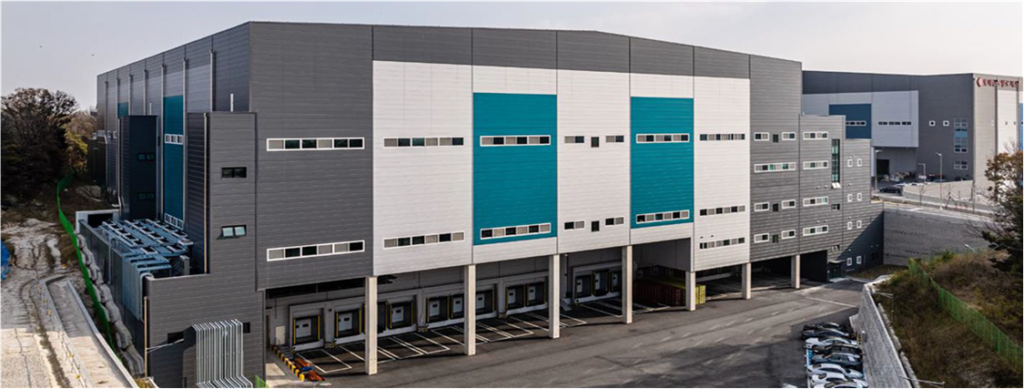

About LaSalle Investment Management | Investing Today. For Tomorrow.
LaSalle Investment Management is one of the world’s leading real estate investment managers. On a global basis, LaSalle manages over $79 billion of assets in private and public real estate property and debt investments as of Q4 2022. LaSalle’s diverse client base includes public and private pension funds, insurance companies, governments, corporations, endowments and private individuals from across the globe. LaSalle sponsors a complete range of investment vehicles including separate accounts, open- and closed-end funds, public securities and entity-level investments. For more information please visit www.lasalle.com and LinkedIn.
NOTE: This information discussed above is based on the market analysis and expectations of LaSalle and should not be relied upon by the reader as research or investment advice regarding LaSalle funds or any issuer or security in particular. The information presented herein is for illustrative and educational purposes and is not a recommendation, offer or solicitation to buy or sell any securities or to adopt any investment strategy in any jurisdiction where prohibited by law or where contrary to local law or regulation. Any such offer to invest, if made, will only be made to certain qualified investors by means of a private placement memorandum or applicable offering document and in accordance with applicable laws and regulations. Past performance is not indicative of future results, nor should any statements herein be construed as a prediction or guarantee of future results.


Itaru Nogami is the Fund Manager of the LaSalle Japan Property Fund. He is responsible for all strategic and operational dimensions of the fund, including equity raising, debt financing, investor and lender communications, acquisition, operational management, as well as investor reporting and fund administration.
He joined the firm in 2020 and has over 20 years of experience in Japanese direct real estate investments.
Itaru holds a Bachelor of Arts in Architecture from the Tokyo Institute of Technology.
SEOUL (April 4, 2023) — LaSalle Investment Management announced that it has been named to The Korea Economic Daily’s (KED) list of Best Asset Managers for Operational Excellence in the Real Estate Large Cap category. This was the first time LaSalle was included in the list.
KED, a top-tier business news media, conducts an annual survey of Korean limited partners (LPs), including pensions, sovereign wealth funds, mutual funds, insurance companies and major banks, to recognize the top general partners (GPs) in Korea. Firms are awarded along three criteria – Performance, Operational Excellence and Client Service – across five asset classes of private equity, private debt, real estate, infrastructure, and hedge funds.
The Operational Excellence award recognizes a GP for outstanding risk management, communication and key person employment.
Steve Hyung Kim, Head of LaSalle Korea, said: “We greatly appreciate the partnership and support of our clients and investors and are honored by this recognition.”
About LaSalle Investment Management | Investing Today. For Tomorrow.
LaSalle Investment Management is one of the world’s leading real estate investment managers. On a global basis, LaSalle manages over $79 billion of assets in private and public real estate property and debt investments as of Q4 2022. LaSalle’s diverse client base includes public and private pension funds, insurance companies, governments, corporations, endowments and private individuals from across the globe. LaSalle sponsors a complete range of investment vehicles including separate accounts, open- and closed-end funds, public securities and entity-level investments. For more information please visit www.lasalle.com, and LinkedIn.
NOTE: This information discussed above is based on the market analysis and expectations of LaSalle and should not be relied upon by the reader as research or investment advice regarding LaSalle funds or any issuer or security in particular. The information presented herein is for illustrative and educational purposes and is not a recommendation, offer or solicitation to buy or sell any securities or to adopt any investment strategy in any jurisdiction where prohibited by law or where contrary to local law or regulation. Any such offer to invest, if made, will only be made to certain qualified investors by means of a private placement memorandum or applicable offering document and in accordance with applicable laws and regulations. Past performance is not indicative of future results, nor should any statements herein be construed as a prediction or guarantee of future results.


Elaine Han is Head of Asia for LaSalle Global Solutions where she is responsible for all aspects of indirect investments in Asia including Multi-Manager and Structured Investments. Elaine joined the team in 2018 as an Assistant Fund Manager and was promoted to Fund Manager in 2020 and Senior Fund Manager in 2022. Elaine is a key team member in the execution of LaSalle’s fund-of-funds and co-investment strategies in the Asia-Pacific region. She is also the portfolio manager of several Asia-based mandates and oversees the performance of existing funds and has led the successful exits of multiple investments at LaSalle.
Elaine’s career in Real Estate began in 2010. Before joining LaSalle, Elaine served as Vice President in Alpha Investment Partners (a Singapore-based real estate private equity firm under Keppel Capital) where she managed a diverse portfolio of assets spanning the office, residential, retail, and industrial sectors. She was also involved in the investment and divestment of assets exceeding US $2 billion across Asia.
Elaine holds a Master of Finance and Taxation and a Bachelor of Science in Finance and Economy from Renmin University. She is a Chartered Financial Analyst (CFA).
TOKYO (March 8, 2023) — LaSalle Investment Management (“LaSalle”) announces today two significant appointments. Kunihiko (Nick) Okumura will succeed Keith Fujii as Chief Executive Officer of LaSalle Japan and will concurrently be appointed as Representative Director of LaSalle Japan. Meanwhile, Itaru Nogami will succeed Ryota Morioka as Fund Manager of LaSalle Japan Property Fund (LJPF), an open-ended core fund with total assets under management of more than JPY200 billion GAV (US$1.54 billion). Both appointments will be effective March 31.
Consequently, Fujii will continue to serve LaSalle as Head of Asia Pacific while Morioka will depart the firm to pursue other interests. Yasuo Nakashima has also stepped down as Representative Director of LaSalle Japan and will depart the firm on April 1.
Keith Fujii, Head of Asia Pacific for LaSalle, said, “These leadership transitions follow a succession planning process spanning several years, during which we worked to develop a robust talent pipeline. Okumura san’s and Nogami san’s appointments reflect the depth of LaSalle’s bench strength and the firm’s long-term orientation.”
Okumura joined LaSalle Japan in 2011 and served as Head of Acquisitions and Asset Management. He was additionally appointed Co-Chief Investment Officer (Co-CIO) for LaSalle Asia Pacific in 2021. With over 25 years of Japanese real estate experience, Okumura has completed over US$15 billion of debt and equity transactions across multiple asset classes. In his new role as CEO of LaSalle Japan, Okumura will continue to serve as Co-CIO for the Asia Pacific region.
Nogami joined LaSalle as Deputy Fund Manager for LJPF in 2020 and has been involved in all strategic and operational dimensions of the fund, including equity raising, debt financing, investor and lender communications, acquisition, operational management, as well as investor reporting and fund administration. Itaru has over 20 years of experience in Japanese direct real estate investments.
Fujii continued, “Over the 12 years he’s been with LaSalle, Okumura san has been instrumental to the development and execution of our business strategy both in Japan and Asia Pacific. With his blend of acumen, discipline and integrity, Okumura san is well-positioned to lead our Japan business and drive the next phase of its growth. Meanwhile, Nogami san has been a key member of LJPF since he joined LaSalle Japan and, with the guidance of Morioka san, is now primed to extend the excellent track record of the fund. I am grateful to Morioka san for his significant contributions to our business and I am confident we will continue to benefit from the leadership of Okumura san at LaSalle Japan and Nogami san for LJPF.”
Kunihiko (Nick) Okumura, CEO-elect for LaSalle Japan, said, “I am honored to be given the opportunity to lead LaSalle Japan and to build on our excellent foundation which Fujii san had strengthened with his leadership in the past few years. I’m looking forward to continuing to work with my talented colleagues, to achieve strong performance for our investors and also to make LaSalle a great place to work.”
Itaru Nogami, Fund Manager-elect for LJPF, said, “I am delighted to have the opportunity to continue to serve our investors as Fund Manager. I’m looking forward to working with my team to maximize investment returns by expanding our diversified portfolio of high-quality, stable core assets in line with our existing strategy.”
About LaSalle Investment Management | Investing Today. For Tomorrow.
LaSalle Investment Management is one of the world’s leading real estate investment managers. On a global basis, LaSalle manages over $79 billion of assets in private and public real estate property and debt investments as of Q4 2022. LaSalle’s diverse client base includes public and private pension funds, insurance companies, governments, corporations, endowments and private individuals from across the globe. LaSalle sponsors a complete range of investment vehicles including separate accounts, open- and closed-end funds, public securities and entity-level investments. For more information please visit www.lasalle.com and LinkedIn.
NOTE: This information discussed above is based on the market analysis and expectations of LaSalle and should not be relied upon by the reader as research or investment advice regarding LaSalle funds or any issuer or security in particular. The information presented herein is for illustrative and educational purposes and is not a recommendation, offer or solicitation to buy or sell any securities or to adopt any investment strategy in any jurisdiction where prohibited by law or where contrary to local law or regulation. Any such offer to invest, if made, will only be made to certain qualified investors by means of a private placement memorandum or applicable offering document and in accordance with applicable laws and regulations. Past performance is not indicative of future results, nor should any statements herein be construed as a prediction or guarantee of future results.
What it means for Chinese and global property markets
After nearly three years of enforcing a comprehensive approach to COVID-19, involving frequent testing, rigorous contact tracing and strict border quarantines, China unexpectedly ended its zero-COVID policy in early December 2022.
After an initial period of surging new infections, by mid-January 2023 the situation had improved substantially. Most recently, cases have fallen sharply as the virus has already infected a large share of the population. Life in China is quickly returning to normal, as evidenced by rebounding subway passenger volume and rising road congestion.1 This return to pre-pandemic normality has meaningful implications for the economic and real estate outlook in China, the broader Asia-Pacific region and the world.
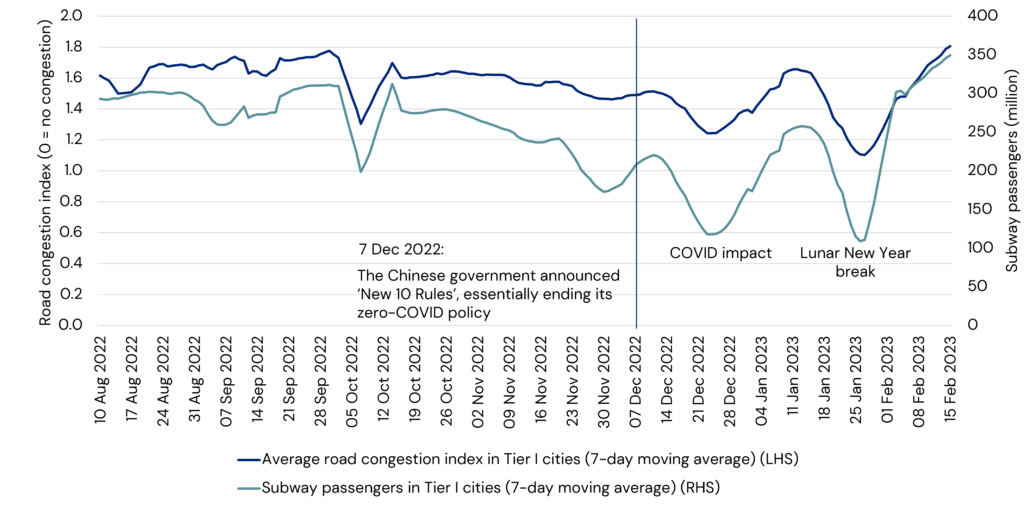
1 Source: Amap.com via WIND Economic Database (road congestion index), WIND Economic Database (subway passenger volume), as of 15 Feb 2023)
China’s reopening provides a clear boost to the Chinese economy, and high-frequency indicators suggest it may have already started to recover. The official manufacturing PMI and non-manufacturing PMI both returned in January 2023 to above 50, the dividing line between expansion and contraction, after hitting the lowest levels since March 2020 in December 2022.2
Meanwhile, among the 70 cities tracked, 36 experienced increases in for-sale residential prices on a quarterly basis in January 2023, compared with only 15 cities in December 2022.3
Unlike China’s V-shaped recovery from the initial COVID-19 outbreak in 2021, the rebound this time is likely to be gradual and mild. There are two factors supporting that expectation. First, despite the reopening and a shift in government policy towards promoting growth, it could take some time to repair the balance sheets of Chinese businesses and households, which are fragile after nearly three years under the zero-COVID regime. Second, the country’s for-sale residential sector, historically a main driver for the economy, remains weak despite signs of bottoming.
2 National Bureau of Statistics of China (NBS)
3 National Bureau of Statistics of China (NBS)
Looking to the broader Asia-Pacific region, China’s reopening is an encouraging development for the hospitality industry. Since March 2022, hotel revenue per available room (RevPAR) had been gradually improving in countries which were advanced in their post-COVID reopening, particularly Australia and Singapore.4
However, Chinese visitors historically have been a significant source of hotel demand and visitor spending in major Asia-Pacific markets, and they were almost completely absent in 2022. As such, hotel performance in most tourism destinations of the region is still trailing the pre-pandemic level. As China unleashes pent-up demand for travel, a recovery in Asia-Pacific hotel and tourism-oriented retail sectors is likely.
4 The Singapore Tourism Board, The Hong Kong Tourism Board, as of Dec 2022
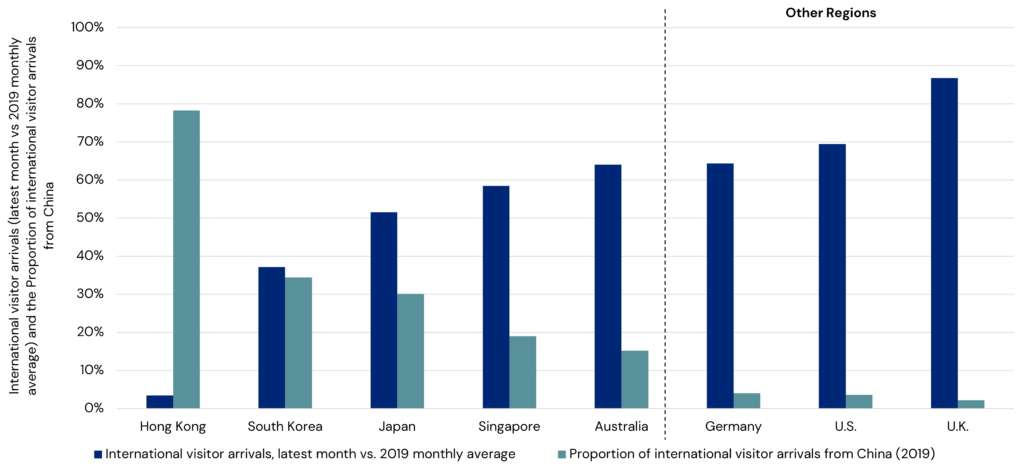
5 The latest data on international visitor arrivals to (1) the U.K. are as of September 2022, (2) Australia, Germany, and the U.S. are as of November 2022, and (3) Hong Kong, Japan, Singapore, and South Korea are as of December 2022. The data on the proportion of international visitor arrivals from China for all countries are as of 2019 except Germany which is as of 2018. Source: Statista and CEIC (Germany), as of 2018; the U.K. Office for National Statistics (the U.K.), as of September 2022; the Australian Bureau of Statistics, the U.S. Department of Commerce, as of November 2022; the Hong Kong Tourism Board, the Japan National Tourism Organization; the Singapore Tourism Board; the Korea Tourism Organization, as of December 2022.
The impact of China’s reopening on the global economy will depend on the interplay of two opposing factors. On the one hand, higher demand from stronger growth in the world’s second-largest economy could potentially increase global inflation, or at least keep it high for some time.
On the other hand, the smoother operation of global supply chains from a fully reopened China is potentially a counterbalancing disinflationary trend. Indeed, an end to the start-stop impact of lockdowns on production and transportation should reduce the risk of further supply chain shortages.
Our expectation of only a gradual recovery in the domestic economy means that the hit to global inflation may not be significant. Weaknesses in the Chinese housing market is likely to prevent too much upward pressure on global construction costs from materializing, even though China is the world’s largest steel exporter. But any boost to inflation, just as it is starting to come down in much of the world, would be unwelcome and could mean that global central banks might not be able to stop raising interest rates as soon as otherwise.
6 Among the major commercial real estate sectors, currently only industrial and multifamily rental assets are qualified underlying assets for ownership by domestic public REITs.
CHICAGO, SINGAPORE (Feb. 27, 2023) – LaSalle Investment Management (“LaSalle”) is pleased to announce it has earned the WELL Health-Safety Rating for 193 office and multifamily properties in North America and Asia Pacific through the International WELL Building Institute (“IWBI”), 43 properties more than last year. LaSalle increased its tally to 127 properties in the US and 66 properties and in Asia Pacific.
According to IWBI, this represents one of the largest and most diverse WELL Health-Safety rated portfolios globally. IWBI also confirmed that LaSalle received ratings on the most multifamily residential properties out of all entities that earned WELL-Health Safety certifications in 2022.
The WELL Health-Safety Rating is an evidence-based, third-party verified rating focusing on operational policies, maintenance protocols and emergency plans to promote overall occupant health and ensure emergency preparedness. To achieve the WELL Health-Safety Rating, the properties implemented or demonstrated features such as improved air and water quality management, health service resources, emergency preparedness programs, enhanced cleaning and sanitation procedures and stakeholder engagement and communication. The WELL Health-Safety Rating can instill confidence in those who come through the building as well as the broader community.
David DeVos, LaSalle Global Head of Sustainability, said: “Tenants are prioritizing healthy spaces where they feel safe, so it is critical to exemplify our commitment to safety to drive tenant demand and, ultimately, portfolio performance. Earning WELL Health-Safety Ratings across our portfolios in North America and Asia is a testament to our focus on tenant safety and ensuring we’re continuing to be at the forefront of the industry in providing the best spaces possible for tenants, no matter where they are.”
Added Jessica Cooper, Chief Product Officer, IWBI: “LaSalle is a demonstrated leader in real estate assets. Already engaged in WELL, LaSalle is showcasing continued leadership to scale the impact of health and well-being globally, achieving the WELL Health-Safety Rating across Asia and the Americas. IWBI congratulates LaSalle for continued achievement of the rating and investment in people-first places.”
The WELL Health-Safety Rating provides a centralized source and governing body to validate efforts made by owners and operators. It leverages insights drawn from the IWBI Task Force on COVID-19, in addition to guidance on the spread of COVID-19 and other respiratory infections developed by the World Health Organization, U.S. Centers for Disease Control and Prevention, global disease control and prevention centers and emergency management agencies, as well as recognized standard-making associations such as ASTM International and ASHRAE, and leading academic and research institutions, as well as core principles already established by IWBI’s WELL Building Standard, the premier framework for advancing health in buildings and spaces of all kinds.
LaSalle’s properties were awarded the WELL Health-Safety Rating following the successful completion of third-party documentation review by GBCI to confirm it has met the feature specific intents and requirements.
About LaSalle Investment Management | Investing Today. For Tomorrow
LaSalle Investment Management is one of the world’s leading real estate investment managers. On a global basis, LaSalle manages over $79 billion of assets in private and public real estate property and debt investments as of Q4 2022. LaSalle’s diverse client base includes public and private pension funds, insurance companies, governments, corporations, endowments and private individuals from across the globe. LaSalle sponsors a complete range of investment vehicles including separate accounts, open- and closed-end funds, public securities and entity-level investments. For more information please visit https://www.lasalle.com, and LinkedIn.


At LaSalle, our mission is to deliver investment performance for a better tomorrow for all our stakeholders, and sustainability and strong climate action are an integral part of delivering both performance and a better tomorrow.
We are addressing the physical and transitional risks associated with the impacts of climate change and the move to a decarbonized world, with action across all areas of our business. We firmly believe that this climate-focused approach can drive investment performance.
Our 2022 sustainability review covers our environmental sustainability strategy and approach as well as how our actions can add value for investors and other stakeholders. It highlights our 2022 results and details how we are tackling resource conservation, reducing carbon emissions and evaluating climate risk across all areas of our business. We conclude with a selection of case studies from around the world highlighting our efforts in carbon conservation, resource capture, supporting biodiversity and supporting a more circular economy.
Far from simply mitigating climate risk, our commitment to sustainability runs through every facet of our business, to ensure that we add value at every stage of an asset’s lifecycle and across the investment process.
Violet Yang is a Sustainability Manager with Lasalle based in Singapore. As a part of Sustainability team, she is responsible for active management of sustainability processes and executing initiatives in Asia Pacific region.
Prior to joining LaSalle Violet worked at the Blackstone Group, where she was primarily involved in portfolio valuation and investment reporting for real estate assets across Asia Pacific.
Violet is an EFFAS Certified Sustainability Analyst, and she holds a Bachelor of Business Administration from Singapore Management University, with academic exposure in Boston, Hong Kong and Singapore.
Dennis Wong is the Senior Strategist in LaSalle’s Asia Pacific Research and Strategy team. He is responsible for the Asia Pacific research and strategy coverage, focusing on Australia, Japan, Singapore and South Korea.
Dennis re-joined LaSalle in 2016 and has been working in the real estate and finance industries since 2009. Dennis was with Aviva Investors and JP Morgan’s Asia Pacific Research and Strategy teams as an associate. Prior to this, Dennis was a regional analyst with LaSalle’s Asia Pacific Research and Strategy team in Singapore.
Dennis received a Bachelor of Arts in Business Management, with a double major in Finance and Quantitative Finance from the Singapore Management University.
20 Tuas South Avenue is comprised of three industrial buildings totalling over 150,000 square meters in the Tuas submarket of Singapore. Tuas is one of the major industrial submarkets in Singapore and is well supported by an extensive road network. The asset is close to another major industrial region, Jurong, which is set to be Singapore’s second central business district, under the Master Plan. The future Tuas Mega Port, the largest port in Singapore opening progressively from 2021 onwards, is also less than 5 kilometers from the property.
Sitting over 25 hectares, the property has an attractive land tenure of more than 45 years remaining, which is uncommon for industrial assets in Singapore. The existing gross floor area (GFA) of the property is much lower than the maximum allowable GFA, indicating a total of approximately 100,000 square meters of development potential.
The existing property is master leased to a quality tenant for a long-term lease. To utilize the underdeveloped GFA, the development was split into two phases to construct a four-story and a two-story warehouse to utilize approximately 100,000 square meters of undeveloped GFA. The new development is expected to complete by end of 2022, and the property will be multi-tenanted with a master-lease tenant anchoring 60% of the space.
LaSalle GPS has pooled commitments from our clients to secure appropriate governance rights such as an AC member seat, to actively monitor and control various aspects of the project, alongside working together with the underlying General Partner.
The leasing of the development portion has been progressing well with key tenants being secured. With the property achieving stabilized occupancy and construction completed in December 2022, LaSalle GPS will focus on potential divestment in late 2023.
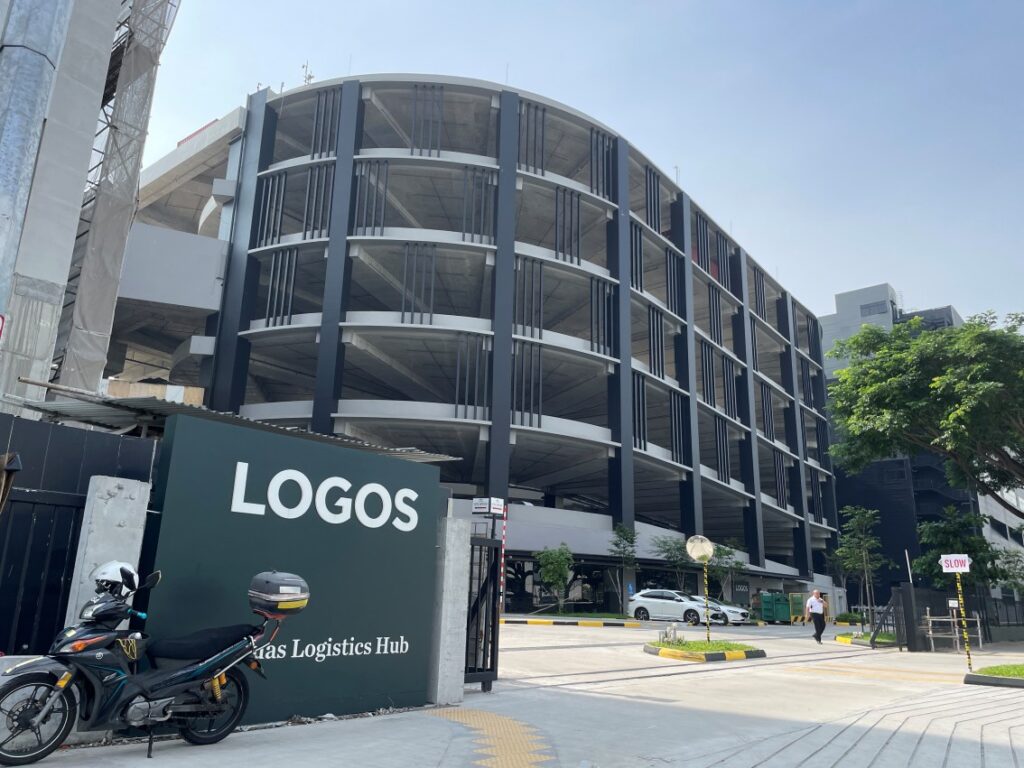
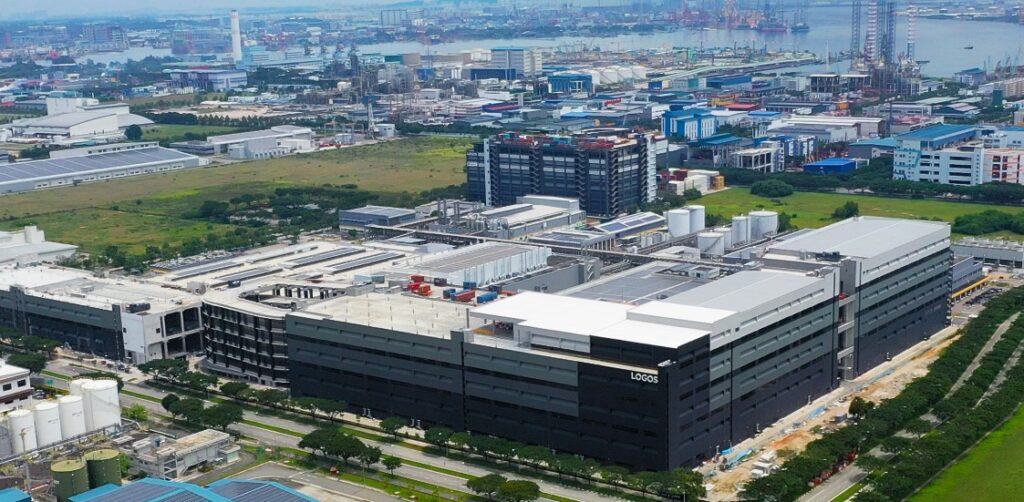


 Niche
Niche
Princes Street hotel
A proposed top-tier hotel in the centre of Edinburgh’s Old Town.
Important information
The assets presented are meant for illustrative purposes only, are subject to change without notice and are not meant as a projection or estimate of the nature of any future investments to be made by the Fund or returns on any such investments. This information has been prepared by LaSalle in order to illustrate the type of assets held and/or transactions completed by the Fund; transactions for properties exhibiting the same or similar characteristics may not be available or profitable in the future.
LaSalle Investment Management (“LaSalle”) is pleased to announce Matthew Jianguo Yao, a seasoned investment manager in the Greater China market, has been appointed its Head of RMB Strategy. Matthew joins LaSalle from PGIM and brings with him 10 years of experience from CBRE Global Investors, where he worked on capital raising and built operational capabilities including development and asset management.
This appointment follows LaSalle’s successful registration as a private equity fund manager (“PFM”) with the Asset Management Association of China, which enables LaSalle to carry out RMB-denominated capital raising, as well as provide fund management services for RMB funds in China. LaSalle is one of a few wholly foreign-owned firms to have obtained the status of a PFM in China.
In this newly formed role Matthew will partner with LaSalle’s team across Shanghai and Hong Kong to further develop its RMB strategy and execution. He will also leverage his market expertise and deeply-rooted network to forge more capital partnerships with China’s domestic institutional investors and capture new opportunities in the market.
Matthew reports to Claire Tang, Head of Greater China and Co-Chief Investment Officer, Asia Pacific.
Claire Tang commented: “China is a strategically important market for LaSalle and one to which we have a long-term commitment, having operated in the country since 2005. We’re pleased to welcome Matthew to our team as we broaden our fundraising to tap on the deep pool of domestic investable capital in China. As we scale our platform in China and across Asia Pacific, we are looking to continue to deliver strong returns to our investors over time.”
Matthew Yao added: “I’m looking forward to working with the LaSalle team to diversify our investor base and to extend the firm’s track record of investment excellence.”
About LaSalle Investment Management
LaSalle Investment Management is one of the world’s leading real estate investment managers. On a global basis, we manage approximately $82 billion of assets in private equity, debt and public real estate investments as of Q2 2022. The firm sponsors a complete range of investment vehicles including open- and closed-end funds, separate accounts and indirect investments. Our diverse client base includes public and private pension funds, insurance companies, governments, corporations, endowments and private individuals from across the globe. For more information please visit www.lasalle.com and LinkedIn.
NOTE: This information discussed above is based on the market analysis and expectations of LaSalle and should not be relied upon by the reader as research or investment advice regarding LaSalle funds or any issuer or security in particular. The information presented herein is for illustrative and educational purposes and is not a recommendation, offer or solicitation to buy or sell any securities or to adopt any investment strategy in any jurisdiction where prohibited by law or where contrary to local law or regulation. Any such offer to invest, if made, will only be made to certain qualified investors by means of a private placement memorandum or applicable offering document and in accordance with applicable laws and regulations. Past performance is not indicative of future results, nor should any statements herein be construed as a prediction or guarantee of future results.


LaSalle Investment Management (“LaSalle”) has raised over US$2.2 billion of equity for LaSalle Asia Opportunity VI (“LAO VI” or “the Fund”), including sidecars and co-investment programmes, exceeding its initial target of US$1.5 billion. The committed capital has been secured from global institutional investors and will provide buying power for over US$7 billion worth of assets.
LAO VI is the sixth in LaSalle’s closed-ended, opportunistic fund series focusing on Asia Pacific. In keeping with its predecessor funds, LAO VI seeks to take advantage of mispriced assets with opportunities to add value through repositioning and redevelopment in Asia Pacific’s key markets including Australia, China, Hong Kong, Japan, Korea and Singapore, having invested approximately 25% of committed capital so far in a diversified portfolio. To date, the LaSalle Asia Opportunity Fund series has invested in over US$13 billion worth of assets. In the last 10 years, the average asset returns generated by the series have exceeded its target of 18% net IRR.
The fund’s investment strategy is led by Kunihiko (Nick) Okumura and Claire Tang in their expanded roles as Co-Chief Investment Officers of LaSalle Asia Pacific, which they assumed in 2021 after former Asia Pacific CEO and CIO Mark Gabbay became LaSalle’s Global CEO. With over 40 years of real estate experience between them, Nick and Claire continue to provide steady leadership and build momentum for the growth of LaSalle’s business in the region.
Globally, LaSalle has established itself as a significant player in value-add investment strategies and continues to expand its capabilities in this area. “We are focused on bolstering our platform in this strategy across all regions where we operate, to meet the continued investor demand for enhanced alpha throughout market cycles,” commented Mark Gabbay, Global Chief Executive Officer.
Keith Fujii, Head of Asia Pacific, commented: “The LaSalle Asia Opportunity Fund series offers investors access to a region with healthy market fundamentals and risk-return diversification opportunities afforded by varying market cycles, backed by the expertise and experience of LaSalle’s long-standing Asia Pacific platform which has been operating since 2000.”
Marc Montanus, Fund Manager for the LaSalle Asia Opportunity Fund Series, added: “We are pleased to have raised over US$2.2 billion for LAO VI and to have again exceeded our initial target for the Fund, especially against the economic headwinds brought by the pandemic over the past two years. This is testament to our investors’ confidence in LaSalle’s excellent track record in deploying capital and generating strong investment performance for our clients.”
About LaSalle Investment Management
LaSalle Investment Management is one of the world’s leading real estate investment managers. On a global basis, we manage approximately $82 billion of assets in private equity, debt and public real estate investments as of Q2 2022. The firm sponsors a complete range of investment vehicles including open- and closed-end funds, separate accounts and indirect investments. Our diverse client base includes public and private pension funds, insurance companies, governments, corporations, endowments and private individuals from across the globe. For more information please visit www.lasalle.com, and LinkedIn.
NOTE: This information discussed above is based on the market analysis and expectations of LaSalle and should not be relied upon by the reader as research or investment advice regarding LaSalle funds or any issuer or security in particular. The information presented herein is for illustrative and educational purposes and is not a recommendation, offer or solicitation to buy or sell any securities or to adopt any investment strategy in any jurisdiction where prohibited by law or where contrary to local law or regulation. Any such offer to invest, if made, will only be made to certain qualified investors by means of a private placement memorandum or applicable offering document and in accordance with applicable laws and regulations. Past performance is not indicative of future results, nor should any statements herein be construed as a prediction or guarantee of future results.


for wine and for real estate
The start of the grape harvest season calls to mind the similarities between winemaking and real estate. Real estate fund managers often borrow vineyard terminology to describe their actions. Seed capital is raised and invested, portfolios are pruned, proceeds are harvested, and funds are classified by their vintage year, meaning the year of fund formation.
Does the inception year for a fund matter in the same way a vintage year matters for wine? Our analysis of data from Preqin highlights that both the vintage year and risk style of a fund have been important determinants of performance over the last 30 year.

Does the inception year for a fund matter in the same way a vintage year matters for wine? Our analysis of data from Preqin highlights that both the vintage year and risk style of a fund have been important determinants of performance over the last 30 years (Page 5).
A wine vintage is shaped by external conditions like the weather. Stressful conditions like droughts can produce great wine. Likewise, macroeconomic conditions influence a fund’s risk and return characteristics. In the Mid-Year 2022 ISA, we noted how capital markets are experiencing a major regime shift. The macroeconomic environment has quickly moved from lower-for-longer to weaker growth (Page 33), high inflation (Page 14), and higher interest rates (Page 9), all of which affect real estate performance.
Vintage years characterized by major disruptions in macroeconomic conditions – like the dot-com crash or the global financial crisis – have been associated with modestly higher median returns compared to the prior period, but also a significantly higher dispersion of returns (Page 6). So, a stressful macro environment simultaneously creates higher volatility while it also slightly raises the odds of a stronger entry point for investing. Put differently, choosing a wine from a good vintage year is no guarantee that it will turn out to be a memorable bottle!
In wine-growing countries across the world, the summer has been dry and hot. Decades of historic data allow oenologists to draw inferences about the likely quality of the 2022 wine vintage. However, vintage year analysis for real estate funds is trickier. For one thing, the combination of macroeconomic conditions that the 2022 real estate fund vintage faces–weak growth, high inflation and rising interest rates–have not been seen in conjunction since the 1970s.
In addition, the repricing implied by public real estate markets (page 31) has not yet fully worked its way through private markets. On the one hand, capital that has been invested early in 2022 already might face valuation declines if the repricing continues. On the other hand, any private equity repricing in late 2022 offers an interesting entry point for funds with dry powder.
Even with plenty of data to review, it takes the passage of time to confirm the final quality of a wine vintage. We also expect that it will take several years for the true quality of the 2022 real estate fund vintage to be known. Nevertheless, the wine analogy (and our own research) shows that stress can still produce a strong vintage, for wine or for real estate.
Rising over 29 levels including parking, retail and commercial spaces, 222 Exhibition Street boasts stunning, protected, unrestricted views across Melbourne. Its convenient location is just 300 meters to Parliament Station and a short walk to the Bourke Street Tram, with direct accessibility to some of Melbourne’s best parks, gardens, gymnasiums and bicycle paths. The building has a strong focus on wellness in the workplace with a modern end-of-trip facility including 300 lockers, 222 bike racks and 14 showers.
In 2010, the building underwent a plant and equipment overhaul, elevating the overall offering and paving the way for the new rejuvenation works which will see it better meet the needs of the modern workforce and offer one of the most compelling leasing opportunities within the Melbourne central business district. The investment management team for the custom account client believes that this prime location in a highly sought-after office market, when combined with the building’s strong environmental credentials, will make it a strong and reliable asset for many years to come.
LaSalle owns 222 Exhibition Street on behalf of two custom account clients, each of whom holds a 50% stake in the building.
In line with LaSalle’s and our clients’ sustainable investment objectives, occupants benefit from the ability of 222 Exhibition Street’s predictive maintenance system to reduce the property’s energy consumption by reducing the amount of unnecessary maintenance work typically carried out at commercial buildings. The building also benefits from a smart building management system which monitors and adjusts HVAC usage based off real time usage and weather forecasts which has resulted in a 16% reduction in energy usage. A 67kW solar system is installed on the roof of the building, reducing the assets Scope 1 and Scope 2 emissions.
In 2017, 222 Exhibition Street won the Collaborative Partnerships Award presented by the Facilities Management Association (FMA) for the building’s predictive maintenance system. The building has also been certified “Carbon Neutral,” Climate Active’s top certification in Australia and, in partnership with the property manager, LaSalle planned and delivered a 5.5-star Energy and 6-star Water NABERS rated asset, ahead of schedule. This significant commitment includes extensive environmental performance upgrades to improve the energy, waste, water and indoor environmental performance of the building.







 Industrial
Industrial
Atlanta logistics portfolio
Four newly constructed, Class A logistics warehouses located across suburban Atlanta, Georgia
 Office
Office
Sixty London Wall
Grade A office accommodation with excellent sustainability credentials
 Residential
Residential
Pier 8 at The Preserve
A luxury apartment community in suburban Tampa
 Office
Office
2020 K Street
A downtown Washington office property with strong sustainability credentials
Important information
The assets presented are meant for illustrative purposes only, are subject to change without notice and are not meant as a projection or estimate of the nature of any future investments to be made by the Fund or returns on any such investments. This information has been prepared by LaSalle in order to illustrate the type of assets held and/or transactions completed by the Fund; transactions for properties exhibiting the same or similar characteristics may not be available or profitable in the future.
Important information about sustainability
A decision to invest should consider all characteristics or objectives disclosed in the offering document. Please refer to the offering document before making any final investment decision.
Except where specified either in this webpage or any other documents, any sustainability or impact goals, targets, commitments, incentives, initiatives or outcomes referenced in any information, reporting or disclosures published by LaSalle are not being marketed to investors or promoted and do not bind any investment decisions made in respect of, or the management or stewardship of, any funds managed by LaSalle for the purposes of Regulation (EU) 2019/2088 on sustainability-related disclosures in the financial services sector. Any measures in respect of such sustainability or impact goals, targets, commitments, incentives, initiatives or outcomes may be overridden, may not be implemented or may not be immediately applicable to the investments of any funds managed by LaSalle (in each case, at LaSalle’s sole discretion).
Information about 222 Exhibition Street’s ratings and certifications
I joined LaSalle in 2008 and I am celebrating my 16-year anniversary this month. Time flies!
Before LaSalle, I worked in global finance and for a non-profit called the Japan Council on the UN Decade of Education for Sustainable Development. I was responsible for many financial tasks including accounting, payroll and financial administrative duties.
At that time, I worked three days per week, because I was raising two small children and wanted to spend time with them. I was introduced to LaSalle through a recruiting agency when my son was six years old. The Regional Finance team was looking for a person in Japan who would work part-time, and that matched with my wish to be at home with my children. I started with LaSalle in Corporate Finance in 2008 as an Associate, responsible for revenue recognition and general reporting.
When I joined, Asia Pacific Corporate Finance was small and new, there were two team members in Singapore, and only one in Japan. Even though we didn’t meet in person for some time, I appreciated the support I received my colleagues. We bonded with trust and friendship and worked well as a team.
Just after I started, the Global Financial Crisis affected our business and our assets under management (AUM) started to drop. Through those tough years, I remember our LaSalle Japan colleagues working hard to find new sources of investments. In 2013, though Japan AUM was still lower, we had more variety in our investments. I faced something new every year, taking on new challenges and opportunities. I worked with my manager to standardize policies for local finance, fee recognition, and cost recharges. On my five-year anniversary with LaSalle, I was promoted to Manager.
I did not expect that promotion because I was still working on a shorter schedule to balance my time with my children. However, I extended my work time in 2015, because our business grew, and Corporate Finance had more responsibility. LaSalle Logiport REIT was launched that year, and I covered our subsidiary company managing the REIT.
Shortly after, LaSalle internalized the financial activity, instead of outsourcing it. My manager asked me if I would like to be Head of Corporate Finance for Japan. I had enough experience; however, I declined the offer at that time. I was not confident I would be able to perform this job and have enough time with my family.
When I declined the offer, I worked with the local team and manager, and I sometimes dealt with challenges in my role. I did not always share my views openly and looking back I regretted not accepting the new position. This was a turning point for me. Four years later in 2019, I started to cover cash management and tax filing and was promoted to Vice President. In December, due to internal movements, I was again offered the role of Head of Corporate Finance. I was thrilled to get a second chance and accepted the offer.
I love working with my Corporate Finance team and our colleagues around the world. I have good colleagues in Japan and in Corporate Finance, and I see their perseverance even during tough times. It always encourages and motivates me to see how they take challenges with grace, and I am grateful to work with such people.
Heightened geopolitical risk, persistent high inflation, and a possible recession will place European real estate under acute pressure in H2 2022. However, the asset class is expected to continue to provide longer-term stability for core investors via carefully curated portfolios, as well as offering new opportunity for investors seeking value-add returns – according to the mid-year 2022 edition of the Investment Strategy Annual (“ISA”), the report published by global real estate investment manager LaSalle Investment Management (“LaSalle”).
Europe is facing a macroeconomic environment rendered fragile by supply chain issues, a hot war on the region’s periphery and a squeeze on consumers’ disposable incomes. As a result, LaSalle expects real estate investors to adopt a much more cautious approach in the second half of 2022. However, while inflationary pressures have surged, and interest rates have increased earlier and more quickly than expected, real estate assets can act as a hedge against inflation in cases where landlords have pricing power. Fundamentally, this will manifest for investors with the best assets in the right locations, where supply-demand imbalances underpin rental growth.
Furthermore, in an uncertain environment, investors seeking higher returns can expect to benefit from dislocation and opportunities to repurpose assets. Off-market or value-add opportunities could potentially offset the effect of rising operating expenses, construction costs and interest rates, either through building-specific renovation or repositioning to achieve occupancy improvement or rental uplift.
Long-term resilience will be underpinned by careful stock selection. Although European real estate markets have been impacted by global headwinds, pockets of opportunity persist for investors across each sector.
Retail rebound postponed
In retail, the post-Covid recovery has been shaken by the impact of inflation on consumer discretionary spending power. Bricks-and-mortar retail warehouses have, however, remained resilient due to the non-discretionary nature of underlying demand for grocery anchors and their convenience offer. But fundamental challenges for European shopping centres and high-street retail is expected to persist, despite destination shopping continuing to remain an integral part of the retail experience in the long term. We remain optimistic on the outlook for outlet centres, which are set to benefit from increasing consumer frugality.
Office sector ‘trifurcation’
As with retail, the office sector is experiencing occupier and investor needs varying greatly by the quality of asset and micro location. Experientially rich buildings in prime locations that meet sustainability standards and benefit from high-quality amenities will continue to attract demand. In addition, with the pathway to Net Zero Carbon in mind, the age and quality of existing stock in European markets presents an opportunity to create the offices of the future, particularly through refurbishment. However, there is a growing range of older stock which is likely to be stranded and should be sold at – or at times even below – current valuation before liquidity dries up.
Logistics demand story remains intact
Logistics has not been immune to recent market shocks and the ongoing cost-of-living crisis. A slowdown in take-up by major occupiers marks a change from many years of continued expansion. However, LaSalle believes that the sector remains in a robust position to grow in the coming months. European logistics properties recorded the highest demand for new space ever in H1 2022, driven by continuous e-commerce expansion, as well as just-in-case inventories and the nearshoring of some manufacturing activity. As a result, vacancy rates are at historical lows, and we remain confident of future prospects for European logistics rental growth.
Living strategies’ prospects at risk of divergence
The living sectors remain underpinneD by strong demand drivers including robust household formation, growth in key cities, an ageing population, increasing mobility and a structural undersupply across Europe. However, potential home buyers may tilt toward renting, owing to the rising cost of debt. For the more niche living sub-sectors, such as student housing and senior housing, investors will need to be ahead of the curve to take advantage of attractive pricing.
Finding value across the yield spectrum
With the European landscape evolving quickly, assessing the prospect for various sectors requires consideration of assets’ pricing yield levels and income growth potential.
LaSalle’s framework finds that for low-yield sectors with excellent fundamentals, like logistics, prime low-carbon offices in key cities and unregulated residential, valuations will hinge on the potential for and relative magnitude of future rental growth and an upward shift in yields. In low-yielding sectors where inflation cannot be offset by rental growth, caution must be exercised until markets stabilise.
Although higher-yielding sectors with challenged fundamentals are intuitively those in which value may be identifiable, recent concerns around economic growth have made their impact felt. The nascent retail recovery, for instance, is at risk from inflationary pressure on real incomes, while capex-intensive strategies to renovate buildings are affected by rising construction costs. Meanwhile, sectors with relatively higher yields and stronger net operating income growth potential – namely alternative living sectors, such as student accommodation or senior living – continue to remain attractive.
Brian Klinksiek, Head of European Research and Global Portfolio Strategies at LaSalle, said: “The past six months have seen macroeconomic headwinds and geopolitical risk affect the global economic outlook. European investors should therefore exercise caution in the coming months until market valuations and asset pricing stabilise. But despite this, real estate will remain an anchor as other asset classes struggle, and investors look for predictability. Underpinned by the long-term resilience of the asset class, careful portfolio construction across the key sectors of European real estate can continue to deliver the benefits of diversification, stability and long-term income growth for investors.”
Jacques Gordon, Global Head of Research and Strategy at LaSalle, added: “Real estate generally provided shelter during the waves of volatility that swept through the securities markets in the first half of the year. In the second half, we foresee different dynamics unfolding. The big change has been the sharp rise in inflation in Western countries and a “regime shift” from highly accommodative to tightening monetary policies by several central banks. Many world events simultaneously contributed to this inflection point including: the re-opening of economies after COVID-19, Russia’s invasion of Ukraine, trade wars, and government stimulus spending. Although these pressures were building in 2021, there is no escaping the fact that the financial and commodity markets shifted sharply in the first half of 2022. Our guidance for investors to seek inflation protection in real estate is a focus-theme of our mid-year update.”
About LaSalle Investment Management
LaSalle Investment Management is one of the world’s leading real estate investment managers. On a global basis, we manage approximately $82 billion of assets in private equity, debt and public real estate investments as of Q2 2022. The firm sponsors a complete range of investment vehicles including open- and closed-end funds, separate accounts and indirect investments. Our diverse client base includes public and private pension funds, insurance companies, governments, corporations, endowments and private individuals from across the globe. For more information please visit www.lasalle.com and LinkedIn.
NOTE: This information discussed above is based on the market analysis and expectations of LaSalle and should not be relied upon by the reader as research or investment advice regarding LaSalle funds or any issuer or security in particular. The information presented herein is for illustrative and educational purposes and is not a recommendation, offer or solicitation to buy or sell any securities or to adopt any investment strategy in any jurisdiction where prohibited by law or where contrary to local law or regulation. Any such offer to invest, if made, will only be made to certain qualified investors by means of a private placement memorandum or applicable offering document and in accordance with applicable laws and regulations. Past performance is not indicative of future results, nor should any statements herein be construed as a prediction or guarantee of future results.


An unrelenting wave of macro news amidst record-breaking heat has carried through all of 2022 to the start of August. With persistent high inflation readings (p.13), energy price volatility and supply disruption (p. 20), interest rate hikes (p. 4), bear equity markets (p. 8), heightened recession risk (p. 3), and VC capital slowing (p. 7) – the post-COVID recovery cycle is at risk.
Recently published books that we’re reading – and recommending – this summer delve into energy geopolitics, climate change impacts, and the history of real estate and investments.

Yet August, with its summer festivals and family holidays for many, is a good month to put the frenetic pace of change into perspective. Many of the indices, prices, and events summarized in our macro indicators deck reveal just the tip of the iceberg, with a deeper, complex story hidden from view. Often only a longer form, like a book, can do justice to these stories.
Recently published books that we’re reading – and recommending – this summer delve into energy geopolitics, climate change impacts, and the history of real estate and investments. Helen Thompson’s Disorder: Hard Times in the 21st Century (Feb. 2022) traces how historic energy policy contributed to today’s geopolitical fractures, in Europe and beyond.In asimilar vein, Ian Bremmer’s Power of Crisis (May 2022) looks at how leaders are responding to three big crises facing the world: health emergencies, climate change, and the rise of artificial intelligence (AI). The UK, Central China, and Texas have sweltered through record temperatures over the last month and the continued backdrop of virulent COVID strains, like BA.5, continue to show how these crises are not mere abstractions but are a recurring part of modern life.
Concrete examples of climate impacts, like how reptiles are trying to cope with more frequent Caribbean storms, abound in Thor Hanson’s excellent book, Hurricane Lizards and Plastic Squid (Sept. 2021). Hansen delves into a new field of climate change biology. He describes the long sweep of natural time as one of “punctuated equilibrium.” This consists of “bursts of rapid activity (punctuations) followed by long periods of stability.” This pattern also aptly describes economic and real estate cycles, with current turmoil upsetting the post-GFC equilibrium.
Turning to real estate – and some quite recent history – The Cult of We (July 2021) by Eliot Brown and Maureen Farrell – lifts the curtain on the madcap history of WeWork’s founding by Adam Neumann. The writers focus on the hubris that led to the downfall of “We”, although the recent reset and rebound of many shared office concepts is beyond their scope. Alexandra Lange’s Meet Me by the Fountain focuses on the shopping mall – and how it “has changed and changed again” from futuristic, to ubiquitous, to pandemic-induced redevelopments (June 2022). In Land (Jan. 2021), Simon Winchester links a variety of tales on a theme of land as “the only thing on earth
that lasts.”
And, in a book tailored for investors, In Pursuit of the Perfect Portfolio (Aug. 2021), Lo and Foerster describe how the ideas of Markowitz, Bogle, Shiller, Siegel, and six other investment visionaries developed the frameworks that have taught us to build better portfolios.
We also invite you to read our Mid-Year ISA, released last month, laying out our global real estate investment recommendations at this inflection point, with a particular focus on inflation protection, strategies to weather shifting monetary policy, and the sustainability revolution in real estate. In addition, we have published a new white paper this month on the Demographics of Aging and its impact on real estate.
Market direction and economic outlooks have shifted since the start of 2022, with elevated inflation, slowing economic growth, and higher interest rates impacting the real estate market. According to LaSalle’s 2022 Mid-Year Investment Strategy Annual (“ISA”), the overall market shifts are causing real estate investors to re-visit earlier strategies as they understand and react to higher inflation, the Fed’s and the Bank of Canada’s rapid interest rate increases to combat it, and global geopolitical and economic upheaval.
LaSalle clients can view the full report at: www.lasalle.com/research-and-insights/isa-2020
In North America, the impacts of inflation and rising rates on real estate are nuanced, and require an understanding of each sector’s fundamentals, which the report explores. Coming into 2022, LaSalle Research & Strategy noted that the pandemic and its ensuing economic ripple effects had accelerated pre-pandemic trends, widening the gap between favored and non-favored property types. The mid-year report shows these trends are continuing as investors gravitate to favored property types with strong underlying fundamentals. Looking ahead, there is uncertainty in the market, but it appears as though the favored property types are well-positioned to withstand a potential economic slowdown.
Jacques Gordon, Global Head of Research and Strategy at LaSalle, said: “Real estate generally provided shelter during the waves of volatility that swept through the securities markets in the first half of the year. In the second half, we foresee different dynamics unfolding. The big change has been the sharp rise in inflation in Western countries and a “regime shift” from highly accommodative to tightening monetary policies by several central banks. Many world events simultaneously contributed to this inflection point including: the re-opening of economies after COVID-19, Russia’s invasion of Ukraine, trade wars, and government stimulus spending. Although these pressures were building in 2021, there is no escaping the fact that the financial and commodity markets shifted sharply in the first half of 2022. Our guidance for investors to seek inflation protection in real estate is a focus-theme of our mid-year update.”
Select 2022 Mid-Year ISA findings for North America include:
Rich Kleinman, Americas Co-CIO and Head of US Research & Strategy at LaSalle, said, “While it remains to be seen how inflation and interest rates will evolve in the second half of the year, it is our view that many property types are well-positioned to support investor goals in the months ahead, and that real estate exposure should play a productive role in investors’ portfolios. Experience in recent downturns is also helping investors and lenders navigate the uncertainty, which should bode well for the industry as a whole.”
Chris Langstaff, Head of Research and Strategy for Canada at LaSalle, said, “Canada is historically a stable market, and it appears that while many of the same headwinds apply, fundamentals remain strong and transactions in many property types are moving forward.”
About LaSalle Investment Management
LaSalle Investment Management is one of the world’s leading real estate investment managers. On a global basis, we manage approximately $82 billion of assets in private equity, debt and public real estate investments as of Q2 2022. The firm sponsors a complete range of investment vehicles including open- and closed-end funds, separate accounts and indirect investments. Our diverse client base includes public and private pension funds, insurance companies, governments, corporations, endowments and private individuals from across the globe. For more information please visit www.lasalle.com and LinkedIn.
NOTE: This information discussed above is based on the market analysis and expectations of LaSalle and should not be relied upon by the reader as research or investment advice regarding LaSalle funds or any issuer or security in particular. The information presented herein is for illustrative and educational purposes and is not a recommendation, offer or solicitation to buy or sell any securities or to adopt any investment strategy in any jurisdiction where prohibited by law or where contrary to local law or regulation. Any such offer to invest, if made, will only be made to certain qualified investors by means of a private placement memorandum or applicable offering document and in accordance with applicable laws and regulations. Past performance is not indicative of future results, nor should any statements herein be construed as a prediction or guarantee of future results.


LaSalle Asia Venture Trust II, a separate account managed by LaSalle Investment Management (“LaSalle”), has exchanged on a Grade A office building in Macquarie Park, Sydney.
This transaction, subject to approval by the Foreign Investment Review Board, follows the acquisition of a mixed-use asset in the same precinct by LaSalle Asia Venture Trust I (“LAVT I”) in 2019 and furthers LaSalle’s investment in Macquarie Park, the second largest CBD and the largest technology and life science office precinct in Sydney.
With an advantageous combination of amenities including one of the largest shopping centres in the southern hemisphere, a major university and a hospital, continued improvements in transport infrastructure, as well as attractiveness to many large and international corporations, Macquarie Park is endowed with strong fundamentals for growth.
The property is located on Talavera Road, approximately 12 kilometres northwest of the Sydney CBD. It is situated approximately 400 metres from the Macquarie Park Metro Station, which currently links Macquarie Park to Sydney’s heavy rail network. In 2024, it is expected to connect directly with the Sydney CBD in an infrastructure development that will deliver new metro stations across Sydney’s northwest and southwest. Once operational, the new line will see a train every 4 min and travel time between Macquarie Park and the Sydney CBD will be substantially reduced.
Completed in 1990, the property is an eight-storey building with a total Net Lettable Area of 12,646sqm, along with 499 (1:25sqm) car parking bays. This car park ratio is the one of the highest in Macquarie Park and cannot be replicated under the current planning scheme.
Adam Donahue, Head of Separate Accounts Asia Pacific and Fund Manager of LAVT II, commented: “This transaction supports our strategy of value creation by focusing on precincts with corporate density, connectivity and excellent amenities. Macquarie Park embodies all of these characteristics.”
Joshua Mudge, Head of Acquisitions Australia, added: “This transaction builds upon our strong track record in Macquarie Park. The robust demand for office space in the precinct, coupled with its established amenities and connectivity are projected to drive strong long-term rental growth.”
The transaction was brokered by Colliers in conjunction with Knight Frank.
About LaSalle Investment Management
LaSalle Investment Management is one of the world’s leading real estate investment managers. On a global basis, we manage approximately $82 billion of assets in private equity, debt and public real estate investments as of Q2 2022. The firm sponsors a complete range of investment vehicles including open- and closed-end funds, separate accounts and indirect investments. Our diverse client base includes public and private pension funds, insurance companies, governments, corporations, endowments and private individuals from across the globe. For more information please visit www.lasalle.com and LinkedIn.
NOTE: This information discussed above is based on the market analysis and expectations of LaSalle and should not be relied upon by the reader as research or investment advice regarding LaSalle funds or any issuer or security in particular. The information presented herein is for illustrative and educational purposes and is not a recommendation, offer or solicitation to buy or sell any securities or to adopt any investment strategy in any jurisdiction where prohibited by law or where contrary to local law or regulation. Any such offer to invest, if made, will only be made to certain qualified investors by means of a private placement memorandum or applicable offering document and in accordance with applicable laws and regulations. Past performance is not indicative of future results, nor should any statements herein be construed as a prediction or guarantee of future results.


Shelter from the storm
More economic and geopolitical history unfolded in the first half of 2022 than typically occurs during the span of several “normal” years. The quaint concept of “normality” may itself prove to be an artifact of history. Yet, the mid-year ISA describes how real estate held up well despite all the tumult. Strategies we set out in 2021, performed as expected, or sometimes even better than expected. Strategy shifts recommended by LaSalle for the second half of the year are modest, despite a renewed focus on the changing macro environment.
Real estate generally provided shelter during the waves of volatility that swept through the securities markets in the first half of the year. In the second half, we foresee different dynamics unfolding as described in Chapter 1, and in the specific strategy shifts recommended in Chapter 2. The big change has been the end of ultra-low interest rates in Western countries. Finally, we revisit the role of real estate in a portfolio in Chapter 3, based on new research done with JLL for the bi-annual Transparency Index, as well as the most recent updates to the correlations with other asset classes.
The most important change in the macroeconomic outlook has been the regime shift from highly accommodative to tightening monetary policies by Western central banks. Many world events simultaneously contributed to this inflection point including: the re-opening of economies after COVID-19, Russia’s invasion of Ukraine, trade wars, and government stimulus spending. Although these pressures were building in 2021, there is no escaping the fact that the financial and commodity markets shifted sharply in the first half of 2022.
In this mid-year update, we focus on the ways that assets and portfolios can be positioned to weather a sustained period of high inflation. We acknowledge that each country is in a slightly different position in the transition from low to higher inflation and that each central bank will react differently to the mix of cost-push and demand-pull inflationary forces.
Other highlighted trends include the continuing competition and complementarity between virtual and physical space. Patterns that affect both asset and sector selection are now coming more clearly into view. Also, we point to the continued momentum of the sustainability revolution as investment managers commit to reducing the carbon footprint of their portfolios, while also grappling with climate risk forecast challenges, transition risks from new regulations, and social issues like housing affordability or health and well-being factors that affect tenants.
The transition from acute to chronic stress
Three months after the Russian invasion of the Ukraine, the fighting and destruction continues. Our March macro deck focused on the ensuing volatility of equity markets, consumer prices and energy costs. In June, there is no sign of the conflict abating, volatility in the capital markets remains high, and energy costs continue to edge upward. As the situation in Ukraine transforms from an acute conflict into a chronic state of affairs, it joins a string of other global stress points that remain ongoing and without closure. Among them are: COVID-19, rising inflation, supply-chain blockages, climate change, and geo-political tensions that exist far beyond Eastern Europe.
The progression from acute to chronic has another positive aspect. The transition allows investors to underwrite assets with the new risks accounted for.

The trade links between the world and the conflict zone in Ukraine are relatively small in aggregate terms. However, when combined with COVID-related snags and new sanctions on Russian exports, these blockages become severe all across Europe and beyond. Critical commodities such as energy, grains, and specific materials with direct implications for real estate (such as sheet metal and sprinklers used in warehouse buildings) are all affected. This contributes to higher levels of inflation in Europe and around the world. The macro deck shows that medium- and long-term inflation expectations remain subdued (pages 7,8,10). But, this comforting view does not alleviate the stress on major economies and construction pipelines in the short term.
Chronic inflation risk will likely be mitigated by real estate’s ability to work as a partial inflation hedge, although this ability is uneven across markets and sectors. This is because real estate has performed best as an inflation hedge when landlords have pricing power to push market rents. Today, this pricing power is in place for many property types favoured by investors. Moreover, this inflation hedging performs best when rising utility costs can be passed through to tenants via “triple net” leases, rental indexation and shorter lease terms. Inflation also contributes to higher construction costs, which means higher replacement costs, extended construction periods and slowdown of development pipelines. In the past, this has supported resilient values for standing assets during periods of elevated inflation. There are no guarantees that this resilience will occur, but the pieces are in place for a strong inflation hedge effect again.
From an investor’s perspective, geo-political tensions would appear to represent a chronic malady of the post-globalization era. Examples of authoritarianism, geopolitical disputes, populism, and nationalism can be found across the world. Important measures to watch are: geopolitical risk (page 3), the health of democracy (page 13) and real estate transparency. According to EIU’s Democracy Index 2022, the scores have been falling in many countries, due to pandemic restrictions that meant many countries struggled to balance public health with personal freedom. On the bright side, JLL and LaSalle’s soon-to-be released Global Real Estate Transparency Index shows marked improvements in three categories: sustainability reporting, proptech adoption, and data tracking of alternative property types. Rising transparency may not counter all the negative effects of falling democracy; but data availability and strong property rights have historically underpinned the free movement of capital to real estate.
The progression from acute to chronic has another positive aspect. The transition allows investors to underwrite assets with the new risks accounted for. During the acute stage, investment decision-making can become paralyzed. In the chronic stage, investors can begin to make longer-term risk adjustments that anticipate the long-term trajectory of the situation.
The transition from pandemic to endemic
On March 11, 2020, the World Health Organization (WHO) declared COVID-19 a pandemic.
As the pandemic enters its third year, there is a growing consensus that COVID-19 variants are likely here to stay. The world will need to adapt to this endemic phase as new, milder variants are likely to continue to emerge. The decline in the number of reported new cases worldwide and the accelerated vaccination efforts have boosted public confidence. In February, Denmark became the first European Union member state to lift its COVID-19 measures. Other European countries and the United States have also eased restrictions. Last week, Ursula von der Leyen (the European Commission President) and Dr. Anthony Fauci (the US infectious disease expert) both declared that the acute phase of the pandemic phase may be over — at least for now.
As the pandemic enters its third year, there is a growing consensus that COVID-19 variants are likely here to stay. The world will need to adapt to this endemic phase as new, milder variants are likely to continue to emerge.

Similarly, many countries in the Asia Pacific region are also transitioning to living with COVID-19. The Asia Pacific region has been relatively successful in keeping the coronavirus at bay over the last two years. As a result, some countries in the region, like China, were able to restart their economies relatively quickly and limit the economic impact of the pandemic. However, the emergence of the highly contagious Omicron variant has pushed governments in the region to re-impose strict measures to give their healthcare system time to recalibrate and set the stage for living with COVID-19. While many countries in the Asia Pacific region are moving towards living with COVID-19, China has maintained a zero-COVID policy. Since March 2022, the Chinese government re-introduced mass PCR testing and lockdowns in “high risk” neighborhoods of several Chinese cities to curb the Omicron variant outbreak. In April 2022, the IMF and other economists gave China a modest downgrade on its growth outlook, although these revised estimates remain higher than any major European or North American economy. On April 28th, President Xi made a solid commitment to increase infrastructure spending to counter slowing growth. In addition, the People’s Bank of China’s has re-committed to easing monetary policies. These efforts are expected to offset some negative impacts from the zero-COVID policy. We expect the recovery of occupier markets in China to be delayed, but not detoured.
Australia, Singapore, and South Korea are among the leading countries in the Asia Pacific region that are making the transition to living with COVID-19, helped by their stabilizing infection rates, and rapid vaccination/booster rollout. As of the end of April 2022, Australia, Singapore, and South Korea have eased nearly all COVID-19 safety measures and re-opened their borders to fully-vaccinated foreign visitors without the need for quarantine. Japan is also moving toward living with COVID-19, albeit at a slower pace than Australia, Singapore, and South Korea, after its quasi-state of emergency was lifted on March 21, 2022.
The relaxation of public health measures and the transition to living with COVID-19 have been highly beneficial for real estate demand. In the Asia Pacific region, the relaxation of social distancing measures and the strong willingness to return to offices has supported the recovery of office demand, especially in countries leading the transition from pandemic to endemic. In this month’s deck we track work from home expectations around the world (see p.3). Office markets like the Sydney CBD and Seoul saw vacancy rate improvements since the height of the pandemic, while other office markets, such as the Singapore CBD, had a positive net effective rent growth. Although rents in the Tokyo Central office market continued to decline in the first quarter of 2022 due to the quasi-state of emergency, the average vacancy rate in the Tokyo Central office market remained the lowest among major office markets in the Asia Pacific region. Major office markets across Europe show a similar recovery, although North American office markets still lag and the recovery in the largest US office markets is tepid at best.
Looking ahead, the transition from the pandemic to the endemic stage is expected to continue to support the recovery in real estate demand. However, other macro forces are now taking center stage as Covid retreats. Russia’s invasion of Ukraine, rising inflation, and interest rate hikes could cast a shadow on the recovery. Therefore, as shown in this month’s deck, the pace of improving real estate fundamentals varies greatly in cities around the world. Investors will need to pay close attention to these cross currents when underwriting new investments and adjusting portfolios.

SINGAPORE (April 25, 2022) — LaSalle Investment Management (“LaSalle”) is pleased to announce it has earned the WELL Health-Safety Rating on 41 logistics and commercial properties in Asia Pacific through the International WELL Building Institute (“IWBI”). They include 8 properties in Australia, 16 properties in China, 16 properties in Japan and one property in Singapore.
The WELL Health-Safety Rating is an evidence-based, third-party verified rating for all new and existing building and space types focusing on operational policies, maintenance protocols, stakeholder engagement and emergency plans to address a post-COVID-19 environment now and into the future. Designed to empower owners and operators across large and small businesses alike to take the necessary steps in order to prioritize the health and safety of their staff, visitors and stakeholders, the WELL Health-Safety Rating can help guide users in preparing their spaces for re-entry in the wake of the COVID-19 pandemic, instilling confidence in those who come through the building as well as the broader community.
Keith Fujii, LaSalle Head of Asia Pacific, said: “By embracing the WELL Health-Safety standard across our Asia Pacific portfolios, we are taking a further step to create a safe and considerate environment for our tenants and their customers. This achievement reiterates LaSalle’s commitment to investing in and managing assets that have a truly positive impact on public health and safety.”
Tom Miller, LaSalle Head of Development and Sustainability, Asia Pacific, added: “We are looking forward to working with IWBI to extend this certification program to many more of LaSalle’s assets in Asia Pacific in the future.”
In order to achieve WELL Health-Safety Rating, the properties implemented features such as improved air and water quality management, health service resources, emergency preparedness programs, enhanced cleaning and sanitation procedures, and increased stakeholder engagement and communication.
About LaSalle Investment Management
LaSalle Investment Management is one of the world’s leading real estate investment managers. On a global basis, we manage approximately $82 billion of assets in private equity, debt and public real estate investments as of Q2 2022. The firm sponsors a complete range of investment vehicles including open- and closed-end funds, separate accounts and indirect investments. Our diverse client base includes public and private pension funds, insurance companies, governments, corporations, endowments and private individuals from across the globe. For more information please visit www.lasalle.com and LinkedIn.
NOTE: This information discussed above is based on the market analysis and expectations of LaSalle and should not be relied upon by the reader as research or investment advice regarding LaSalle funds or any issuer or security in particular. The information presented herein is for illustrative and educational purposes and is not a recommendation, offer or solicitation to buy or sell any securities or to adopt any investment strategy in any jurisdiction where prohibited by law or where contrary to local law or regulation. Any such offer to invest, if made, will only be made to certain qualified investors by means of a private placement memorandum or applicable offering document and in accordance with applicable laws and regulations. Past performance is not indicative of future results, nor should any statements herein be construed as a prediction or guarantee of future results.


Fred Tang is China Head of Research and Strategy. As a member of the Asia Pacific Research and Strategy team, his main responsibilities are to monitor the real estate market and macro economy in China, help formulating investment strategy and support deal acquisition in China and Hong Kong.
Prior to joining LaSalle in 2020, Fred was a Managing Director at PingAn Trust, an investment arm of China’s financial conglomerate, PingAn Group, where he was responsible for real estate market research and strategy, acquisition of commercial properties, and feasibility evaluation of residential projects in China. Fred started his career as an economist at Torto Wheaton Research of CBRE in 2005 in Boston.
Fred holds a PhD degree from Indiana University at Bloomington in the United States. He is also a CFA Charterholder.
Miki Arai is Managing Director and Co-Head of Asset Management for LaSalle in Japan. She is responsible for value-add asset management activities in Japan on behalf of the value-add investments team as well as custom accounts and leads the firm’s Japan retail sector asset management. She focuses on the creation and implementation of strategic asset management initiatives with heavy involvement in daily operations and leasing activities, notably leading anchor tenant negotiations. She also manages several asset managers in addition to the respective property management teams. Since she joined LaSalle in 2006, Miki has managed over 35 retail assets with a total AUM of over US$4 billion.
Miki has over 23 years of experience in the real estate industry in Japan. Prior to joining LaSalle, she was an asset manager at Asia Pacific Land, an Asia-focused real estate fund manager, where she was responsible for managing asset enhancement initiatives for their first retail asset acquisition.
Miki earned a Bachelor of Arts from the Fashion Institute of Technology in New York.
Marnie Prater became the Asia Pacific Chief Operating Officer in July 2019 and is currently based in Singapore. She is responsible for HR, finance, IT, legal and compliance and operations for the region. Prior to her present role, Marnie was the General Counsel for Asia Pacific for over ten years having responsibility for all legal and compliance matters in the region.
Prior to joining LaSalle, Marnie was the General Counsel for a manager of a Singapore-listed real estate investment trust. Before that, she was a Senior Associate with King Wood Mallesons in Sydney and an Associate with Freshfields Bruckhaus Deringer in London. Marnie holds a Bachelor of Arts and a Bachelor of Laws from the University of Wollongong, Australia. She was admitted to practice as a solicitor and barrister in New South Wales, Australia in 1999.
JB Park is the Head of Asia Pacific Investor Relations based in Singapore. He is responsible for investment relationships with investors in Asia Pacific involving in capital raising, cross-border strategic investments and product development. JB joined LaSalle in 2011 as an acquisition officer and, before he took current role, he was a head of Global Partners Solution Asia Pacific in Singapore.
Prior to LaSalle, JB worked with the Alternative Investment Team at Standard Chartered Bank specializing in distressed debt/equity investment and as an acquisitions officer in the Global Commercial Real Estate Group of Lehman Brothers.
JB holds an MA from Cornell University and a BA in Foreign Studies from Hankuk University.
Jason Ko is LaSalle’s Head of Corporate Finance in Asia Pacific. He joined in January 2020, and his responsibilities include corporate accounting, financial and management reporting as well as business partnering and planning.
Prior to assuming his present role, Jason was JLL’s Head of Finance, Southeast Asia, a responsibility he held for almost four years. As a senior executive with extensive experience in managing finance teams in commercial real estate, banking, financial services and fund management, Jason has a proven record of accomplishment in growing businesses and operations. He has held other regional finance roles with Tullett Prebon and Principal Global Investors.
Jason holds a Commerce degree from the University of Melbourne, Australia and is a qualified accountant and member of Chartered Accountants Australia and New Zealand.
Steve Hyung Kim is Co-Head and Co-Chief Investment Officer for LaSalle in Asia Pacific. He also serves as Representative Director of LaSalle Investment Management Co., Ltd., LaSalle’s licensed asset management company which manages capital on behalf of Korean and international clients. Additionally, he is a member of LaSalle’s Global Management Committee and the Asia Pacific Investment Committee.
Steve joined LaSalle in 2013. He previously served as Head of Acquisitions and Asset Management focused on opportunistic investments and led the launch of the firm’s logistics development platform in Korea. Before joining LaSalle, he was a Managing Partner at Bellevue Capital Management and prior to that, an Executive Director in the Real Estate Investment Banking Division at Nomura International. Earlier in his career, Steve was Vice President of Lehman Brothers’ Global Real Estate Group and also worked at Deutsche Bank’s Real Estate Opportunities Group. He began his career at Merrill Lynch in the U.S. and interned at the United States Senate. Since 2000, Steve has been committed to Asia Pacific having been based in Hong Kong and Seoul. During this time, he completed a wide spectrum of real estate-related transactions in opportunistic private equity investing, secured high-yield lending, securitizations, distressed loan portfolio acquisitions and corporate finance investment banking assignments across Asia Pacific markets.
Steve holds a Bachelor of Science from Georgetown University and also studied at The London School of Economics and Political Science.
Kunihiko (Nick) Okumura is Co-Head and Co-Chief Investment Officer for LaSalle in Asia Pacific, roles to which he was appointed in July 2025 and January 2021 respectively. He has been the CEO of Japan since March 2023. He is also a member of LaSalle’s Global Management Committee and the Asia Pacific Investment Committee.
Nick joined LaSalle Japan in 2011 and served as Head of Acquisitions and Asset Management for higher return strategies in Japan for over a decade. During this time, Nick completed over US$6.8 billion worth of opportunistic investments across office, retail, residential and hotel sectors across Asia Pacific. Prior to joining the firm, Nick served as Principal at Westbrook Partners and Senior Vice President of the Global Real Estate Group at Lehman Brothers. With over 27 years of Japanese real estate experience, Nick has completed over US$20 billion of debt and equity transactions across multiple asset classes.
Nick holds a Master of Arts in International Studies from the University of Washington and a Bachelor of Arts in English from Kwansei Gakuin University.
Ms. Nagai is the head of LaSalle’s logistics team and leads the asset management team in
Japan, on behalf of the LaSalle Japan Logistics Fund series.
Mari has more than 20 years’ experience in the real estate industry in Japan and joined
LaSalle in 2008 as an asset manager responsible for operating, developing, and leasing
logistics assets. Mari had been in charge of over $15.5 billion USD or 17 logistics assets
when she was an asset manager. During the GFC, her asset restructuring plan rescued the
investments under her management and recovered the asset value facing the credit
crunch. She built annex warehouse to increase rentable area to generate rental income,
renovating the dry warehouse to cold storage, and successfully renewed the leases with
tenant who intended to vacate.
Mari has also established strong relationships working closely with major domestic
developers, non recourse lenders, and general contractors on the development, leasing,
disposition of various sizes of multi tenant warehouses at LaSalle. Her contribution not
only maintained and recouped the value of the investments of JLF I and II but also
accomplished excellent performance for JLF III. Thanks to her accomplishments, expertise
in development and asset management role, and outstanding leadership skill working
with external and internal stakeholders, Mari was promoted in 2016 to take on the fund
manager responsibilities and later took on the role of Head of Logistics team in Japan in
2018 to lead the team.
Prior to joining LaSalle, Ms. Nagai was a Manager at Xymax Properties Corporation; one of
Japan’s leading Property Management companies where she was responsible for
supervising eleven team members, project managers, engineers, and accounting staff for
asset value improvements.
Mari holds a BA in law from Keio University and a MS in Civil Engineering from University
of Colorado.
Joshua is Head of Acquisitions of LaSalle’s Australia platform, a role he assumed in Nov 2021. He is responsible for acquisition of new investments for LaSalle’s various funds and separate account clients active in Australia.
Joshua joined LaSalle in 2011 and he has over 14 years’ experience in the Australian real estate industry, including valuation, structured finance and capital transactions. He has been involved in the successful completion of c. US$4.2 billion worth of transactions across asset classes including office, retail, industrial, mixed-use and residential developments during his time at LaSalle. Prior to joining LaSalle, Josh was a retail valuer at CB Richard Ellis. Over this period, he was involved in the valuation of c. US$15 billion worth of retail property for international and local real estate investment managers, superannuation funds, financiers, syndicates, private owners and developers.
Joshua holds a Bachelor of Property Economics from the University of Technology, Sydney.
Marc Montanus is an International Director and Fund Manager for the LaSalle Asia Opportunity Fund series. In this role, he works with the Co-Chief Investment Officers to deliver fund performance from acquisition through disposition. Working with a dedicated team, he is also responsible for overseeing and executing all of the operational and reporting functions of the funds. Marc is one of two Executive Officers of the Fund.
Marc has been in the real estate industry for more than 25 years and worked for LaSalle in the US and Europe before joining the Asia Pacific business in 2001. He has worked extensively in different disciplines of institutional real estate investment management including acquisitions, asset management, portfolio management, real estate securities and investor relations. Before assuming his current role in 2008, he was responsible for managing the Asia Property Fund, LaSalle’s core plus open-ended pan-regional fund in Asia Pacific, which significantly exceeded its return targets during his tenure. Prior to that, he was the Portfolio Manager for a regional separate account mandate, acquiring 10 direct and indirect investments in Asia, all of which exceeded their acquisition underwriting projections.
Marc holds a BSc in Business Administration from Miami University (Ohio).
George Goh joined LaSalle in April 2005 and is responsible for acquisitions and asset management activities within Southeast Asia. He has over 20 years of experience in the real estate industry, having worked in various functions including acquisitions, asset management and portfolio management. Throughout his career, George has completed over US $4.5 billion of transactions, including direct investments and joint ventures in office, hotel, residential, retail, industrial and logistics assets and developments in Singapore, Malaysia, Thailand and Australia.
George holds a bachelor’s degree in banking and finance, First Class Honours from Nanyang Technological University, Singapore and is a CFA charterholder since 2006.
Angela Ling joined LaSalle in January 2022 as Senior Vice President, Marketing and Communications, Asia Pacific. In this role, she is responsible for building LaSalle’s brand, supporting capital raising and deployment, and developing and executing LaSalle’s internal and external communication strategies across the region.
Angela has extensive experience in leading integrated marketing and communications, in both B2B and B2C capacities, across Asia Pacific. The brands and organizations she has impacted span a diverse range of industry sectors including banking, general insurance, automotive, and luxury/lifestyle, as well as the public sector.
Angela holds a BA in Media Study and a MA in Sociology from the University at Buffalo.
Keith Fujii is Chairman of LaSalle Asia Pacific. He previously served as Head of Asia Pacific, a role which he assumed in January 2021, having joined the company in March 2018 as the CEO and CIO of Japan and Representative Director and President of LaSalle Investment Management KK. He is also a member of LaSalle’s Global Management Committee and Chairperson of the Asia Pacific Investment Committee.
Keith has a distinguished career with over 30 years of real estate investment and banking experience building successful platforms in both equity and debt. Prior to joining LaSalle, Keith most recently served as CEO of Ishin Hotels Group. Keith also held senior positions at the Bank of America Merrill Lynch, Grove International Partners, Shinsei Bank and Lehman Brothers. In addition to his more than 22 years of experience in the Japanese real estate market, Keith has invested and created investment platforms in South Korea, Taiwan, Germany, Australia, USA and India. He has also led acquisition efforts in China, Philippines, Singapore, UK, Spain and France.
Keith earned a Masters in Business Administration from New York University’s Stern School of Business and a bachelor of Science in Civil Engineering from the University of California at Irvine.
Adam Donahue is the Head of Custom Accounts for Asia Pacific. He is responsible for strategic direction and investment performance which includes joint ventures and club deals across the region. He oversees portfolio management and reporting functions with heavy involvement in acquisitions and asset management. Adam strives to connect international investors with real estate opportunities that achieve their investment objectives. Significant assignments have included the management of a Japanese retail strategy and an Asia-focused office value-add program. He is also focused on sustainability and future-proofing assets against obsolescence, which includes developing and executing decarbonization strategies and realizing energy usage reduction across the portfolio.
Adam has over 15 years of real estate experience and has transacted over US $5 billion in equity and debt real estate investments covering multiple asset classes and across the risk spectrum. Prior to joining LaSalle in 2010, Adam was a Vice President in the Global Real Estate Group at Lehman Brothers.
Adam earned a Bachelor of Arts from Boston University and is bilingual in English and Japanese.
Chris Chow joined LaSalle in 2012. As Head of Global Direct Investments, he leads the firm’s direct investments and co-investments program, identifying and advising investment opportunities to our clients and leading the capital formation. He is currently managing a separate account for a global sovereign wealth fund on direct investment.
Prior to joining LaSalle, Chris was Head of Corporate Finance for Greater China at JLL where he was in charge of real estate investment advisory on joint ventures, debt and fund investments.
Chris received a bachelor’s degree and master’s degree from The University of California, Los Angeles as well as an MBA from The Hong Kong University of Science and Technology. He is active across academic and industry organizations and speaks as a guest lecturer on real estate courses at the University of Hong Kong and Tsinghua University. Chris also serves on the Alumni Advisory Board at the HKUST Business School and on the Jury Board of MIPIM Asia Awards.
Yen Tjin Chan is Senior Managing Director and is a member of the Fund Management team for the LaSalle Asia Opportunity Fund Series. Based in Singapore, she works with Chief Investment Officers to implement fund’s investment strategy, deliver fund performance from acquisition through disposition as well as overseeing and executing all of the operational and reporting functions of the funds.
Yen Tjin joined LaSalle in 2003 and has worked extensively in different disciplines of institutional real estate investment management including finance, treasury, asset management, portfolio management and investor relations.
Yen Tjin graduated from Nanyang Technological University’s Accountancy department and is a Chartered Accountant.
Matthew Bailey is Head of Asset Management and Development of LaSalle’s Australia platform, a role he assumed in Nov 2021. He is responsible for the management of the each owned assets business plan across all investment classes and locations in Australia.
Matthew joined LaSalle in 2011 and he has experience across the real estate industry including asset management, development, acquisitions and construction. Prior to joining LaSalle, he has had previous roles at Macquarie Bank, Multiplex and Grocon.
Matthew has a Bachelor of Engineering and Bachelor of Commerce from the University of Sydney.
A fund managed by TE Capital Partners and a fund managed by LaSalle Investment Management, announced today through their joint venture company, Dragon Peak Pte Ltd (“Joint Venture”) that it has completed the acquisition of 140 Cecil Street, a 17-storey office building also known as PIL Building on an 1,815 square metre (approx.19,539 sq ft) site within the Singapore’s Central Business District (“Property”).
The Property is in the highly sought-after prime Central Business District (“CBD”) location with excellent connectivity to public transportation including four major train stations situated within three to eight minutes’ walk. Well nestled at the confluence of the prestigious Cecil Street and the vibrant Telok Ayer heritage precinct, famed for its exciting F&B offerings amongst beautifully designed conserved shophouses, office occupants will enjoy seamless accessibility and amenities within the area. The Joint Venture plans to redevelop the Property into a Grade A office building featuring Green Mark Platinum Certification, a high floor to ceiling height of 4.9 metres and efficient floor plates which would provide ample flexibility for single or multitenant use. The building will offer excellent views over the CBD as well as the bustling Telok Ayer precinct. TE Capital Partners will be the operating partner for the Joint Venture.
As the first partnership between TE Capital Partners and LaSalle Investment Management, this synergistic tie-up represents the vote of confidence both managers have in the Singapore office sector. Singapore has a strong reputation as a stable and resilient property market with an enviable track record for mid- to long-term capital value growth and preservation. It has performed well during the pandemic and stands out as one of the most preferred office investment destinations in the region.
Emilia Teo, Managing Director, TE Capital Partners said, “On behalf of our shareholders and investors, we are pleased to add this strategic asset in Singapore to our assets under management via this JV with LaSalle Investment Management. We have seen increasing office demand in the Singapore CBD from the technology and financial services tenants and are expecting a moderate level of new supply coming into the market in the next few years.”
Terence Teo, Managing Director, TE Capital Partners said, “We are confident that this opportunity can allow the Joint Venture to capitalise on an upswing in the Singapore office market and grateful to our partners and stakeholders for entrusting us to deliver a state of the art, modern and sustainable new development within the CBD cityscape.”
Claire Tang, Co-CIO Asia Pacific, LaSalle Investment Management said, “This asset is a welcome addition to our portfolio as we continue to witness increasing participation from global institutional investors in the Singapore office sector and sustained occupier demand from global tech companies and financial institutions amidst the pandemic.”
George Goh, Head of Acquisitions and Asset Management, Southeast Asia, LaSalle Investment Management said, “Together with our JV partner, we are delighted to be given the opportunity to reshape and rejuvenate this part of Singapore’s prime CBD through developing an institutional class office asset that meets the dynamic needs of today’s and tomorrow’s occupiers.”
About LaSalle Investment Management
LaSalle Investment Management is one of the world’s leading real estate investment managers. On a global basis, we manage approximately $77 billion of assets in private equity, debt and public real estate investments as of Q4 2021. The firm sponsors a complete range of investment vehicles including open- and closed-end funds, separate accounts and indirect investments. Our diverse client base includes public and private pension funds, insurance companies, governments, corporations, endowments and private individuals from across the globe. For more information please visit www.lasalle.com and LinkedIn.
NOTE: This information discussed above is based on the market analysis and expectations of LaSalle and should not be relied upon by the reader as research or investment advice regarding LaSalle funds or any issuer or security in particular. The information presented herein is for illustrative and educational purposes and is not a recommendation, offer or solicitation to buy or sell any securities or to adopt any investment strategy in any jurisdiction where prohibited by law or where contrary to local law or regulation. Any such offer to invest, if made, will only be made to certain qualified investors by means of a private placement memorandum or applicable offering document and in accordance with applicable laws and regulations. Past performance is not indicative of future results, nor should any statements herein be construed as a prediction or guarantee of future results.


LaSalle Investment Management (“LaSalle”) recently announced that it has formed a strategic partnership with Jingrui Capital to invest in and develop multifamily projects in China. On top of the announcement of the partnership, LaSalle and Jingrui Capital unveiled their first joint acquisition deal for a distressed retail and hotel property in Shanghai. The property is in Shanghai Hongqiao Transportation Zone and will be renovated as a multifamily project, featuring a total of 583 rental units and retail facilities.
Through this partnership, LaSalle expands its multifamily sector footprint in China, demonstrating its long-term commitment to China’s real-estate market. LaSalle follows a research-based investment strategy and has identified multifamily sector as one of its thematic investments in China.
Claire Tang, Co-CIO Asia Pacific and Head of Greater China, LaSalle, said: “China is one of the key strategic markets for LaSalle. We have seen increasing investment opportunities in China’s gradually maturing multifamily market, driven by a favourable investment environment and demographic trends. Our partnership with Jingrui Capital reiterates our confidence in the local market and we will leverage each other’s respective strengths to develop landmark multifamily projects.”
Junfeng Geng, Partner and Vice President of Jingrui Group, and President of Jingrui Capital, said: “The multifamily market in most Asia-Pacific countries is not fully institutionalized yet and therefore we are of the view that the multifamily market may still generate very attractive investment opportunities. This project is just the beginning of our strategic partnership with LaSalle. We look forward to working with LaSalle more closely to develop other leading multifamily projects across the country.”
About LaSalle Investment Management
LaSalle Investment Management is one of the world’s leading real estate investment managers. On a global basis, we manage approximately $77 billion of assets in private equity, debt and public real estate investments as of Q4 2021. The firm sponsors a complete range of investment vehicles including open- and closed-end funds, separate accounts and indirect investments. Our diverse client base includes public and private pension funds, insurance companies, governments, corporations, endowments and private individuals from across the globe. For more information please visit www.lasalle.com and LinkedIn.
NOTE: This information discussed above is based on the market analysis and expectations of LaSalle and should not be relied upon by the reader as research or investment advice regarding LaSalle funds or any issuer or security in particular. The information presented herein is for illustrative and educational purposes and is not a recommendation, offer or solicitation to buy or sell any securities or to adopt any investment strategy in any jurisdiction where prohibited by law or where contrary to local law or regulation. Any such offer to invest, if made, will only be made to certain qualified investors by means of a private placement memorandum or applicable offering document and in accordance with applicable laws and regulations. Past performance is not indicative of future results, nor should any statements herein be construed as a prediction or guarantee of future results.


LaSalle Investment Management (“LaSalle”) recently announced that it has appointed Simon Howard and Michael Stratton as co-heads of its Australian operations. Their appointments took effect earlier this month, with both reporting to Keith Fujii, Head of Asia Pacific, based in Tokyo.
Simon and Mike joined LaSalle in 2011 with the opening of the firm’s Sydney office. Prior to this appointment, Simon was head of asset management while Michael had been head of acquisitions. They each have over 25 years’ experience across a broad range of asset classes including office, retail, industrial, hotels, retirement villages and residential.
Despite the global pandemic, investment resilience across real estate sectors in the country remains strong, underpinning institutional investor’s appetite for investing in the market. This new structure will enable us to deliver investment strategies and seek new opportunities more effectively and will further strengthen our position in the country.
Keith Fujii, Head of Asia Pacific at LaSalle Investment Management, said: “We see strong interest from institutional investors to seek access and opportunities to invest in Australia and the new structure with Simon and Michael mandated is set to meet investors demands and develop and execute on a strategy to jointly grow our Australian platform. Their diverse set of experiences across industries and strong track record will continue to drive growth for our business in Australia.”
Simon Howard, Co-Head of Australia at LaSalle Investment Management, said: “We are well placed to take advantage of the transition underway in the Australian market as investors assess the opportunities that have opened up since the lockdowns have ended. With hybrid work practices now commonplace, and our commitment to the decarbonisation of the built environment, there is an increasing demand for us to provide incisive and coherent solutions for our investors, tenants and other stakeholders.”
Michael Stratton, Co-Head of Australia at LaSalle Investment Management, said: “ The recent refocussing of global and local investor preferences such as the keen interest evident in the logistics sector plays to the strength and calibre of our Australian executive team based in Sydney. We are committed to identifying and completing significant opportunities in all asset classes that provide attractive risk adjusted returns for investors.”
About LaSalle Investment Management
LaSalle Investment Management is one of the world’s leading real estate investment managers. On a global basis, we manage approximately $77 billion of assets in private equity, debt and public real estate investments as of Q4 2021. The firm sponsors a complete range of investment vehicles including open- and closed-end funds, separate accounts and indirect investments. Our diverse client base includes public and private pension funds, insurance companies, governments, corporations, endowments and private individuals from across the globe. For more information please visit www.lasalle.com and LinkedIn.
NOTE: This information discussed above is based on the market analysis and expectations of LaSalle and should not be relied upon by the reader as research or investment advice regarding LaSalle funds or any issuer or security in particular. The information presented herein is for illustrative and educational purposes and is not a recommendation, offer or solicitation to buy or sell any securities or to adopt any investment strategy in any jurisdiction where prohibited by law or where contrary to local law or regulation. Any such offer to invest, if made, will only be made to certain qualified investors by means of a private placement memorandum or applicable offering document and in accordance with applicable laws and regulations. Past performance is not indicative of future results, nor should any statements herein be construed as a prediction or guarantee of future results.


LaSalle Investment Management (“LaSalle”) has raised JPY 33 billion (US$289 million) in blind-pool capital through its flagship open-end core fund, LaSalle Japan Property Fund (“LJPF”). This is the first time in the domestic market that an open-ended diversified core fund has raised blind-pool capital of this scale.
LJPF has acquired eight properties for approximately JPY 17 billion (US$149 million) by deploying part of the newly raised equity, thereby increasing its total assets under management to JPY 165 billion GAV (US$1.45 billion). The eight newly acquired properties include one large-scale logistics facility in the Tokyo area and seven high-quality residential properties in the Osaka and Nagoya metropolitan areas. The acquisition means that LJPF now has 24 properties in its portfolio.
The equity raised is from a well-diversified group of domestic investors, including financial institutions, pension funds and operating companies.
LJPF was launched in November 2019 with approximately JPY 100 billion (US$876.5 million), aiming to offer Japanese and international investors a wide range of real estate products. It invests in four major asset classes – logistics, residential, retail and offices – in four major metropolitan areas: Tokyo, Osaka, Nagoya and Fukuoka.
Keith Fujii, Head of Asia Pacific at LaSalle Investment Management, said: “Japan has long been a strategic market for LaSalle. This successful blind-pool equity raised is a testament to the strong track record our team has built up and continued investors’ trust and confidence in our capability to seize market opportunities and create long-term values.”
Ryota Morioka, Executive Officer at LaSalle Investment Management, K.K. and LJPF Fund Manager, said: “We believe that logistics facilities and residential assets in major metropolitan areas continue to be one of the promising investment opportunities in the current Covid-19 situation. The newly acquired assets increased the fund size and portfolio diversification. We will continue to acquire high quality assets selectively and we aim to achieve JPY 200 billion GAV (US$1.75 billion) in the near term, and JPY 300 billion GAV (US$2.63 billion) by the end of 2024.”
About LaSalle Investment Management
LaSalle Investment Management is one of the world’s leading real estate investment managers. On a global basis, we manage approximately $77 billion of assets in private equity, debt and public real estate investments as of Q4 2021. The firm sponsors a complete range of investment vehicles including open- and closed-end funds, separate accounts and indirect investments. Our diverse client base includes public and private pension funds, insurance companies, governments, corporations, endowments and private individuals from across the globe. For more information please visit www.lasalle.com and LinkedIn.
NOTE: This information discussed above is based on the market analysis and expectations of LaSalle and should not be relied upon by the reader as research or investment advice regarding LaSalle funds or any issuer or security in particular. The information presented herein is for illustrative and educational purposes and is not a recommendation, offer or solicitation to buy or sell any securities or to adopt any investment strategy in any jurisdiction where prohibited by law or where contrary to local law or regulation. Any such offer to invest, if made, will only be made to certain qualified investors by means of a private placement memorandum or applicable offering document and in accordance with applicable laws and regulations. Past performance is not indicative of future results, nor should any statements herein be construed as a prediction or guarantee of future results.


LaSalle announces the final close for LaSalle China Logistics Venture (“LCLV” or the “Fund”) and its co-investment vehicle with total committed capital of US$972 million raised. The Fund and its co-investment vehicle had received initial capital commitments of US$681 million at its first close last year.
LCLV is LaSalle’s first fund dedicated to the China logistics sector, investing in modern logistics properties in markets with strong fundamentals. The Fund has seen strong support from a diverse group of new and existing global investors, attracting capital from North America, Europe, the Middle East and Asia.
The completion of the capital raise comes as the Fund and its co-investment vehicle have already invested and committed US$423 million across 15 investments. This includes three recent acquisitions in Shanghai, Nanjing, and Tianjin. The Fund is expected to have investment capacity of up to USD 2.5 billion.
LCLV invests across Tier I and Tier II cities located in China’s key logistics regions, including the Yangtze River Delta (Greater Shanghai), Bohai Bay (Greater Beijing) and the Greater Bay Area (South China). The Fund seeks to acquire and develop a diversified modern logistics portfolio in markets with strong fundamentals, capturing attractive development margins. LCLV also seeks to acquire and reposition underperforming assets. In addition, the Fund will focus on investing in cold chain logistics, benefiting from the rising demand from the fresh food sector in China.
Keith Fujii, Head of Asia Pacific, said: “China has always been a key growth market for LaSalle. The successful close of LCLV will allow us to pursue compelling investment opportunities and expand our on the ground investment footprint, drawing upon our regional resources and local expertise in the sector. We are pleased to deepen our commitment to our China business with the close of our new Fund.”
Claire Tang, Co-CIO, Asia Pacific and Head of Greater China, said, “The China logistics sector continues to be underpinned by solid fundamentals – strong domestic consumption coupled with a rapid acceleration in e-commerce adoption post-Covid. The successful closing highlights our strong track record, the market opportunity, and endorsement on our investment approach. With our experienced team, we are well-positioned to source and execute on the best opportunities.”
LaSalle has a long track-record of success in the Chinese logistics sector, with more than US$2.1 billion of transactions completed since 2008. LaSalle currently manages over US$6billion of logistics investments in Asia, across key markets including China, Japan, Korea and Australia.
About LaSalle Investment Management
LaSalle Investment Management is one of the world’s leading real estate investment managers. On a global basis, we manage approximately $77 billion of assets in private equity, debt and public real estate investments as of Q4 2021. The firm sponsors a complete range of investment vehicles including open- and closed-end funds, separate accounts and indirect investments. Our diverse client base includes public and private pension funds, insurance companies, governments, corporations, endowments and private individuals from across the globe. For more information please visit www.lasalle.com and LinkedIn.
NOTE: This information discussed above is based on the market analysis and expectations of LaSalle and should not be relied upon by the reader as research or investment advice regarding LaSalle funds or any issuer or security in particular. The information presented herein is for illustrative and educational purposes and is not a recommendation, offer or solicitation to buy or sell any securities or to adopt any investment strategy in any jurisdiction where prohibited by law or where contrary to local law or regulation. Any such offer to invest, if made, will only be made to certain qualified investors by means of a private placement memorandum or applicable offering document and in accordance with applicable laws and regulations. Past performance is not indicative of future results, nor should any statements herein be construed as a prediction or guarantee of future results.


The re-opening of the world economy, the re-emergence of leasing activity, and a pickup in capital market transactions have all brought a strong sense of optimism to real estate investors at the midway point in 2021, according to LaSalle’s 2021 Mid-Year Investment Strategy Annual (ISA) Report.
The ability for Asia Pacific, as a region, to rebound from the pandemic is remarkable. Asia Pacific’s rapid containment of the initial COVID-19 outbreak, along with a series of emergency fiscal stimulus actions at record speed, facilitated the economic recovery in Asia Pacific earlier than other regions in the world, even without the higher rollout of vaccines achieved. The accelerated vaccine rollouts in China and developed Asia Pacific countries and the economic recovery in North America and Europe could also provide a tailwind for Asia Pacific. All of these are driving several regional trends that benefit real estate investment performance, such as the rise of the middle class, growing consumption, the expansion of intra-regional trade and supply-chain networks, and an increase in investments in technology and urban infrastructure.
Domestic consumption – particularly e-commerce – is expected to continue to drive warehouse demand in the region. The willingness to return to offices continues to set Asia Pacific apart from other regions, although we expect performance dispersion among major office markets in the region. Office demand in major Asia Pacific markets, on an aggregated basis, experienced just one quarter of negative absorption to date during the pandemic. The overall more positive outlook than other regions and the depth of investor interest make it a continued sector of interest. LaSalle also continues to favor the multifamily sector, particularly in Japan, as a key allocation in core investors’ portfolios, on the back of stability of income.
Sustainable investment policies took center stage for many more asset owners during the pandemic. These considerations are expected to play a large role in Asia Pacific and many countries have announced their roadmaps to carbon neutrality. As a result, investors and occupiers are paying more attention to sustainability standards.
Elysia Tse, Head of Asia Pacific Research & Strategy at LaSalle Investment Management, said, “We continue to focus on our favored sectors, particularly logistics and multifamily in the region, and major Japan real estate markets and sectors, as economic activity picks up. In addition, we favor investment opportunities in select office markets to ride the recovery. For risk-tolerant investors, we focus on finding relative value in less favored sectors such as hotels and retail.”
About LaSalle Investment Management
LaSalle Investment Management is one of the world’s leading real estate investment managers. On a global basis, we manage approximately $77 billion of assets in private equity, debt and public real estate investments as of Q4 2021. The firm sponsors a complete range of investment vehicles including open- and closed-end funds, separate accounts and indirect investments. Our diverse client base includes public and private pension funds, insurance companies, governments, corporations, endowments and private individuals from across the globe. For more information please visit www.lasalle.com and LinkedIn.
NOTE: This information discussed above is based on the market analysis and expectations of LaSalle and should not be relied upon by the reader as research or investment advice regarding LaSalle funds or any issuer or security in particular. The information presented herein is for illustrative and educational purposes and is not a recommendation, offer or solicitation to buy or sell any securities or to adopt any investment strategy in any jurisdiction where prohibited by law or where contrary to local law or regulation. Any such offer to invest, if made, will only be made to certain qualified investors by means of a private placement memorandum or applicable offering document and in accordance with applicable laws and regulations. Past performance is not indicative of future results, nor should any statements herein be construed as a prediction or guarantee of future results.


Head of Research and Strategy for Great China, Fred Tang introduces the professional managed rental apartment sector in China and highlights the historic and potential growth of the sector. Of note is the improving liquidity in the sector, making entry easier for institutional investors who wish to access it.
LaSalle Investment Management (“LaSalle”), has acquired a total of 10 properties, one logistics and nine multifamily residential, for approximately JPY 35 billion (US$321 million) through its flagship open-end private core fund, LaSalle Japan Property Fund (LJPF), raising its total assets under management to more than JPY 157 billion GAV (US$1.44 billion).
The 10 newly acquired properties include one large-scale logistics facility located in the Osaka metropolitan area and nine high-quality multifamily properties in the Tokyo metropolitan area. The acquisition means that LJPF now has 16 properties in its portfolio.
Despite the ongoing pandemic, the equity offering was buoyed by a strong appetite for investment in domestic real estate from a wide range of domestic investors. Subscriptions made by major institutional investors, financial institutions, pension funds and operating companies substantially exceeded the expected offering amount to fund the purchase. In addition, LJPF is supported by major lenders in Japan, including syndicate loans from Japan’s megabanks, government-affiliated financial institutions and life insurance companies.
Launched in November 2019 with an investment of JPY 61 billion (US$560 million), LJPF is an open-ended private placement core fund that invests in four major asset classes – logistics, residential, retail and offices – in four major metropolitan areas, namely Tokyo, Osaka, Nagoya and Fukuoka. The 16 properties in the LJPF portfolio have all been selected through LaSalle’s proprietary research and strategy framework, which incorporates all the elements of LaSalle’s DTU+E themes, namely demographic, technology, urbanization and environmental change.
The new assets will further diversify the portfolio by increasing the logistics and multifamily exposure. Demand for residential properties in Tokyo, Osaka and Nagoya, the three largest metropolitan areas in Japan, is expected to remain stable in the post COVID-19 era, because of the employment opportunities, along with high-quality education and healthcare services. These areas also offer a rich array of excellent urban amenities.
Keith Fujii, Head of Asia Pacific at LaSalle Investment Management, said: “These are attractive, well-located quality assets that diversify the portfolio and will provide a steady income. In Tokyo, despite the pandemic, we are seeing relatively stable wages and tight labor markets, which will continue to support the multifamily sector. In the logistics sector, positive real estate fundamentals, continued e-commerce penetration and our ability to execute successfully are the reasons why we find this sector desirable.”
Ryota Morioka, Executive Officer at LaSalle Investment Management, K.K. and LJPF Fund Manager, said: “We believe that logistics facilities and residential housing in major metropolitan areas will continue to generate stable income despite the market uncertainties brought about by the pandemic. In light of the increasing global demand for investment, LaSalle continues to view Japan as a promising investment market, and will keep driving to maximize investor profits by building a diversified portfolio of high-quality, stable core assets.”
About LaSalle Investment Management
LaSalle Investment Management is one of the world’s leading real estate investment managers. On a global basis, we manage approximately $77 billion of assets in private equity, debt and public real estate investments as of Q4 2021. The firm sponsors a complete range of investment vehicles including open- and closed-end funds, separate accounts and indirect investments. Our diverse client base includes public and private pension funds, insurance companies, governments, corporations, endowments and private individuals from across the globe. For more information please visit www.lasalle.com and LinkedIn.
NOTE: This information discussed above is based on the market analysis and expectations of LaSalle and should not be relied upon by the reader as research or investment advice regarding LaSalle funds or any issuer or security in particular. The information presented herein is for illustrative and educational purposes and is not a recommendation, offer or solicitation to buy or sell any securities or to adopt any investment strategy in any jurisdiction where prohibited by law or where contrary to local law or regulation. Any such offer to invest, if made, will only be made to certain qualified investors by means of a private placement memorandum or applicable offering document and in accordance with applicable laws and regulations. Past performance is not indicative of future results, nor should any statements herein be construed as a prediction or guarantee of future results.



LaSalle Investment Management (LaSalle) announced today it has received double honors at the PERE Awards 2020, winning Firm of the Year – Japan and Firm of the Year – France.
One of the leading publications for the world’s private real estate markets, PERE has a readership of more than 35,000 professionals worldwide and the PERE awards are based on a unique industry poll that recognizes firms and individuals whose work gives shape and purpose to the sector. For a complete list of the PERE Awards 2020, visit this page.
Click the images below to learn more about our regional businesses with leadership perspectives.
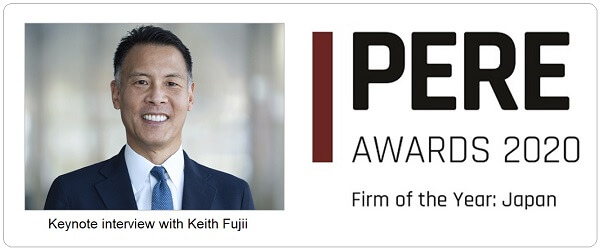
Keith Fujii, Asia Pacific CEO at LaSalle, said: “We are proud to be recognized by the real estate industry as Firm of the Year – Japan. This award is a testament to our team in Japan, who completed a number of diverse real estate opportunities in major markets across the country, including acquisitions, dispositions, developments, asset management and leasing. Despite the challenging year, we were also incredibly pleased to complete the global public offering of LaSalle Logiport REIT in September, which was the first global public offering of a Japanese real estate investment since the start of COVID-19.”
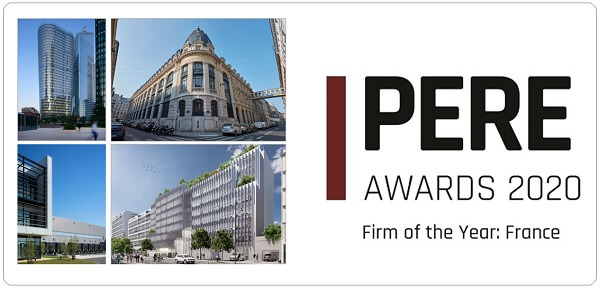
Philip La Pierre, Europe CEO at LaSalle, said: “It is an honour to have won the PERE award for Firm of the Year – France and it is a reflection of our team’s determination to succeed. Being recognized by our industry peers is a huge achievement, so we are delighted to celebrate this. Our team managed several high calibre transactions in France last year, positioning the firm as one of the country’s most active investment managers. We look forward to building on this recognition, while focusing on our clients and strong performance.”
About LaSalle Investment Management
LaSalle Investment Management is one of the world’s leading real estate investment managers. On a global basis, we manage approximately $77 billion of assets in private equity, debt and public real estate investments as of Q4 2021. The firm sponsors a complete range of investment vehicles including open- and closed-end funds, separate accounts and indirect investments. Our diverse client base includes public and private pension funds, insurance companies, governments, corporations, endowments and private individuals from across the globe. For more information please visit www.lasalle.com and LinkedIn.
NOTE: This information discussed above is based on the market analysis and expectations of LaSalle and should not be relied upon by the reader as research or investment advice regarding LaSalle funds or any issuer or security in particular. The information presented herein is for illustrative and educational purposes and is not a recommendation, offer or solicitation to buy or sell any securities or to adopt any investment strategy in any jurisdiction where prohibited by law or where contrary to local law or regulation. Any such offer to invest, if made, will only be made to certain qualified investors by means of a private placement memorandum or applicable offering document and in accordance with applicable laws and regulations. Past performance is not indicative of future results, nor should any statements herein be construed as a prediction or guarantee of future results.


As the world slowly emerges from the worst pandemic since 1918, two of the most frequent questions we hear from investors are: “Will people return to cities? What can we learn from the Asia-Pacific experience?”
Although there are significant differences in the circumstances facing employers, workers, and consumers in each country, we believe it is quite helpful to understand what is occurring in the major cities of the Asia Pacific region as a preview of what might occur in the West. Behavioral influences play a large role. The sooner people are willing to return to their offices, the lower the potential impact on investment performance. Culturally, face-to-face meetings in a formal office setting are often viewed as essential business rituals in countries like China, Japan, and South Korea. In Shanghai, where the re-opening has been the most advanced globally, office demand turned positive in the second quarter of 2020. In Singapore, office demand (net absorption) turned positive in the fourth quarter of 2020, despite the worst economic decline since 1965 and the government’s policy capping office capacity at 50%. Even in the retail sector, which was hit harder by the pandemic than other sectors, occupier demand in Shanghai was positive in 2020. Chinese consumers gradually returned to malls when the health risk largely declined in April (see page 43).
The sooner people are willing to return to their offices, the lower the potential impact on investment performance.

The behavioral approach suggests that human psychology plays an important role in the decisions we make. A rational, fact-based approach to risk assessments and decision-making does not fully explain how people react to dangerous situations and their lingering fears after the danger has passed. The Asian experience seems to demonstrate that “recency bias” can be overcome through confidence-building actions and communications taken by governments and businesses. Despite cautious optimism, uncertainty lingers in major cities like Melbourne and Tokyo (see page 7). Nevertheless, it helps that mask-wearing is fully accepted and ubiquitous across most of the region. During times of uncertainty, behavioral influences on decision making are especially important. For instance, core beliefs, cognitive biases, past experiences, or cultural differences can influence decision making, which could ultimately affect economic and investment outcomes.
We believe the pandemic is a perfect example of why the behavioral approach matters. Asia Pacific’s ability to contain the pandemic is evident in traffic congestion and mobility indices (see pages 7 and 27). Rising mobility is a sign of rising confidence that builds into a virtuous cycle, when it becomes clear that leaving home while wearing a mask and social distancing–does not cause a resurgence of COVID. The pandemic control policies followed in major Asia Pacific countries, even before vaccine rollout, have a positive correlation with the region’s economic resilience, particularly in China, South Korea, Australia, and Singapore. The return of social and economic activities and real estate demand in Asia Pacific show what the West may be able to look forward to, as rising immunity levels in Europe and North America are likely to enable the same virtuous cycle of mobility and activity.
The rollout of COVID-19 vaccines will first help restore domestic activities, particularly in countries that were not able to control the spread of the virus in 2020– a critical step to repair their economies. Ultimately, for the global economy to reach the “new normal”, most likely a significant portion of the world population will need to be vaccinated. However, for now, the reality is that international border controls are getting stricter even in countries where vaccine rollouts have been the most advanced (e.g., the United Kingdom, in part, due to new strains of COVID-19); and in parts of the world that have been the most successful in controlling COVID-19, quarantine and social distancing rules remain stringent (e.g., Australia and Singapore) to ensure the momentum of the domestic recovery continues.
Looking forward, each country has a different vaccination rollout schedule and it could take some time for immunity to rise to levels that vastly reduce the risk of getting infected (see pages 6, 50). In the meantime, the upcoming economic and real estate recovery in most countries will rely more heavily on domestic demand. The experience of Asia Pacific shows us that a return to cities is not only possible, but probable, when both the behavioral and the biological effects of the coronavirus are tamed.
LaSalle is proud to be a supporter of Blue for Japan (BFJ), a non-profit organization that supports orphaned children and is dedicated to providing them with housing, resources and educational opportunities. In Japan, there are about 30,000 children living in orphanages and about 5,000 children living in foster care. Typically, when children living at these facilities reach age 18-20, they are required to leave the orphanages and become independent. While resources like housing and job opportunities are provided, the transition can be difficult for many of these young people, and they often feel isolated, unprepared and stressed. This can cause them to leave jobs, stop paying rent, or deal with other financial and personal struggles.
In order to help combat this, organizations like BFJ provide as many resources as possible to help children succeed and prepare for their life outside of the facilities in which they grow up. BFJ’s specific focus has expanded into assisting orphanages across Japan. However, BFJ’s reach is limited. Due to a huge increase in remote learning requirements because of the pandemic, the children being served by BFJ have been materially affected as they do not have access to computers or devices for online education. LaSalle’s donations over the years, including a gift of ¥1 million (approximately US$10,000) in December 2020, have allowed the organization to purchase 20 refurbished PCs for the children, which will give them access to vast educational and learning opportunities.
These children are already at a disadvantage given their circumstances, so it brings me happiness that we can provide them some support to make their life better. It’s wonderful to be able to help these children become independent adults, through providing resources to help them access good educational and job opportunities.
– Ichiro Hikosaka, Managing Director, Leasing Management, and a dedicated volunteer with BFJ
LaSalle has worked with BFJ since 2018, when Keith Fujii, LaSalle’s Asia Pacific CEO and then-CEO of Japan, wanted to find a way to become more involved in community efforts. Hikosaka-san was able to make a connection with LaSalle and BFJ, and the organization was selected as one of the charities in which to support. Subsequently each year, LaSalle Japan has selected BFJ as their annual charity to support during the holiday season. LaSalle has donated $33,500 to the organization since 2018, and still plans this year to help the organization in whatever ways possible.
“I am a passionate volunteer for this organization, and it is great to see LaSalle has offered support each year to make a big impact,” said Hikosaka-san. “Team members and I have attended events organized by Blue for Japan over the years as well, and LaSalle continues to provide direct contributions to make a difference.”
For Hikosaka-san, this work underscores the important role we all play in our collective society to take care of those in need.
“As human beings, we need to help each other,” he said. “It makes me happy to work for a company like LaSalle where I can give and share what I have. Especially to children who need it most.”
Asia Pacific has come through the pandemic in stronger shape than any other region to date. Uncertainty will remain a dominant theme in 2021, although there are signs of bifurcated economic and real estate market performance in the region, according to the LaSalle Investment Strategy Annual (ISA) 2021.
China, in particular, is exhibiting a V-shaped recovery amid the pandemic-led recession. The success of the region can be largely contributed to the role of governments, high trust in local institutions, ultra-accommodative monetary policies, and the record size of fiscal stimulus packages in major Asia Pacific countries. The vaccine deployment in the region is also expected to further support the recovery. These stabilizing influences accompanied by trends we have identified in the past—the rise of intra-regional trade and the steady rise of transparency—help reduce the effects of post-pandemic uncertainty.
Countries with relative success in keeping the pandemic under control, a significantly large domestic demand base, effective monetary and fiscal stimulus packages, and room for more stimulus are expected to lead the economic recovery in the region. The ranking of the relative strength of major Asia Pacific economies in a post-pandemic outlook has China leading, followed by Japan, South Korea, Singapore, Australia, and Hong Kong. This reinforces our conviction that domestic and intra-regional recovery in Asia Pacific will contribute more to the economic recovery in the region than external influences from outside the region.
Real estate sector shift
The pandemic has accelerated the shift toward online retailing, enhancing the strong demand for logistics. The increase in logistics transaction volume has primarily been at the expense of the retail sector. The robust investor demand for logistics facilities across the globe and in the Asia Pacific region in recent years is expected to expand the investable universe of the sector in 2021 and beyond. The pandemic has also accelerated the attractiveness of multi-families in Japan, the only institutionalized multi-family market in Asia Pacific, and the rise of the multi-family sector in the rest of the region, for example China. The ongoing sector shift is likely to drive investors, particularly asset allocators, to broaden their real estate portfolios to include more logistics and multi-family assets in Asia Pacific as a way to complement other property types.
Jacques Gordon, Global Head of Research and Strategy at LaSalle, said: “In the 2021 edition of the ISA, our advice for investors is to hold the course. On the other side of the pandemic lies a landscape that real estate investors will recognize, even if it will also be different in surprising ways. The strength of the post-vaccine recovery could be one of those surprises. The secular trends we follow have been simultaneously accelerated and interrupted, and as a result, we undertake a global look at the future of the mainline property types, while also focusing on the rise of viable alternatives.”
Keith Fujii, Asia Pacific CEO at LaSalle, said: “Compared to other regions around the world, several Asia Pacific countries have been the first to be on the path of economic recovery. That means we will continue to see strong investor appetite this year for Asia Pacific real estate, particularly in Japan with sustained resiliency and China where the economy and property markets are rebounding. The shift to digital commerce is expected to continue in 2021 and so will the capital flows into logistics assets in the region. Broad-based distress is unlikely in the region, but there’s potential for some distressed or repricing opportunities from financially challenged developers and asset owners.”
Elysia Tse, Head of Asia Pacific Research and Strategy at LaSalle, said: “The future of office properties has been the most debated among major property types globally. We believe there are a few key areas that differentiate major office markets in Asia Pacific. First, the human behavioral influence on tenant occupancy decisions – the progress of returning to the office has been the most advanced in Asia Pacific – the sooner people can and are willing to return to work in their offices, the lesser the permanent impact of remote working on the future of offices. Second, a cultural element, face-to-face meetings in a formal office setting represent high business value and are viewed as essential business rituals in countries such as China, Japan, and South Korea. Third, the relatively small residential unit size in several highly urbanized Asian cities, for example in Japan, makes working from home challenging in the long term. One of the key values of physical office space is collaboration. Despite the relative success of working from home, it is likely to be one of the options, but not a permanent replacement for office space in major Asia Pacific markets.”
LaSalle clients can view the full report at: www.lasalle.com/isa
About LaSalle Investment Management
LaSalle Investment Management is one of the world’s leading real estate investment managers. On a global basis, we manage approximately $77 billion of assets in private equity, debt and public real estate investments as of Q4 2021. The firm sponsors a complete range of investment vehicles including open- and closed-end funds, separate accounts and indirect investments. Our diverse client base includes public and private pension funds, insurance companies, governments, corporations, endowments and private individuals from across the globe. For more information please visit www.lasalle.com and LinkedIn.
NOTE: This information discussed above is based on the market analysis and expectations of LaSalle and should not be relied upon by the reader as research or investment advice regarding LaSalle funds or any issuer or security in particular. The information presented herein is for illustrative and educational purposes and is not a recommendation, offer or solicitation to buy or sell any securities or to adopt any investment strategy in any jurisdiction where prohibited by law or where contrary to local law or regulation. Any such offer to invest, if made, will only be made to certain qualified investors by means of a private placement memorandum or applicable offering document and in accordance with applicable laws and regulations. Past performance is not indicative of future results, nor should any statements herein be construed as a prediction or guarantee of future results.


LaSalle Investment Management (“LaSalle”), the global real estate investment manager, today announced the acquisition of two logistics facilities on behalf of LaSalle China Logistics Venture (“LCLV” or the “Fund”). LaSalle’s first dedicated China logistics vehicle, the Fund invests in modern logistics facilities in markets with strong fundamentals.
Purchased as a portfolio of two completed assets from an e-commerce retailer in China, the new additions add close to 139,273 square metres of modern Grade A logistics facilities to LCLV and are located in well-established logistics markets. The first is a Grade A warehouse located in Tianjin Wuqing, a satellite market of Beijing, which is 35 kilometres Beijing Daxing Airport and only 80 kilometres from Beijing city centre. It is an ideal hub for city and regional distribution in a market where high-grade properties command a premium.
The second facility newly acquired for LCLV is located in Suzhou Industrial Park, one of the largest national development zones in China and a model of successful industrial park development. It is close to the central business district of Suzhou, a hub of international trade and business, and is only 65 kilometres from Shanghai’s central business district. Future supply in the area is highly limited and demand continues to be robust.
Since closing in Q3 2020, portfolio occupancy has improved from 37% to 93%.
Together, these properties represent the eighth acquisition for LCLV. The Fund’s portfolio now spans key logistics regions in China, from prime Shanghai and Beijing markets to South China’s Greater Bay Area.
Mark Gabbay, CEO Asia Pacific of LaSalle Investment Management, said: “The Covid-19 pandemic has underscored the importance of efficient distribution. As China leads the economic recovery in Asia Pacific into 2021 and beyond, LCLV is giving investors access to potentially attractive investment opportunities via quality logistics assets in China, where warehouse tenants increasingly show a preference for Grade A facilities.”
Claire Tang, Head of Greater China at LaSalle Investment Management, said: “These well-located facilities are an excellent fit for LCLV and highlight our ability to seize opportunities to expand our portfolio through the acquisition of high-quality assets. Modern logistics facilities have been a key investment focus for LaSalle, and the market fundamentals for China logistics remain compelling.”
LaSalle has a long track record in China logistics, completing more than US$2.1 billion of transactions since 2008. It debuted LCLV in 2019, completing the first close of the Fund in April 2020 with initial capital commitments of US$681 million and a diverse mix of investors from Europe, the Middle East, and Asia. LaSalle currently manages over US$4 billion of logistics investments across key markets in Asia, including China, Japan and Korea.
About LaSalle Investment Management
LaSalle Investment Management is one of the world’s leading real estate investment managers. On a global basis, we manage approximately $77 billion of assets in private equity, debt and public real estate investments as of Q4 2021. The firm sponsors a complete range of investment vehicles including open- and closed-end funds, separate accounts and indirect investments. Our diverse client base includes public and private pension funds, insurance companies, governments, corporations, endowments and private individuals from across the globe. For more information please visit www.lasalle.com and LinkedIn.
NOTE: This information discussed above is based on the market analysis and expectations of LaSalle and should not be relied upon by the reader as research or investment advice regarding LaSalle funds or any issuer or security in particular. The information presented herein is for illustrative and educational purposes and is not a recommendation, offer or solicitation to buy or sell any securities or to adopt any investment strategy in any jurisdiction where prohibited by law or where contrary to local law or regulation. Any such offer to invest, if made, will only be made to certain qualified investors by means of a private placement memorandum or applicable offering document and in accordance with applicable laws and regulations. Past performance is not indicative of future results, nor should any statements herein be construed as a prediction or guarantee of future results.

